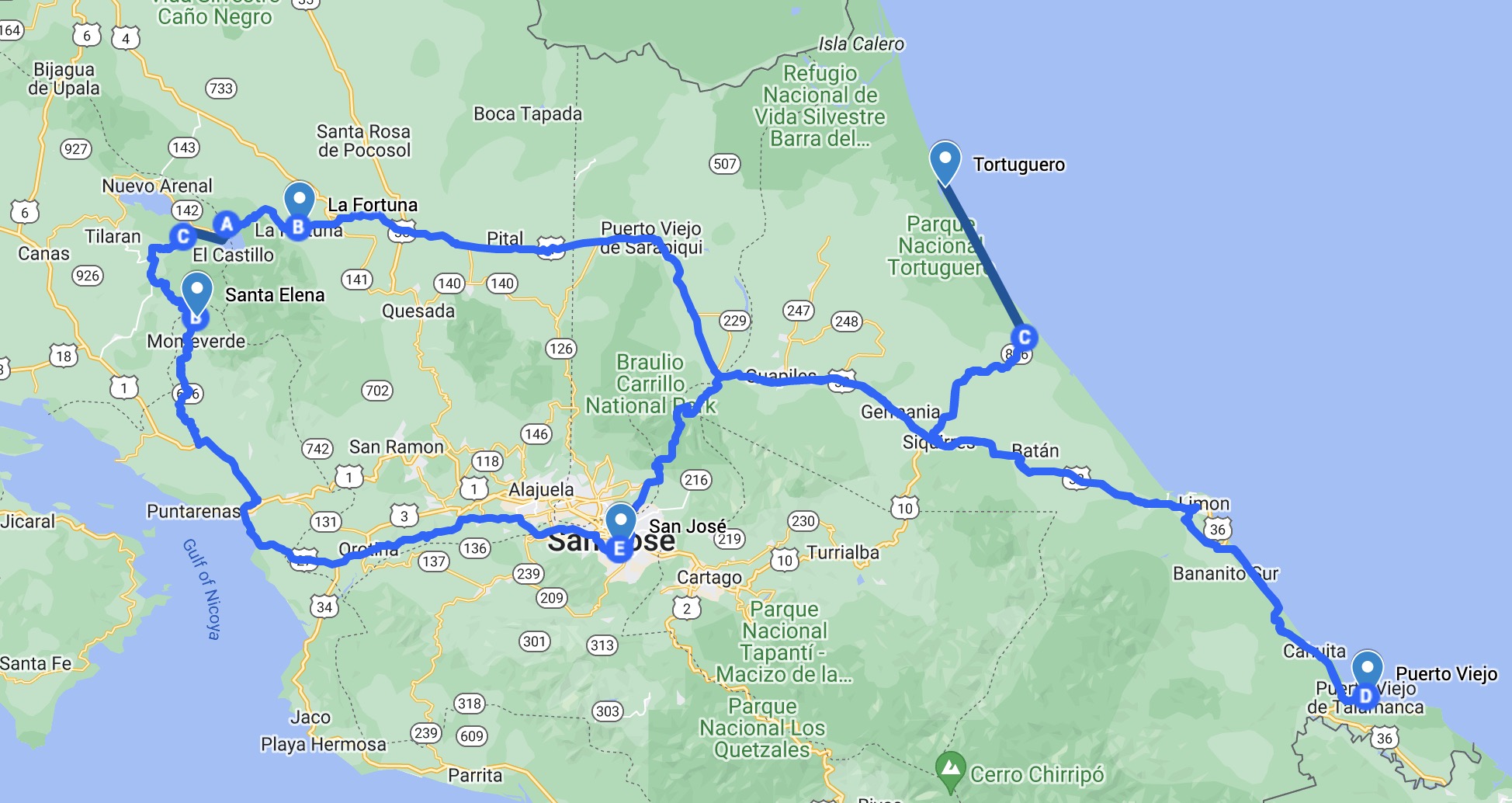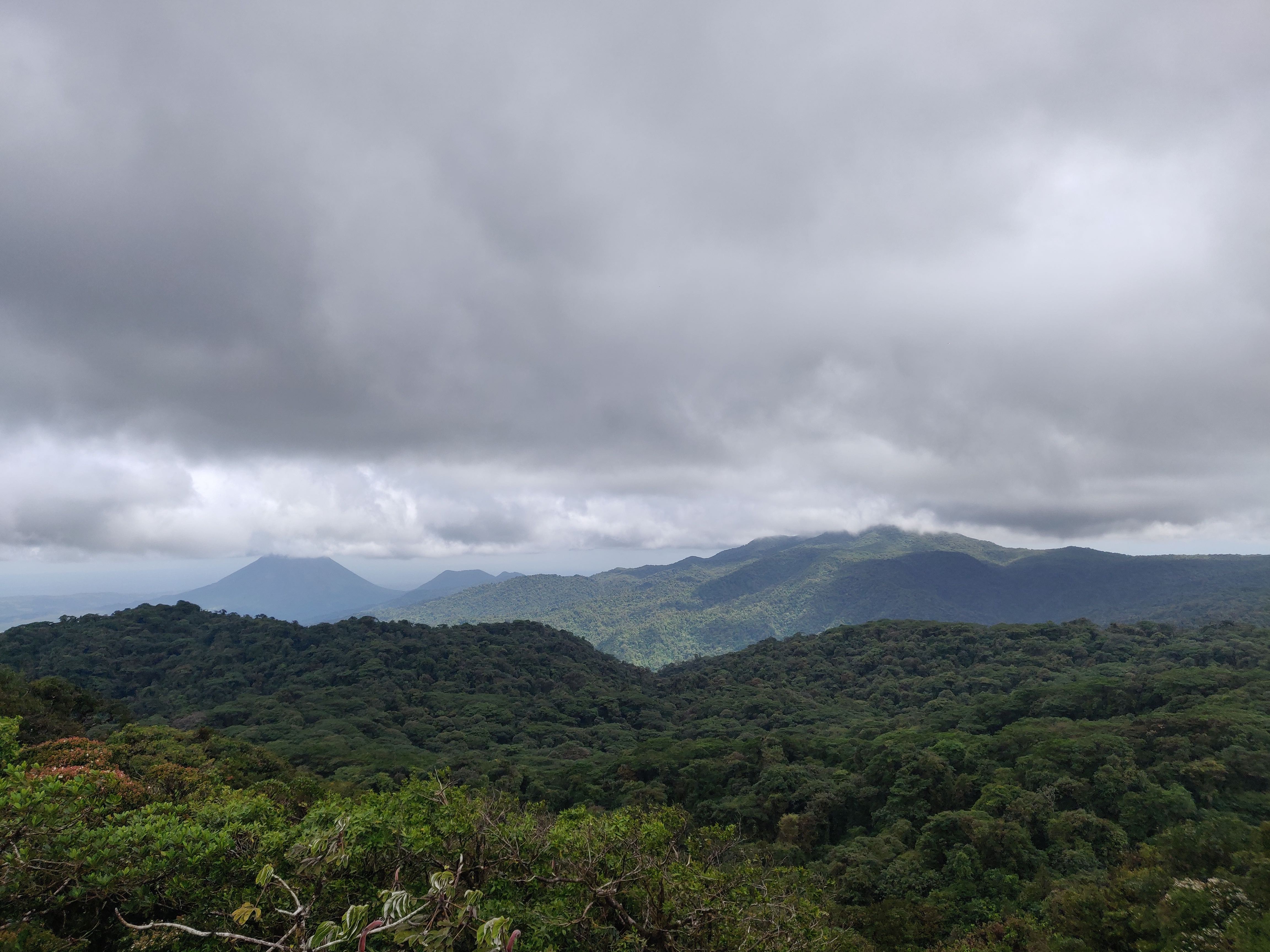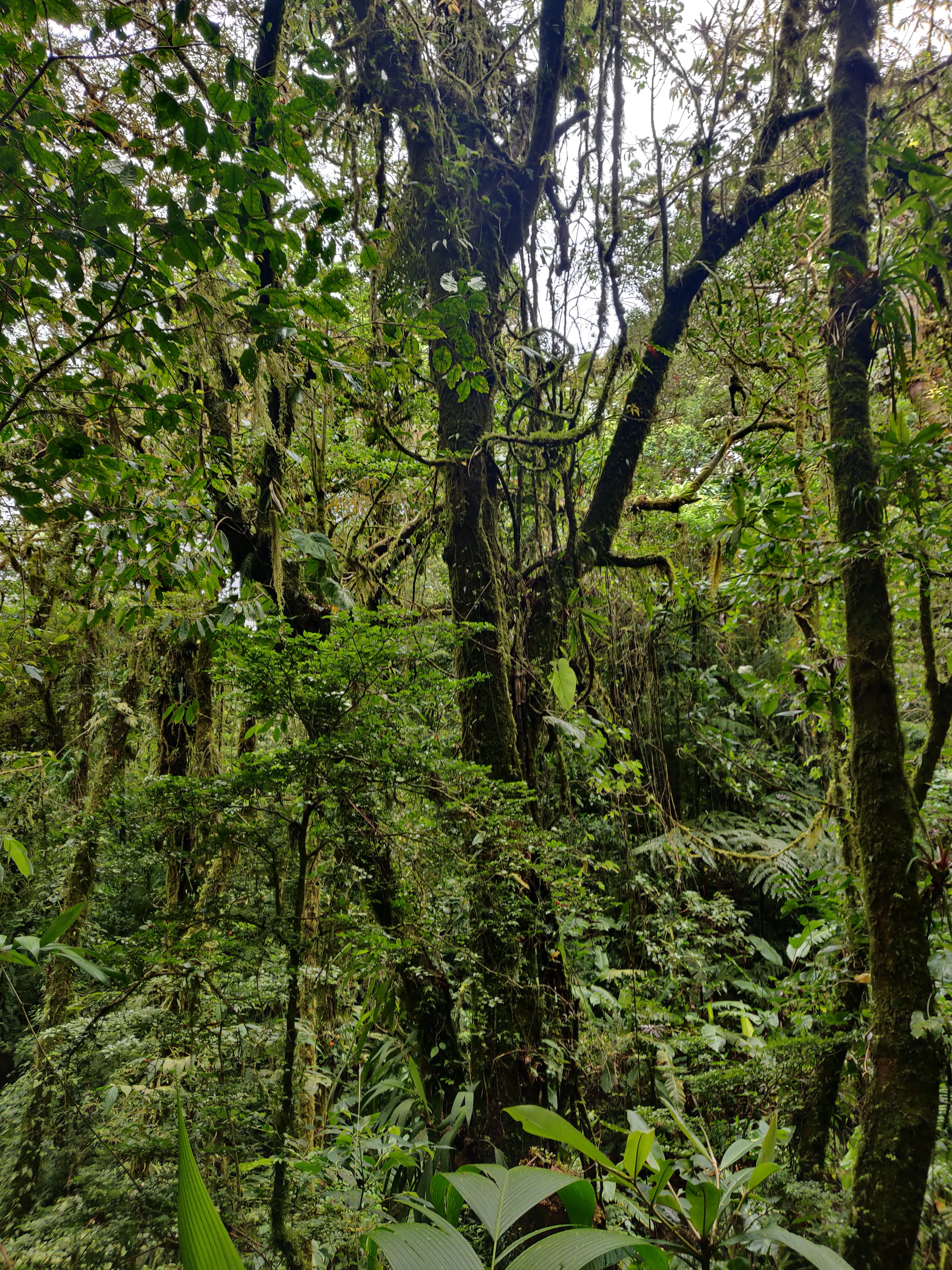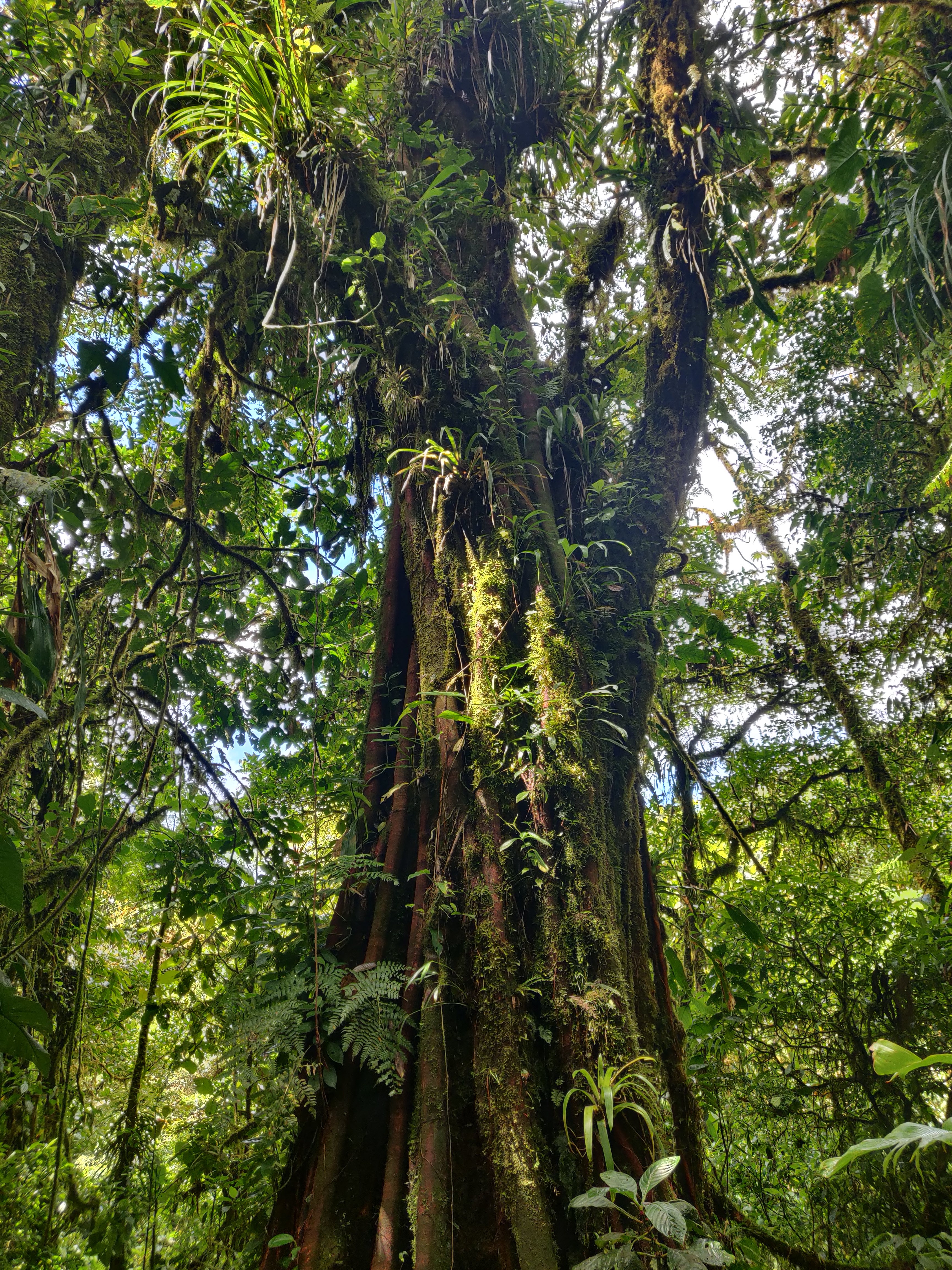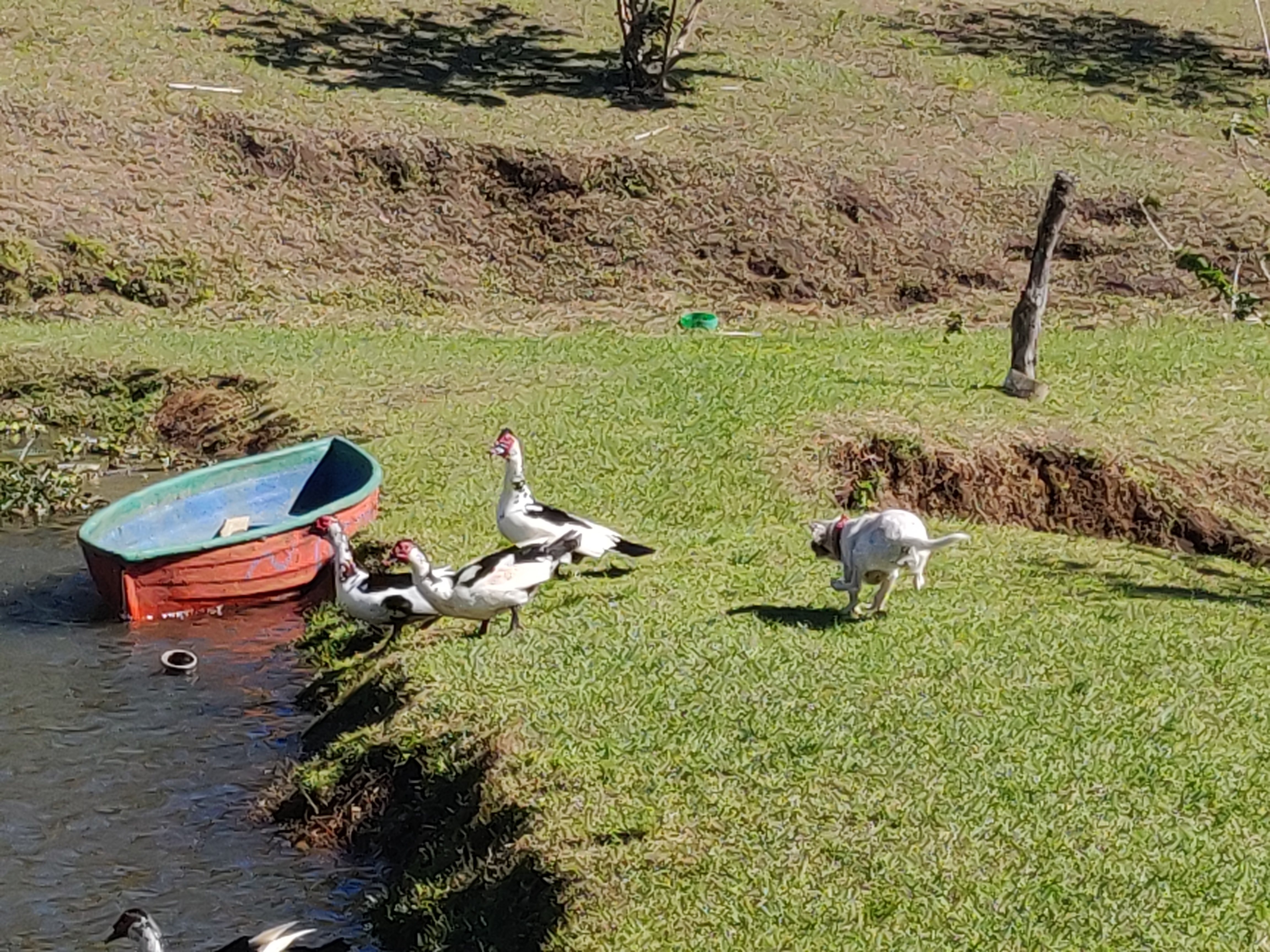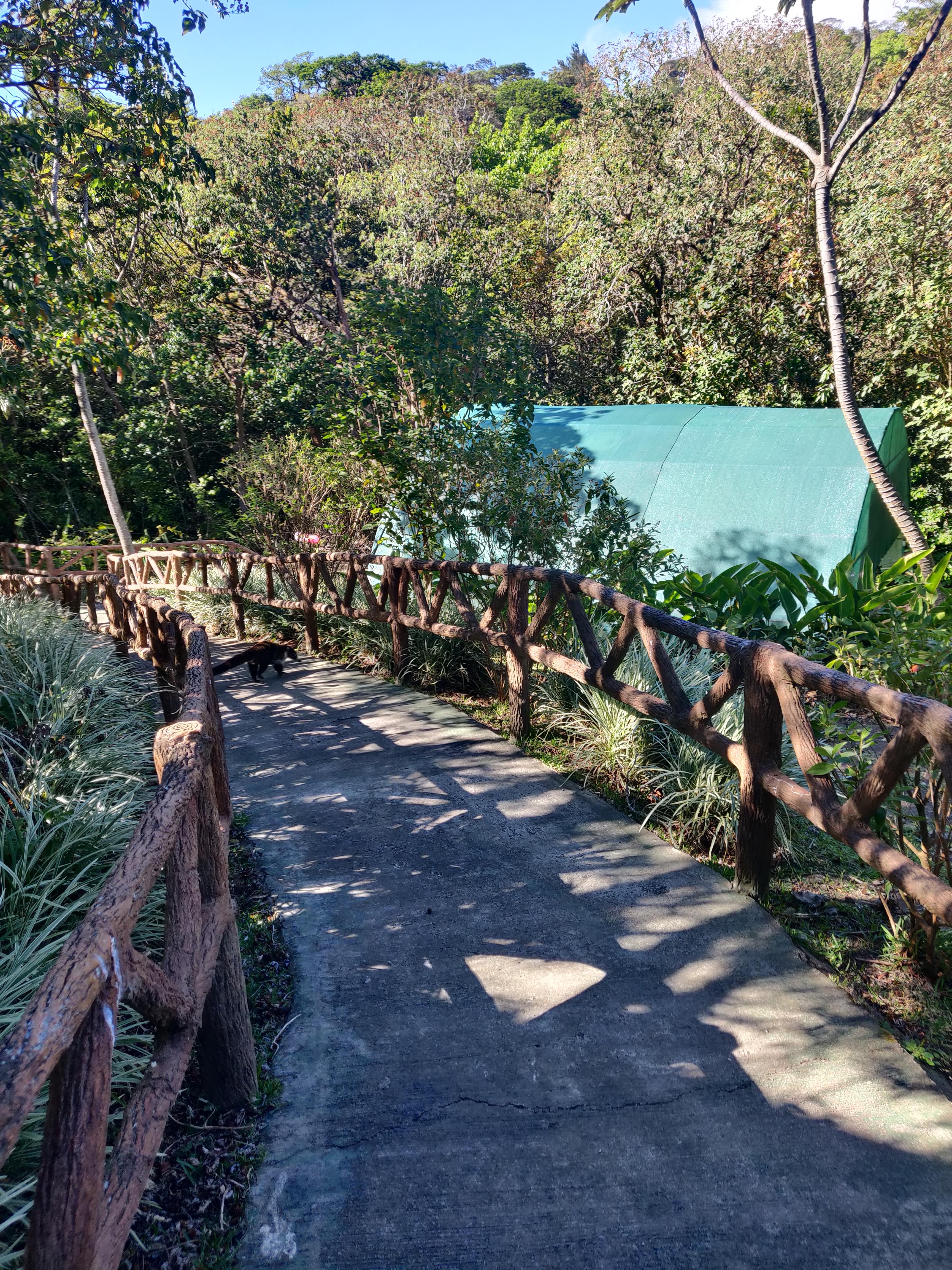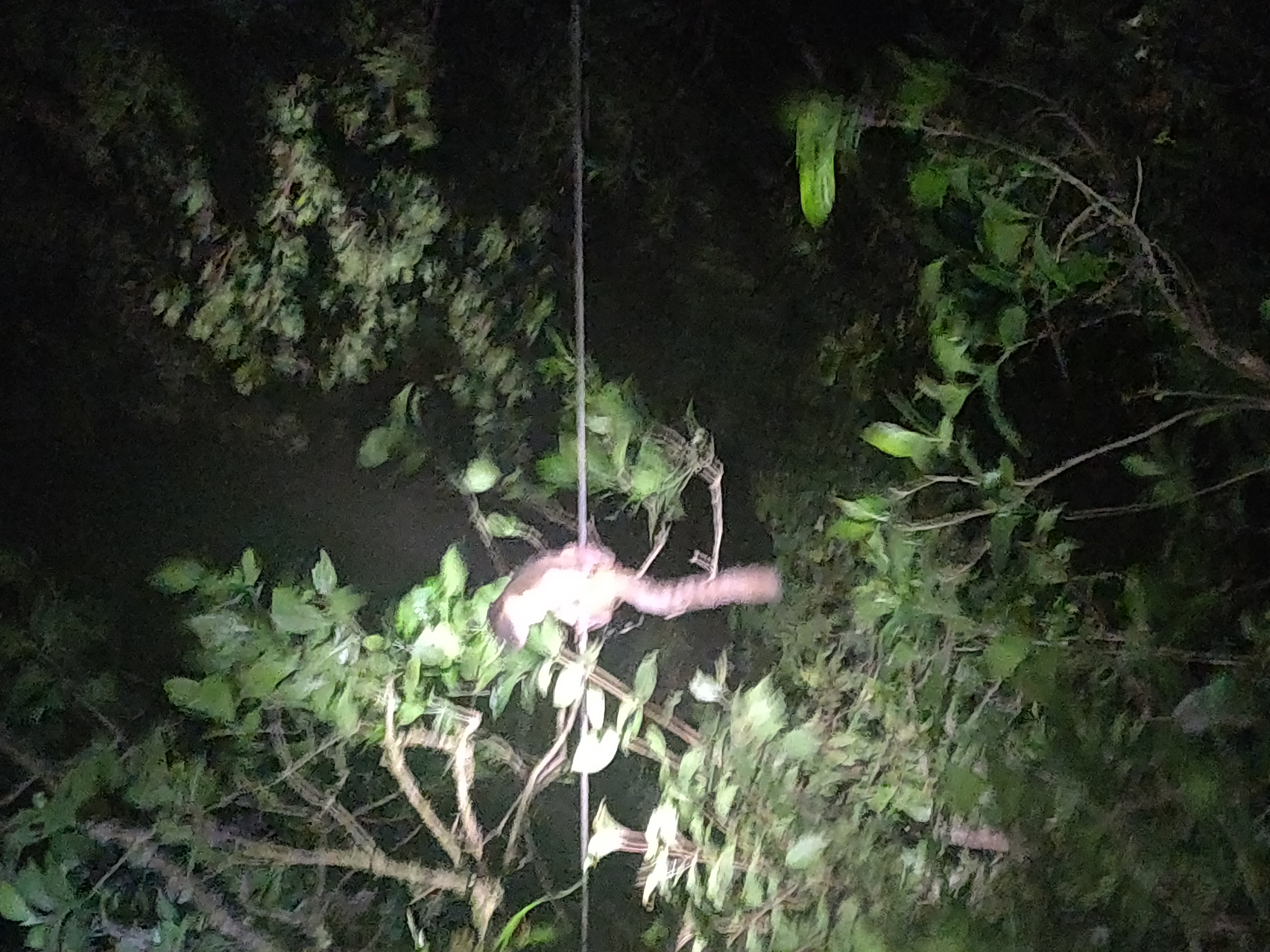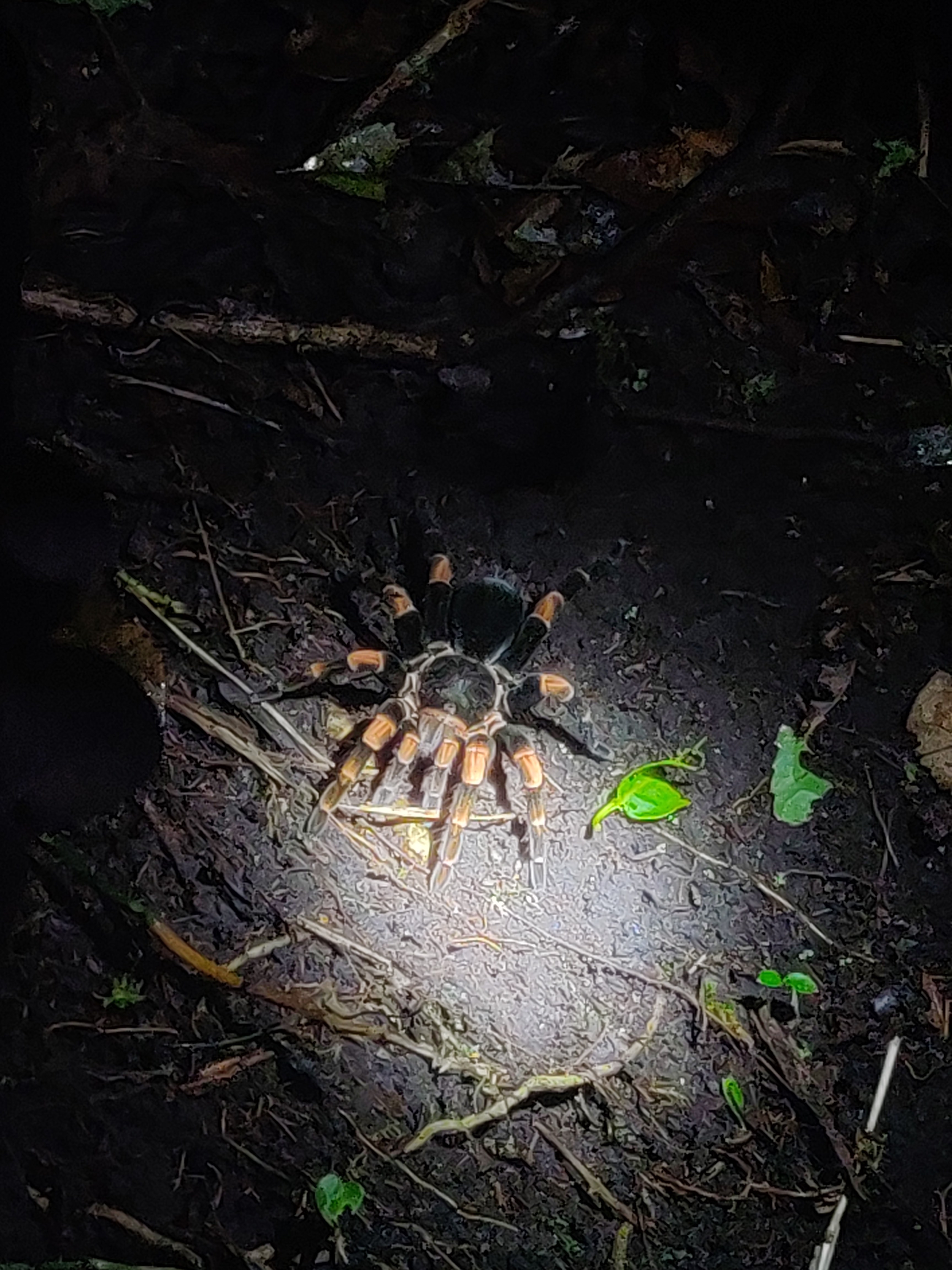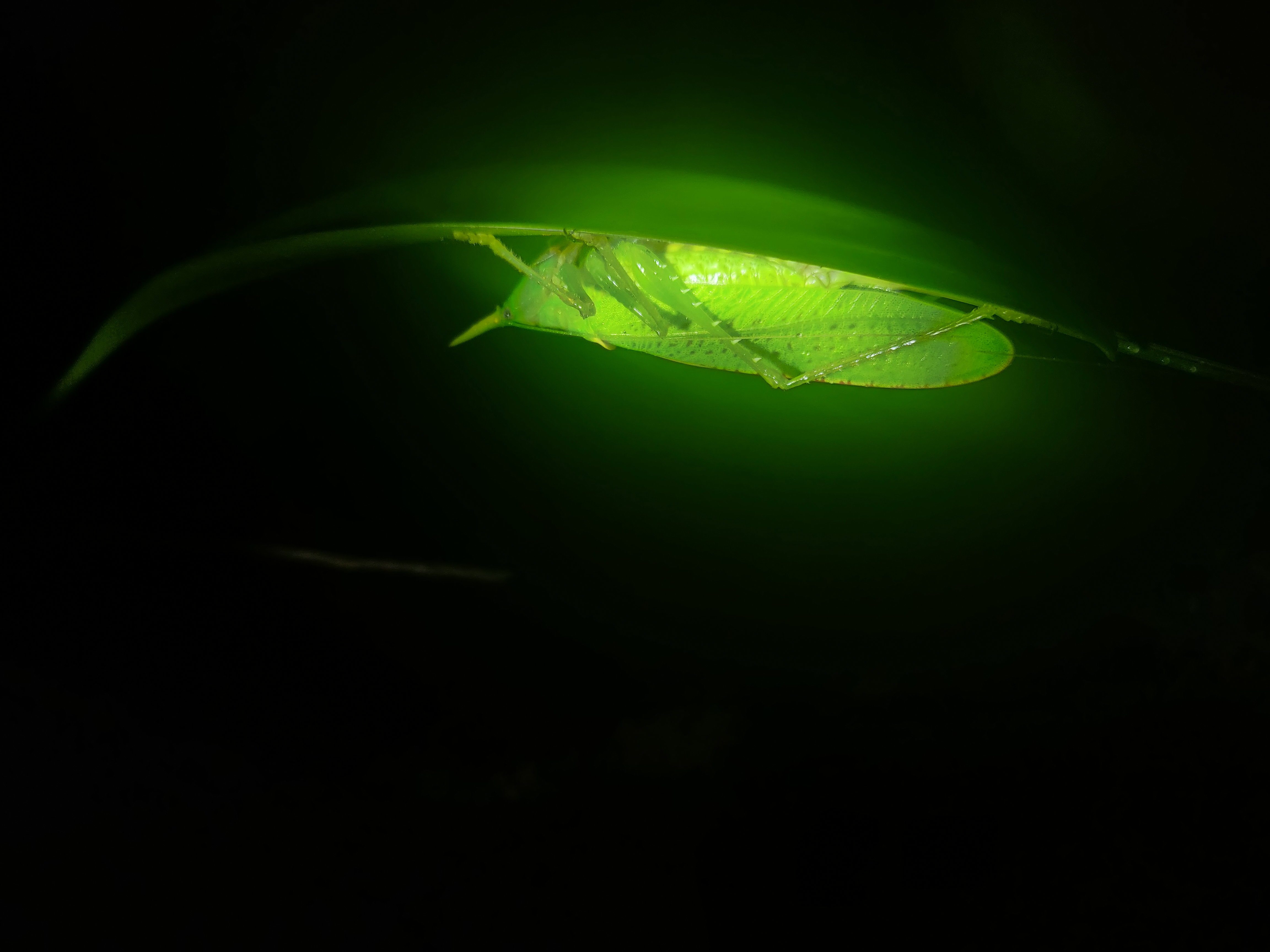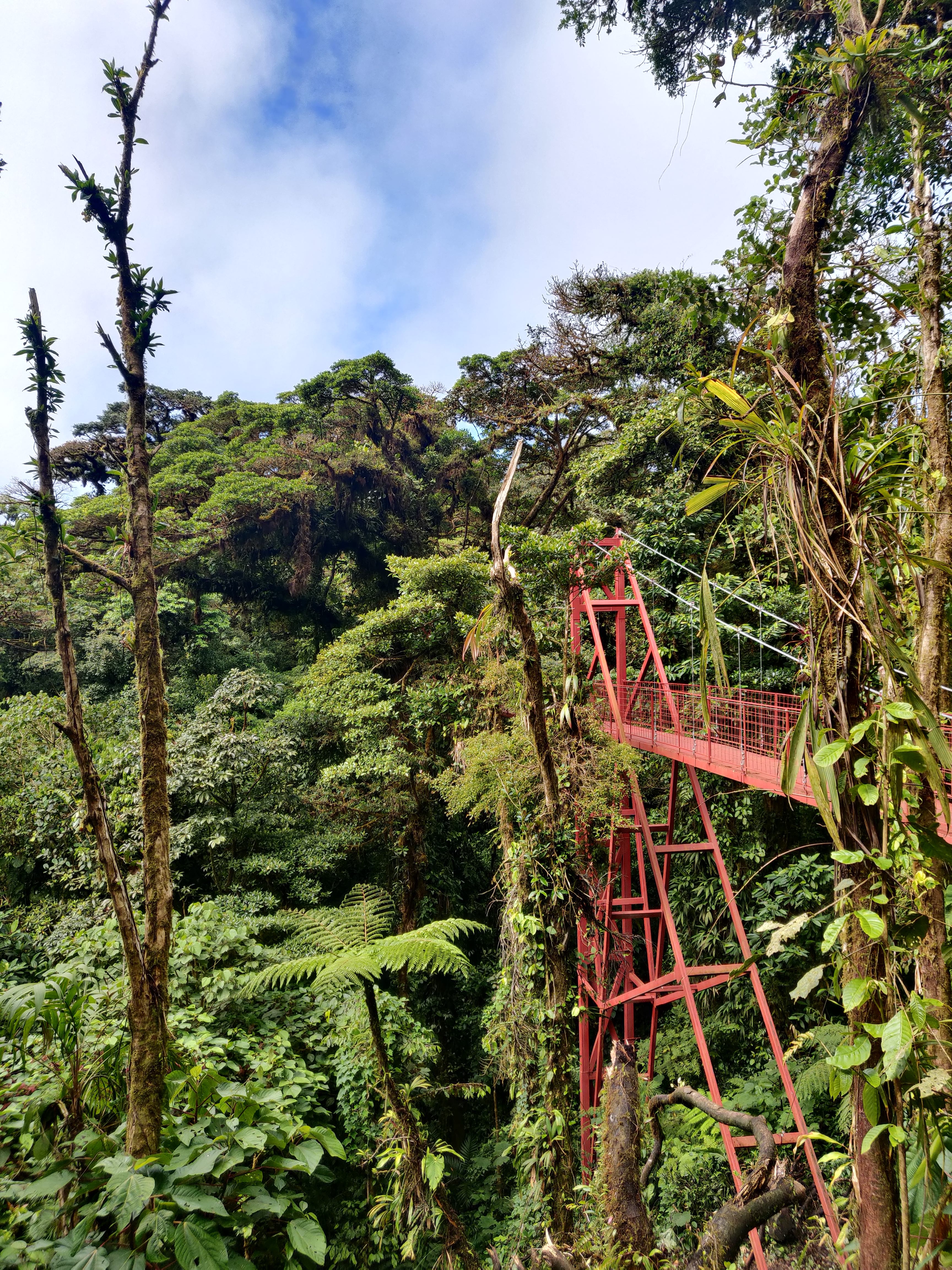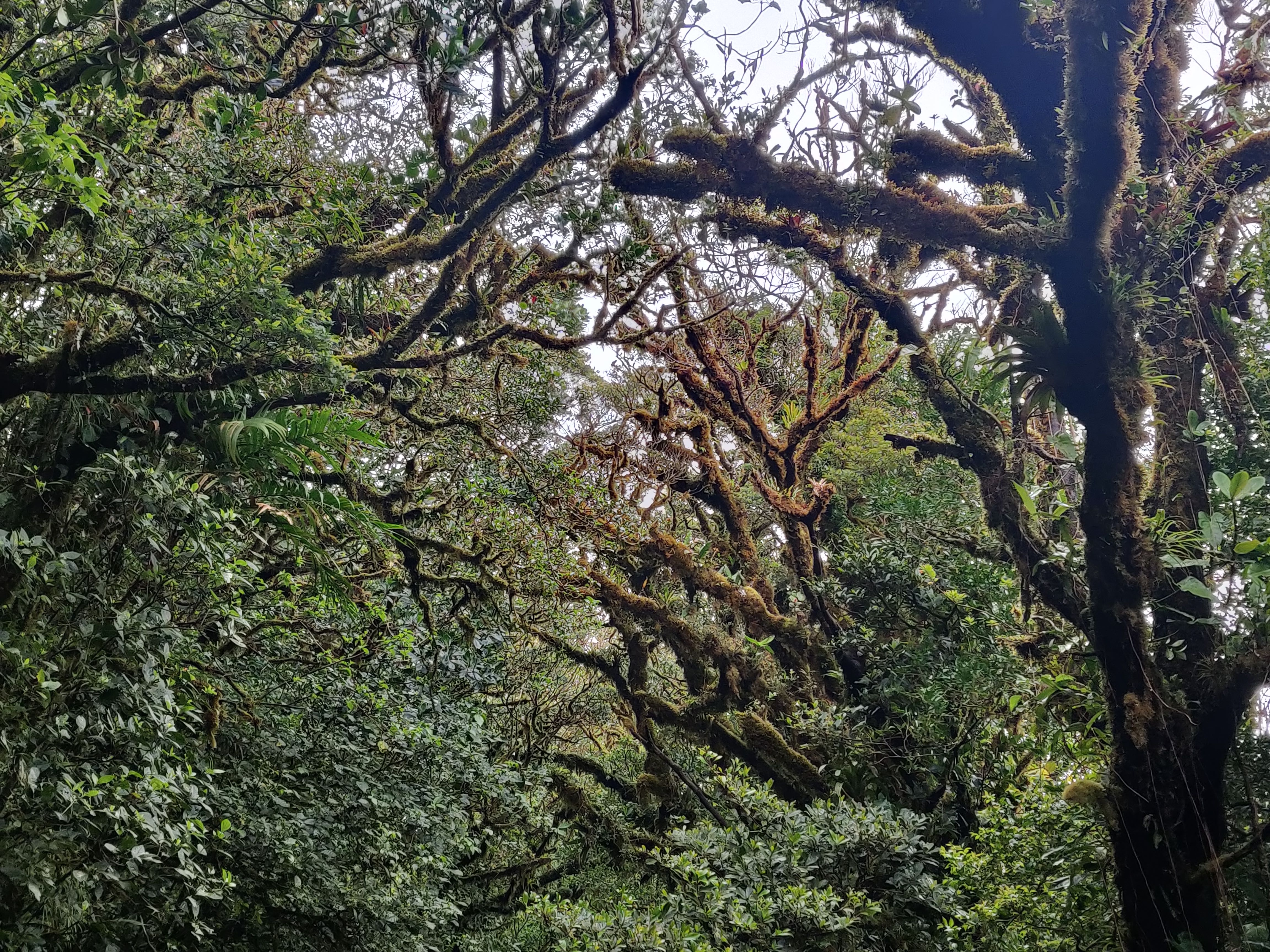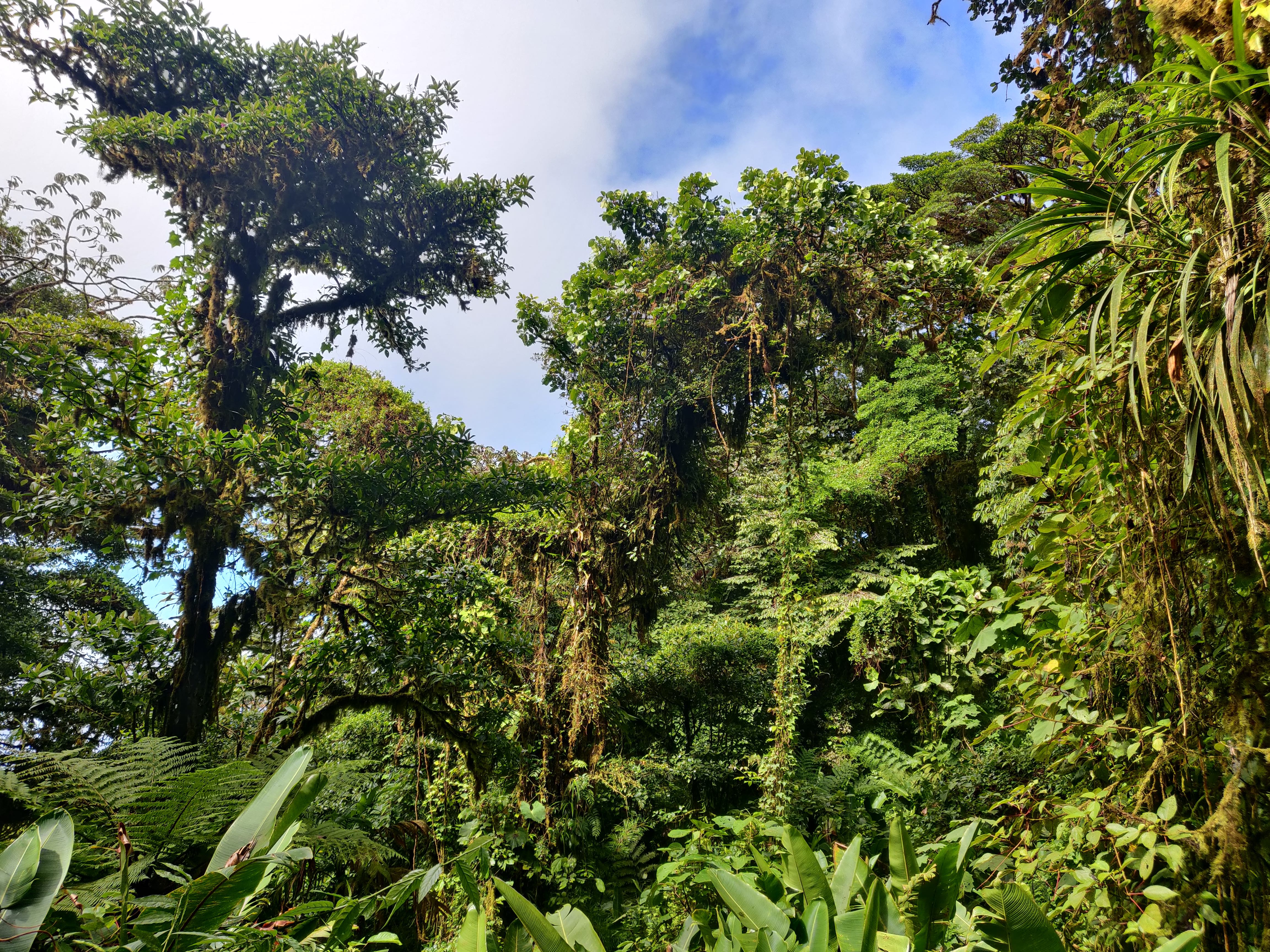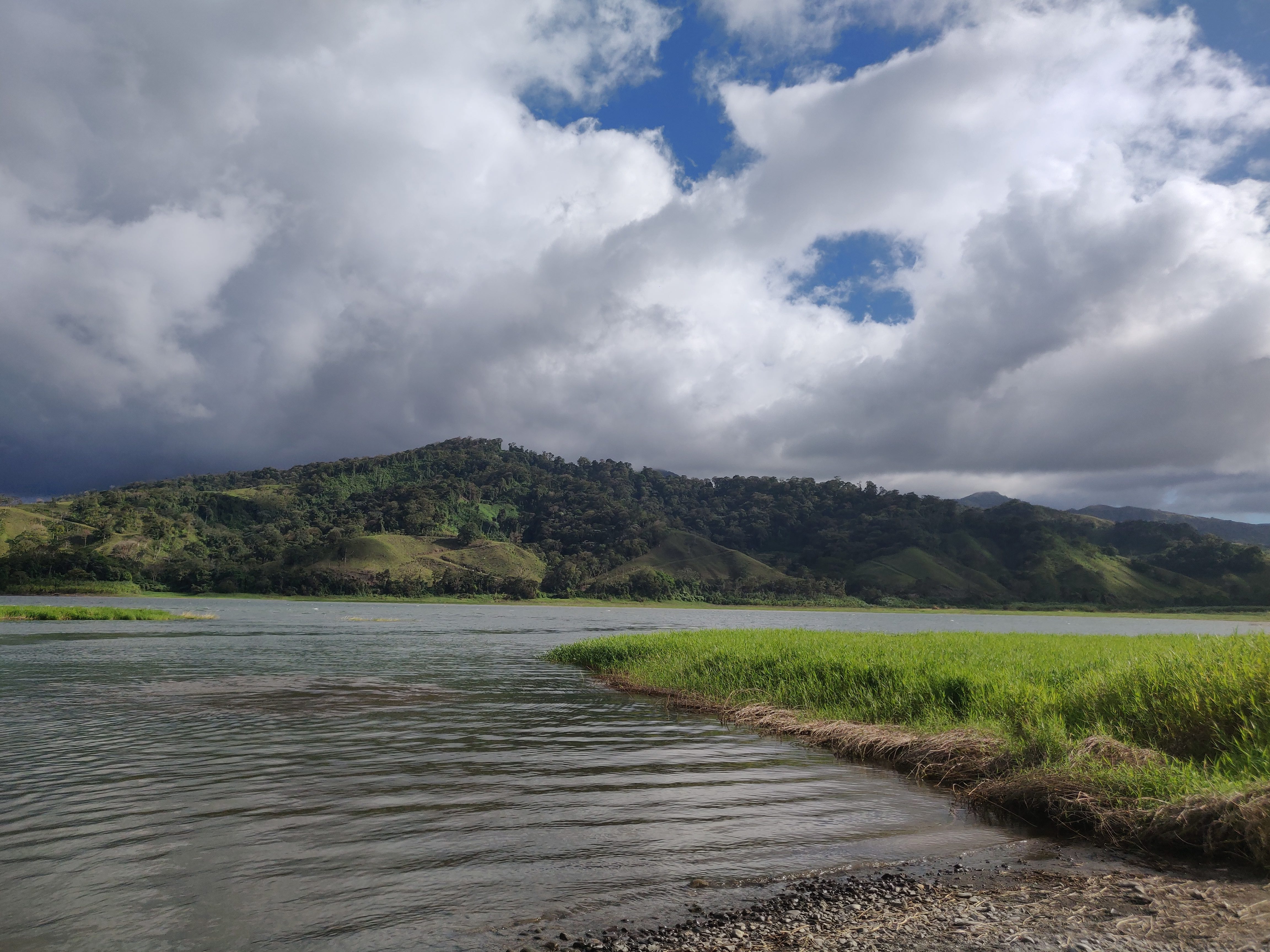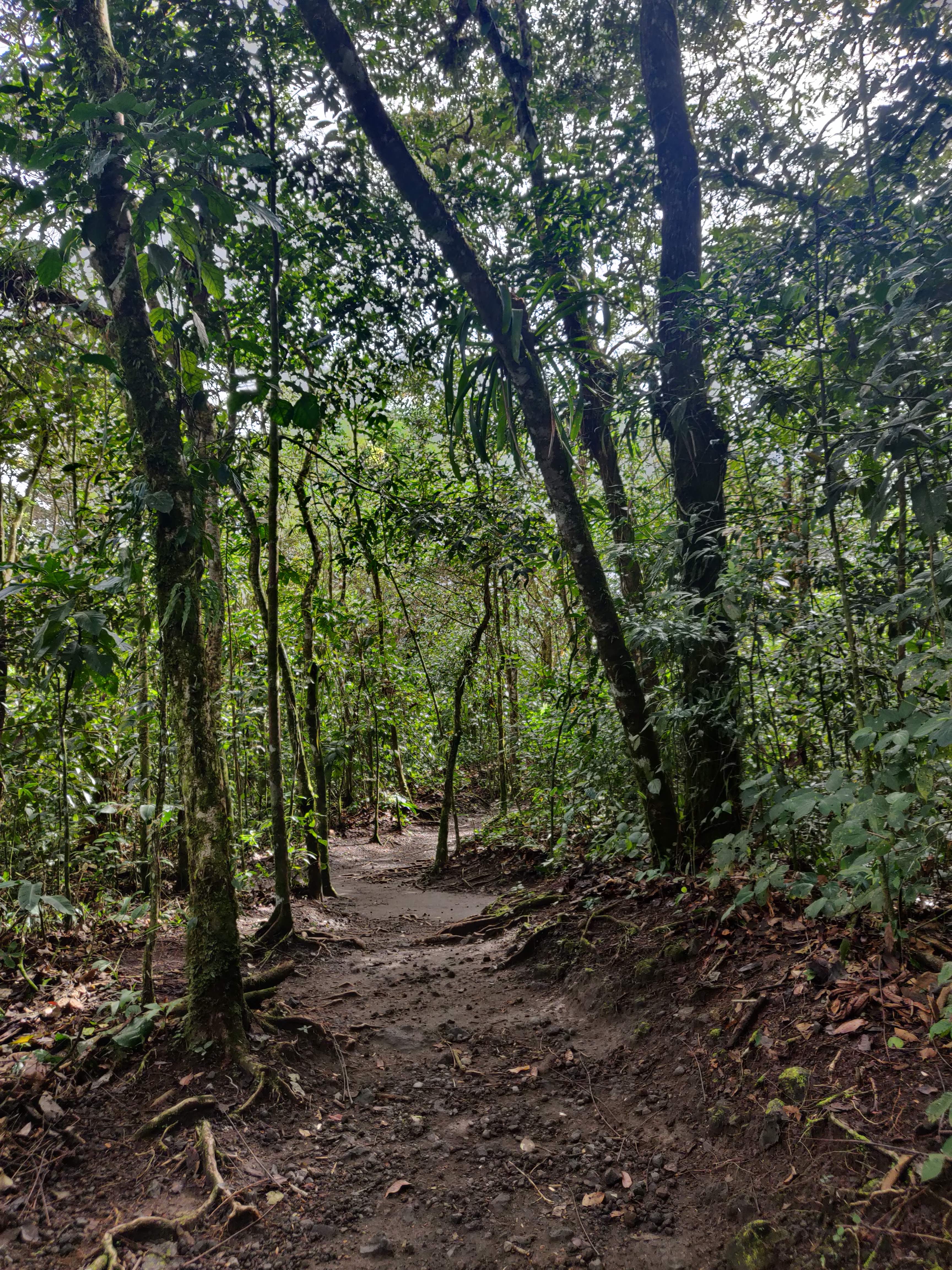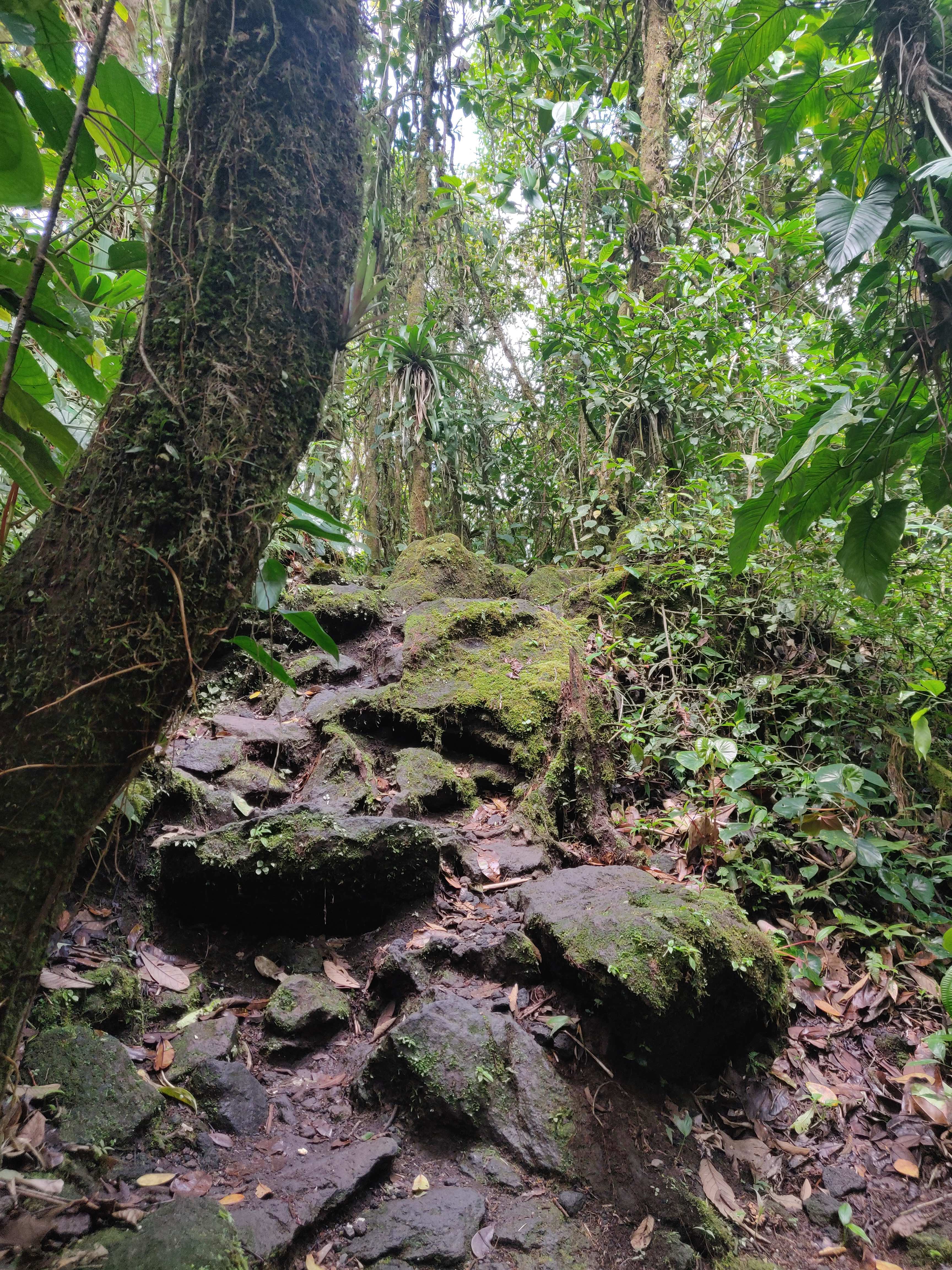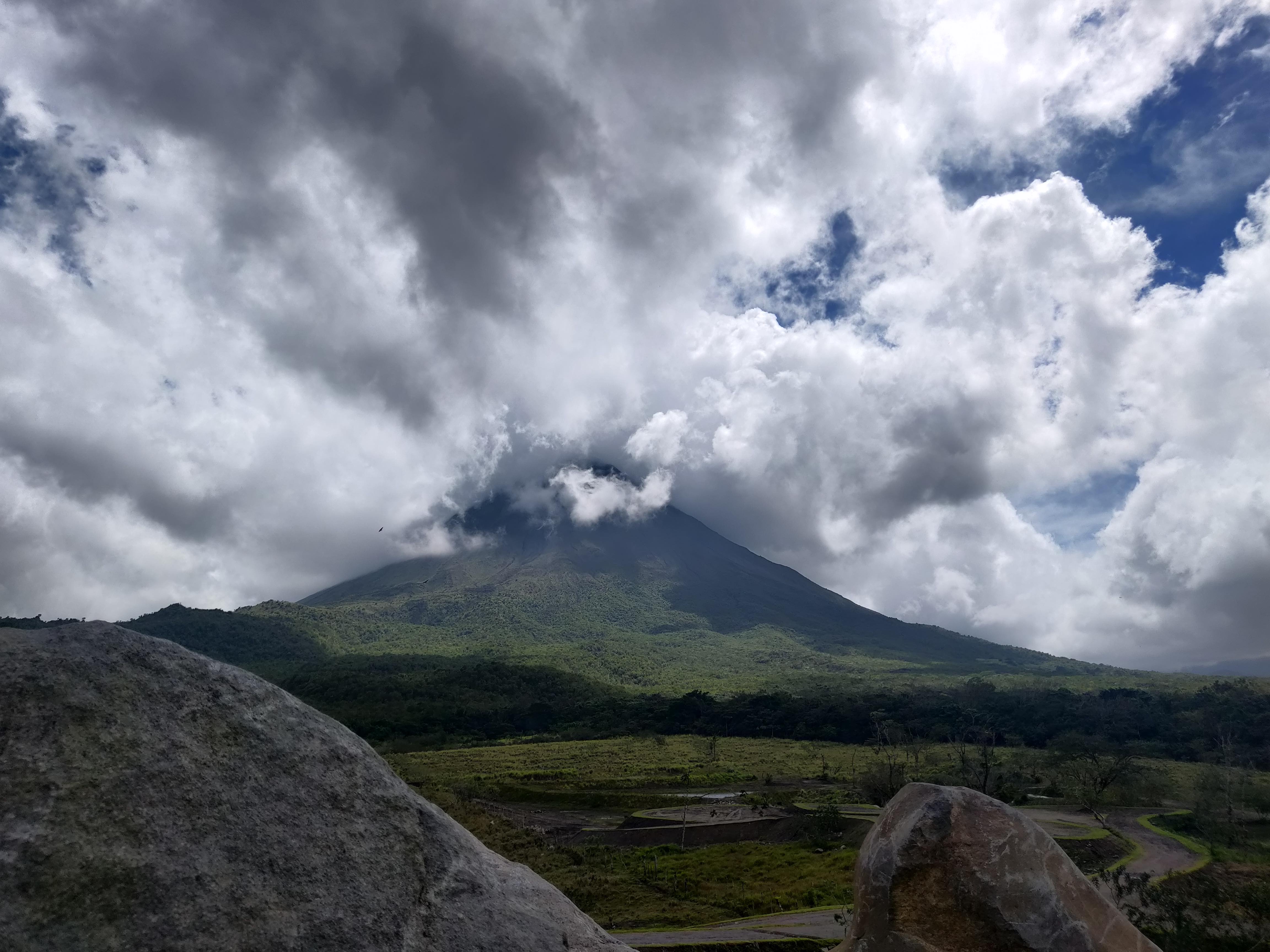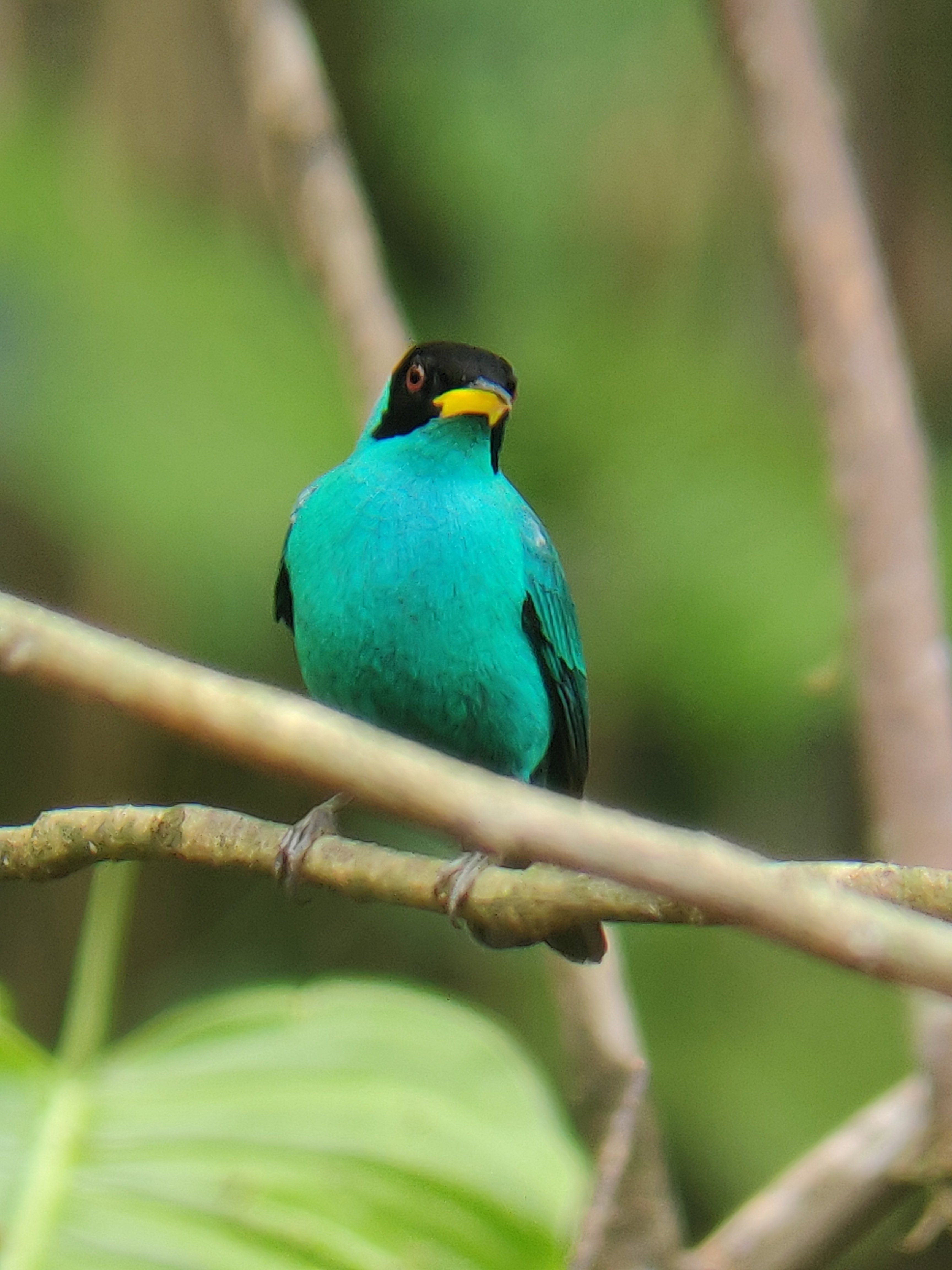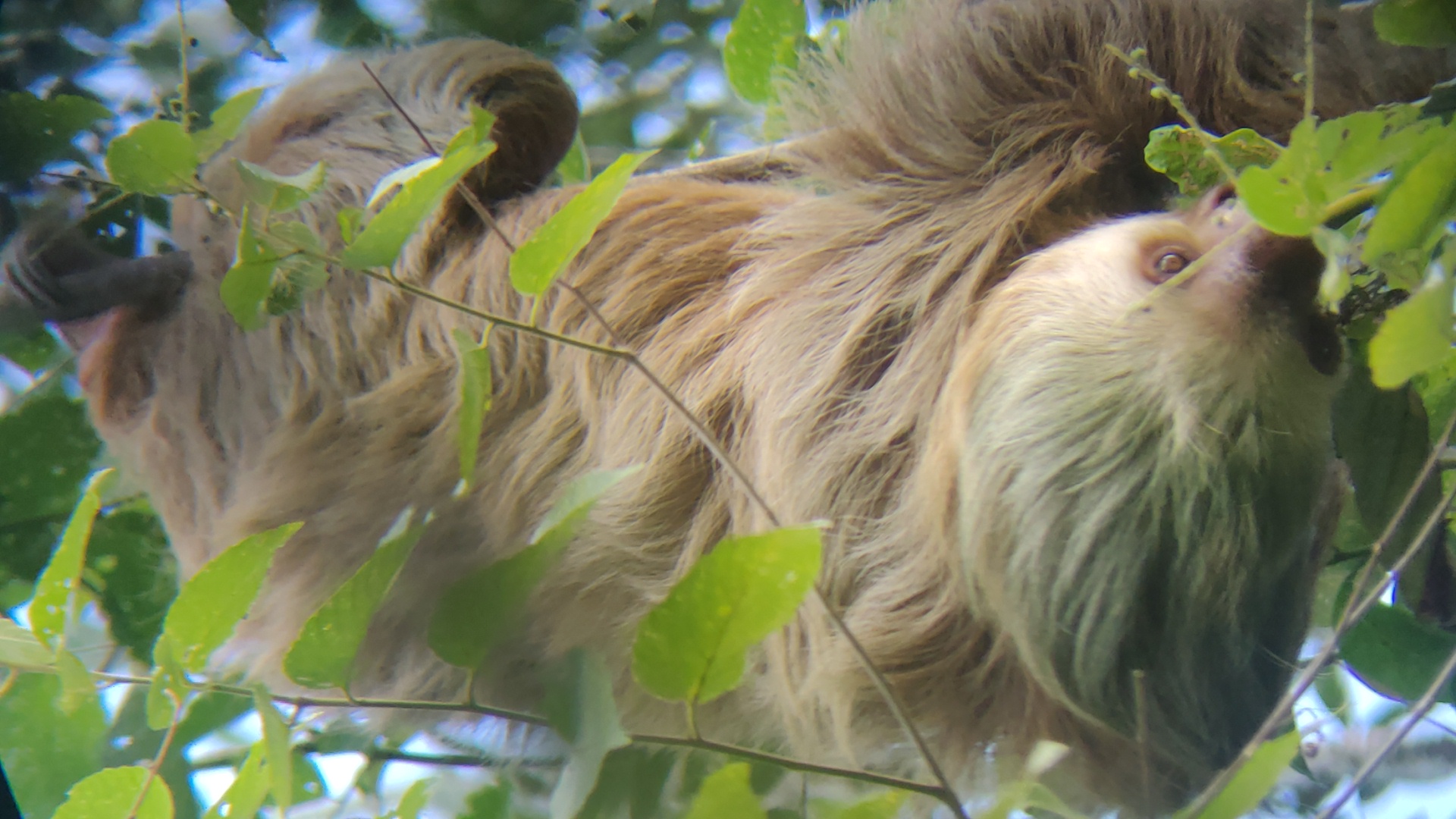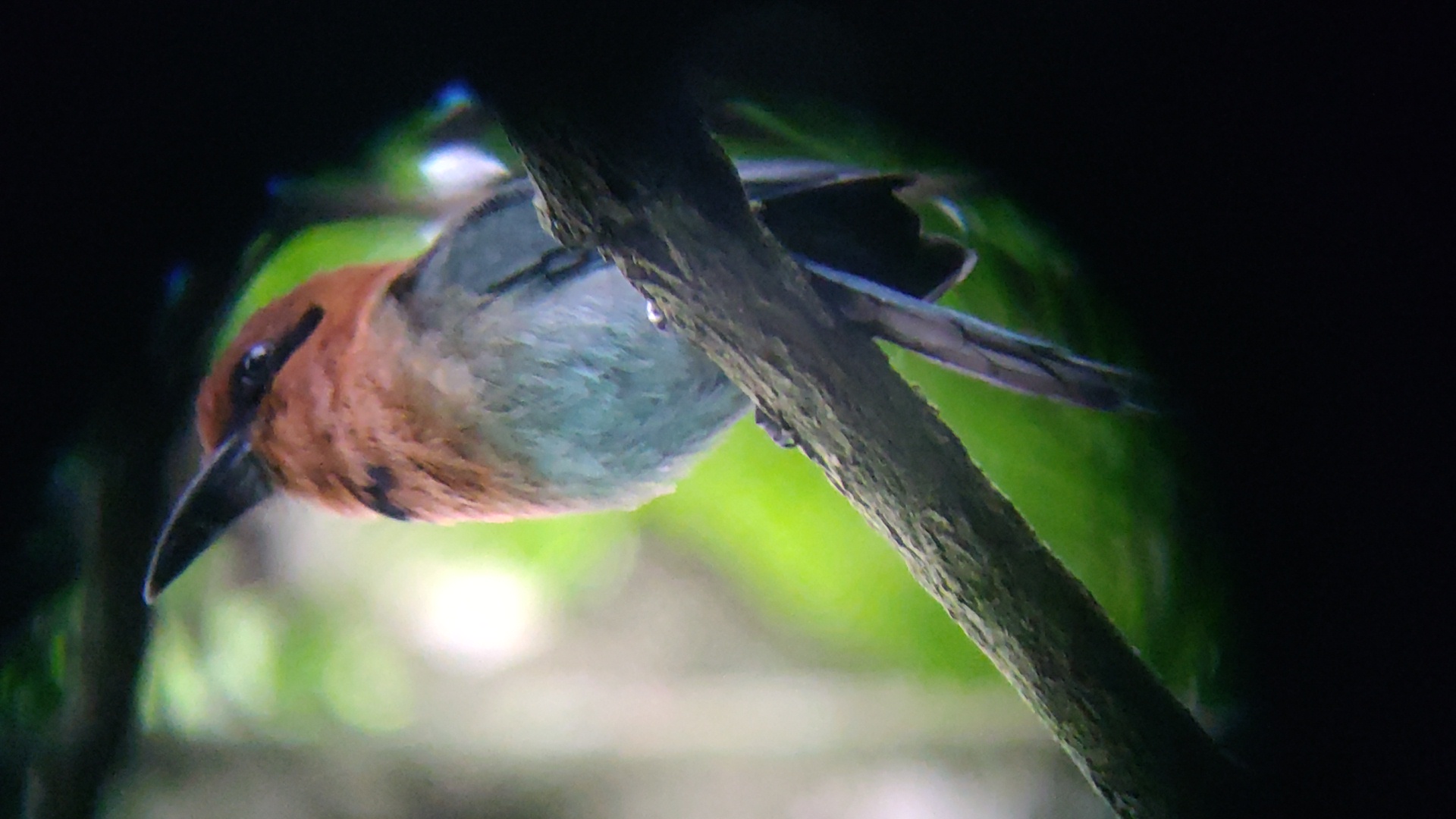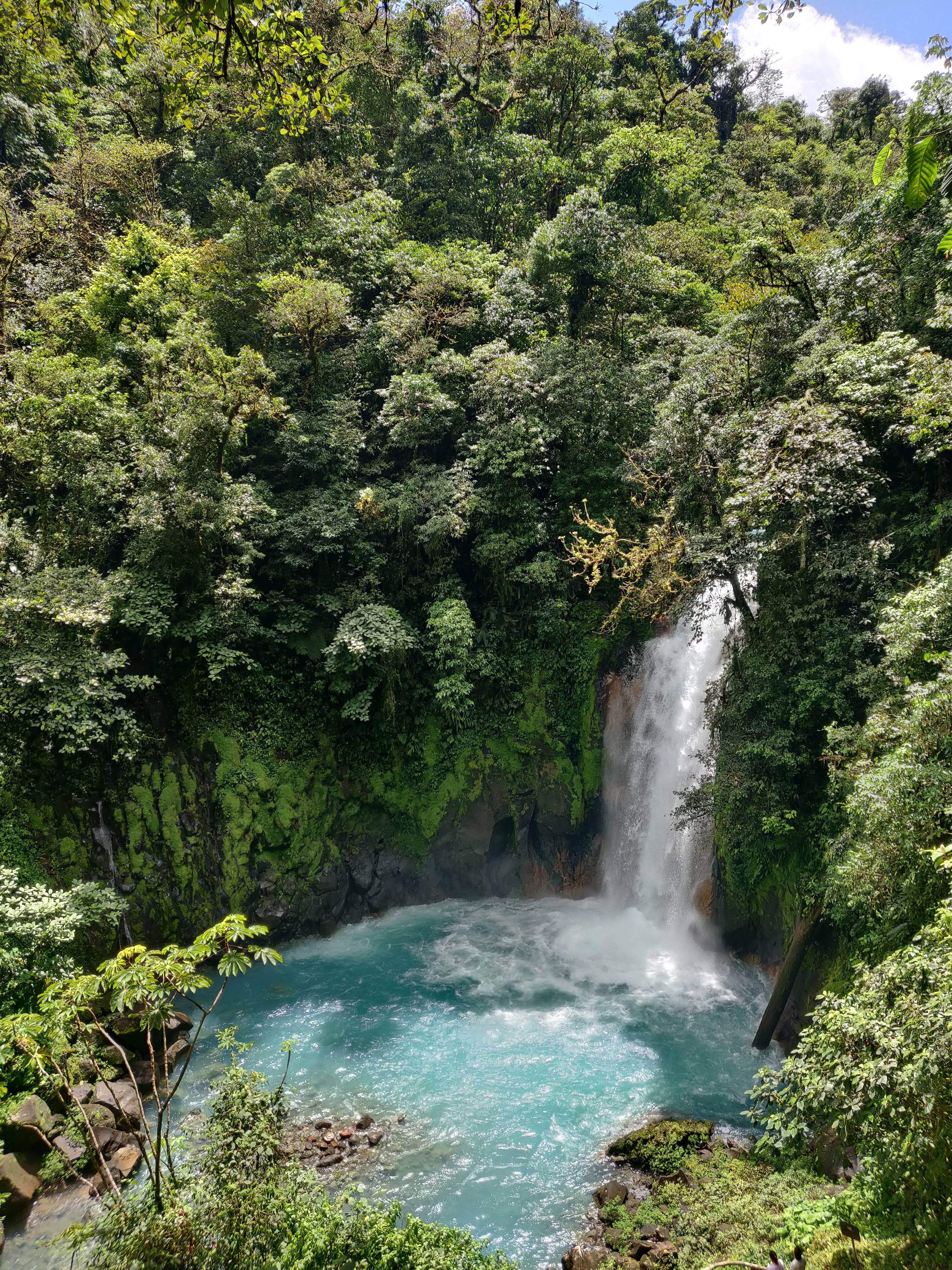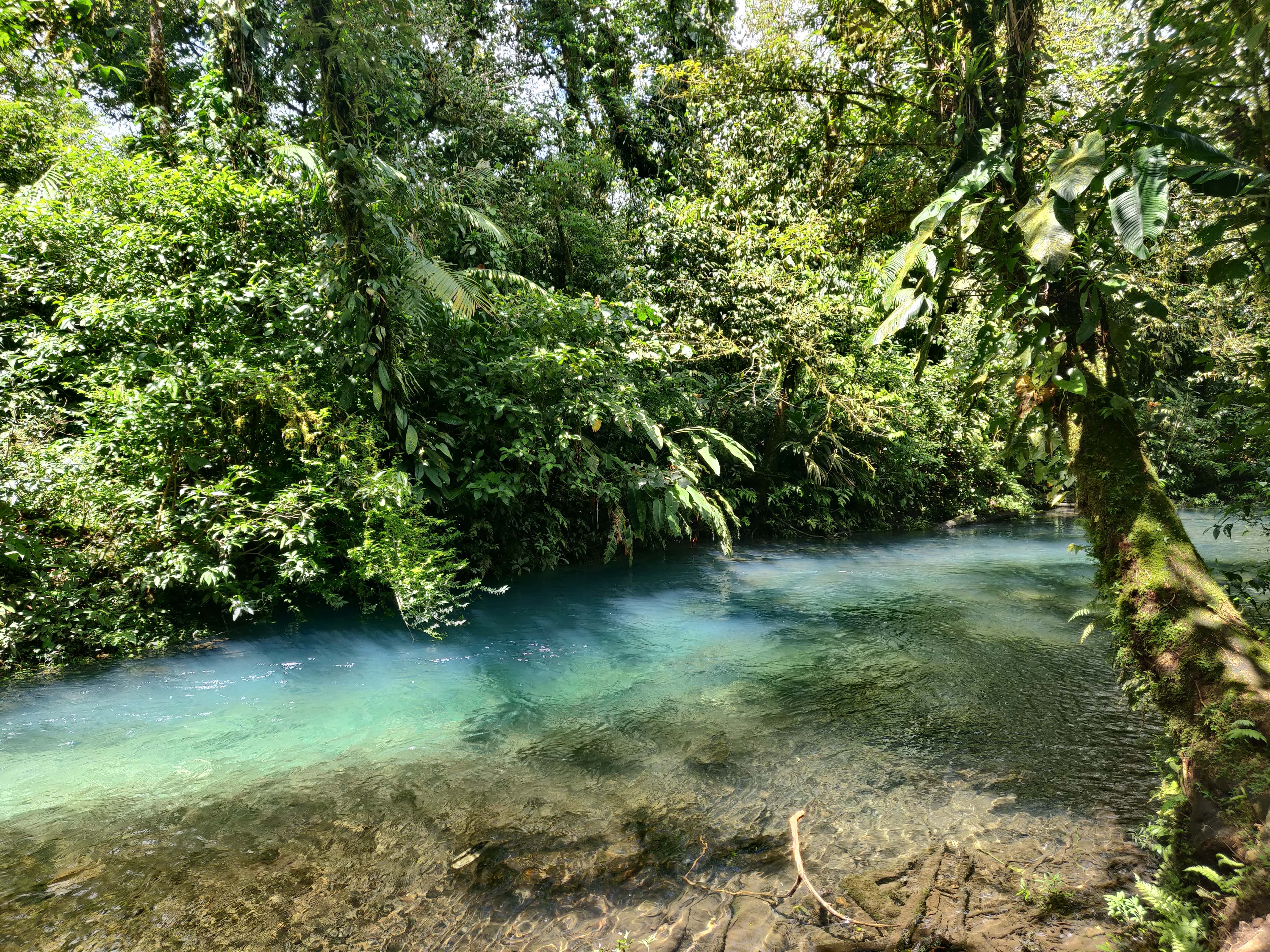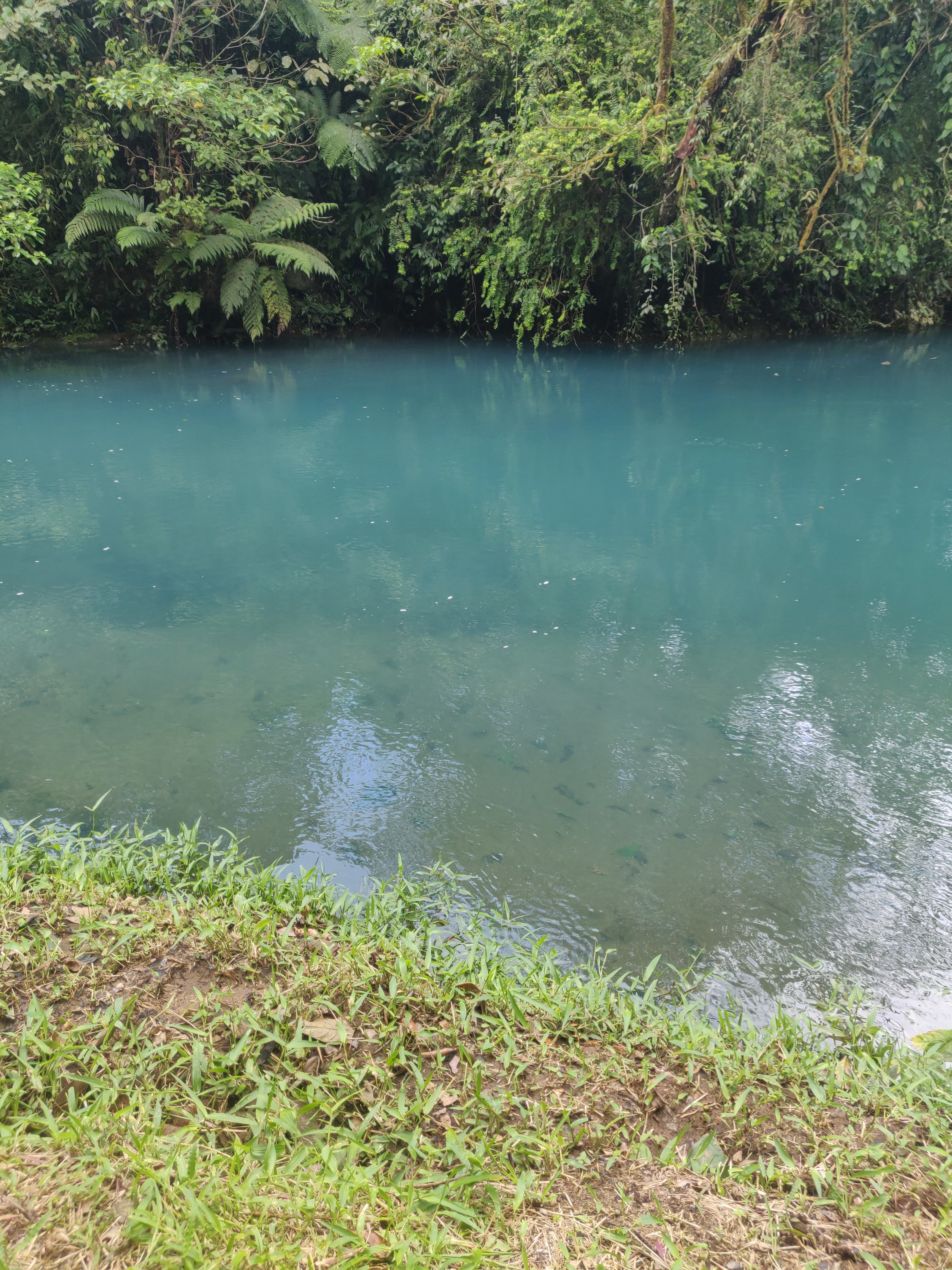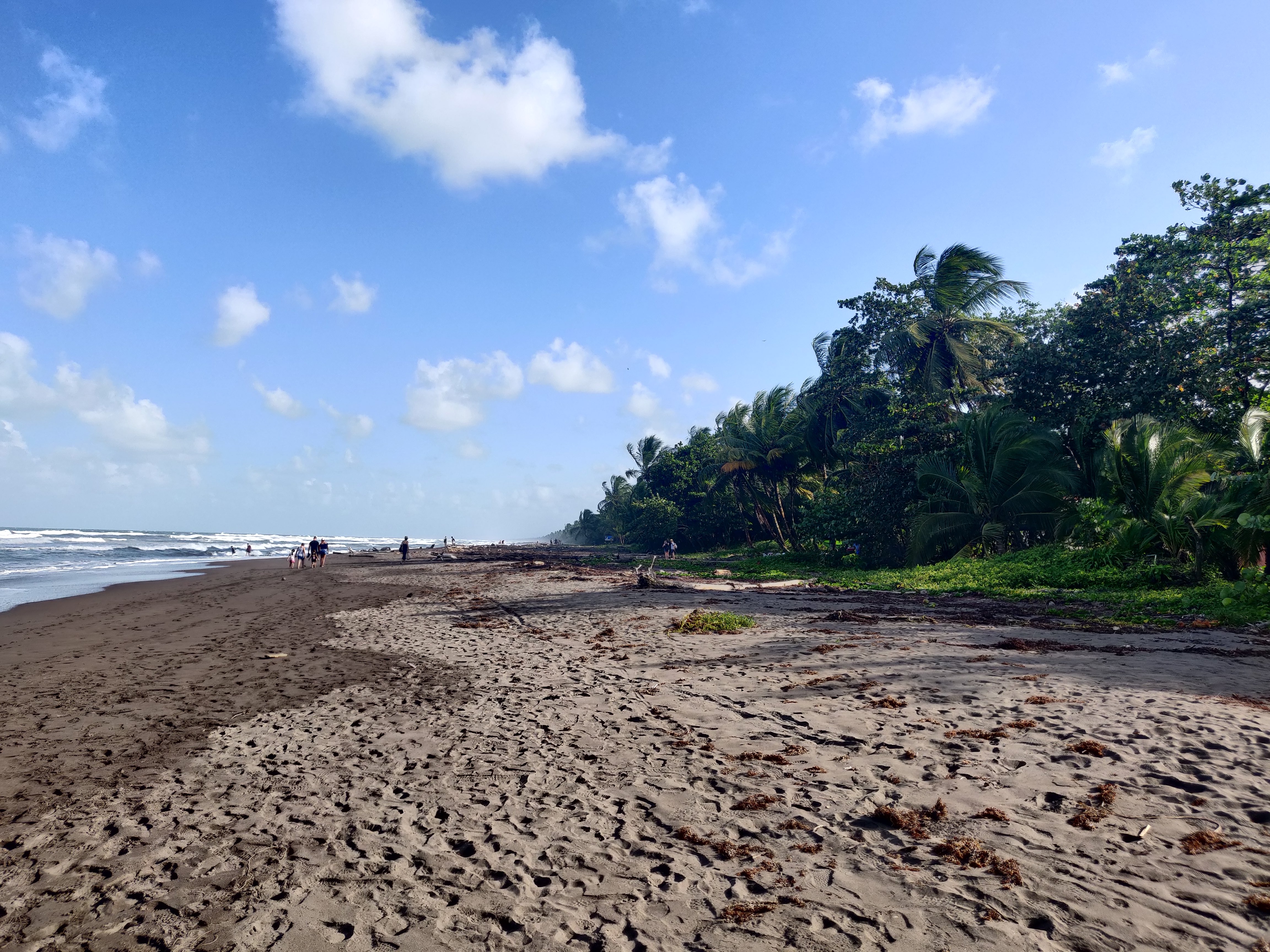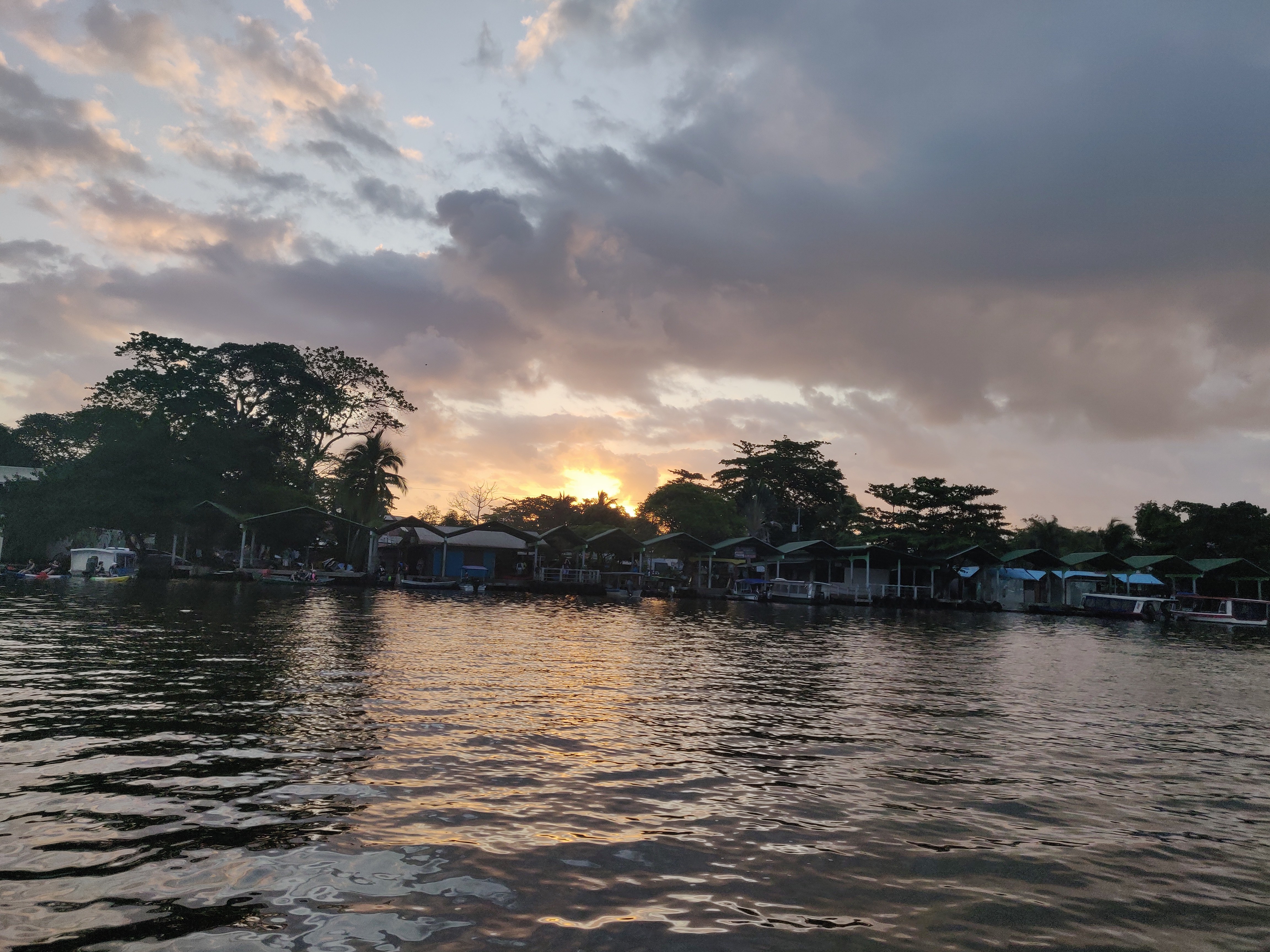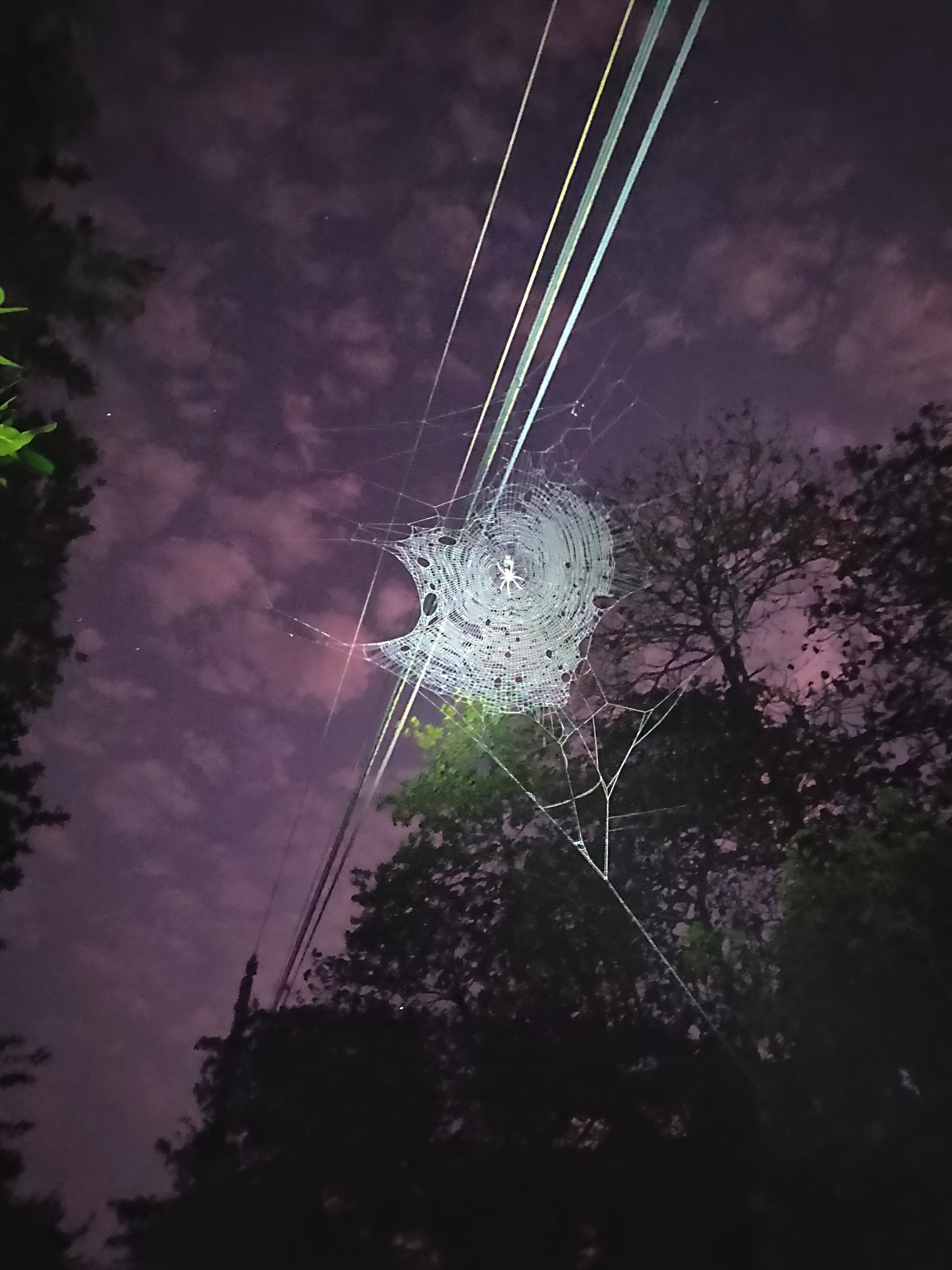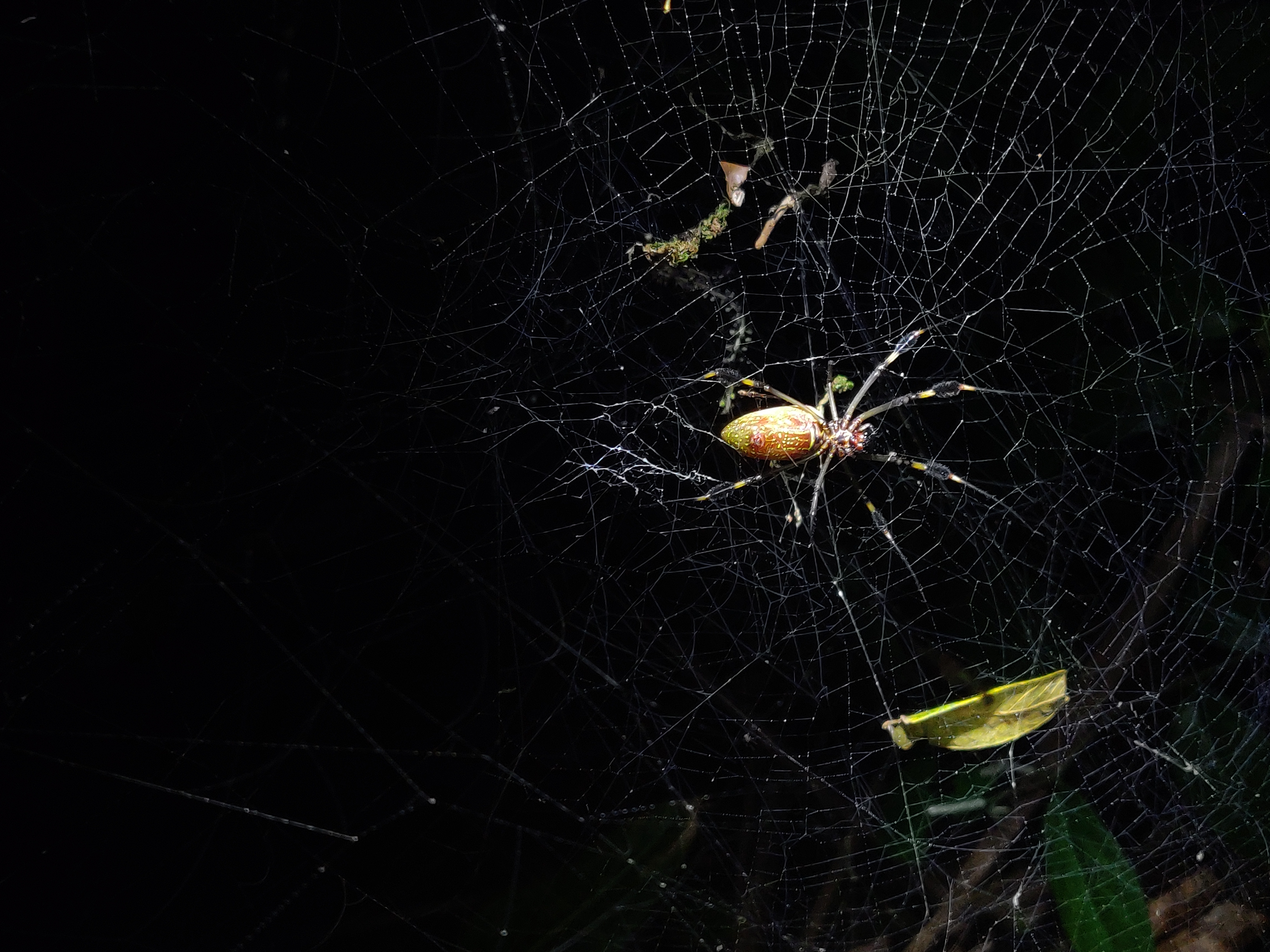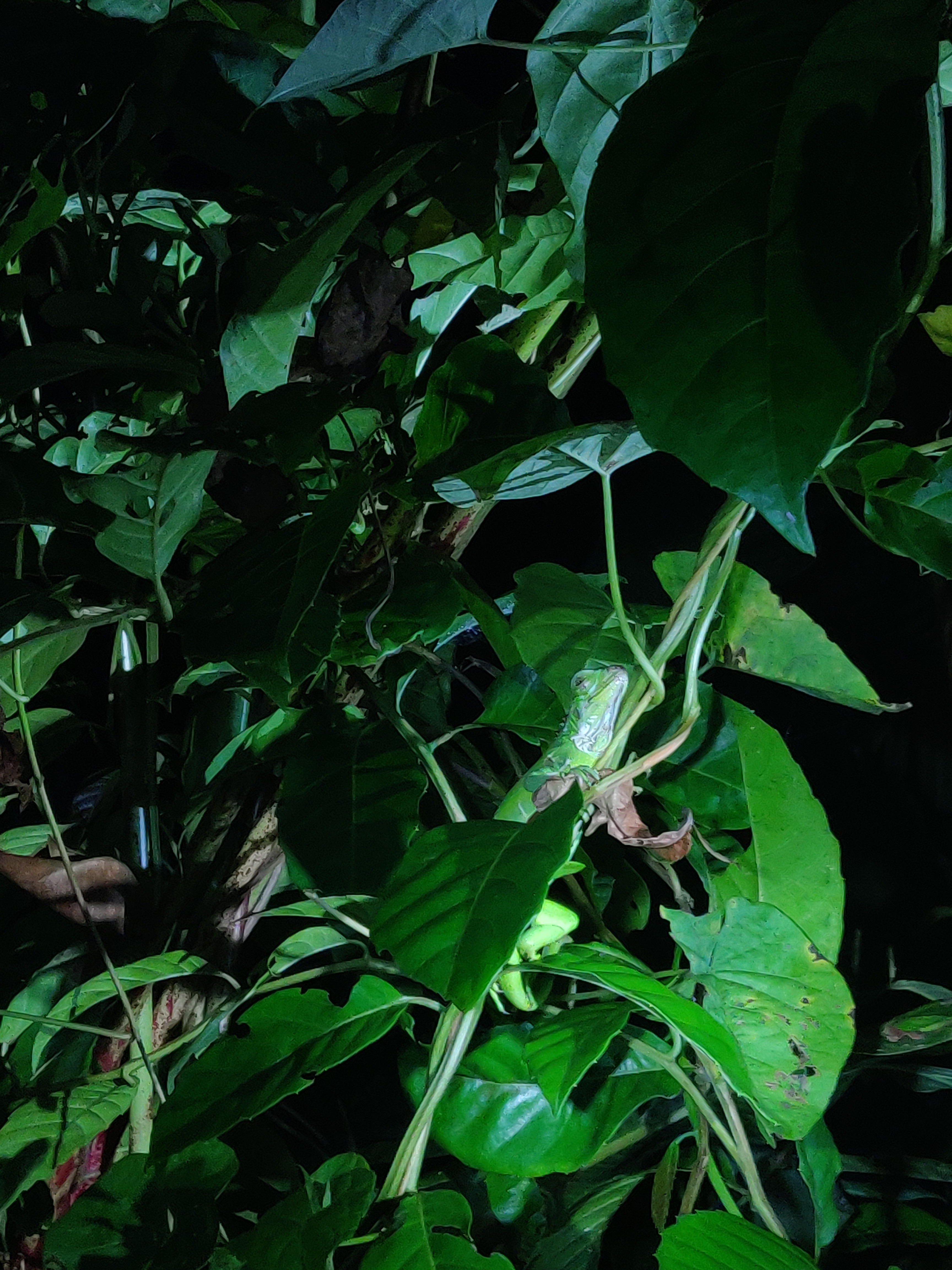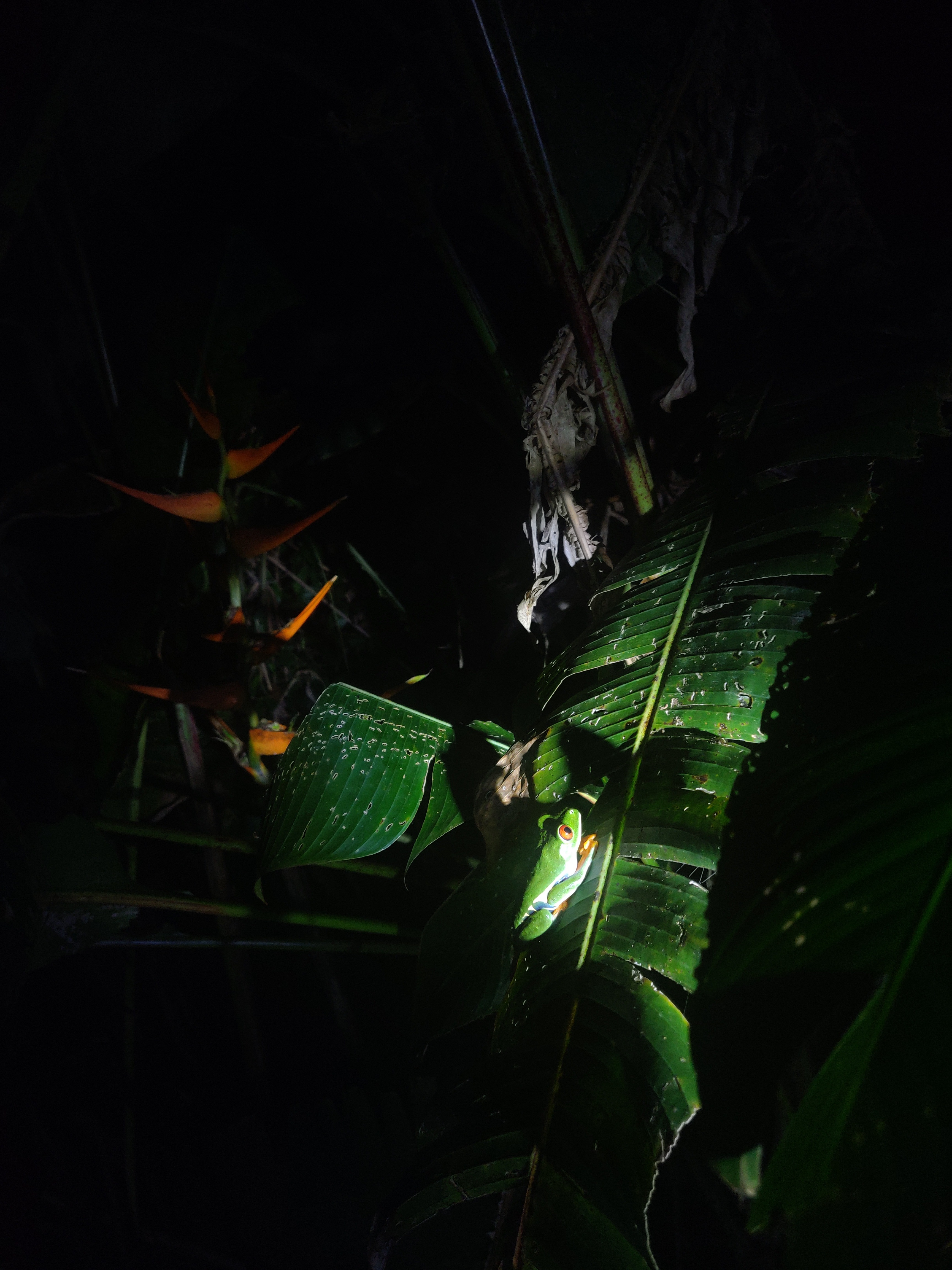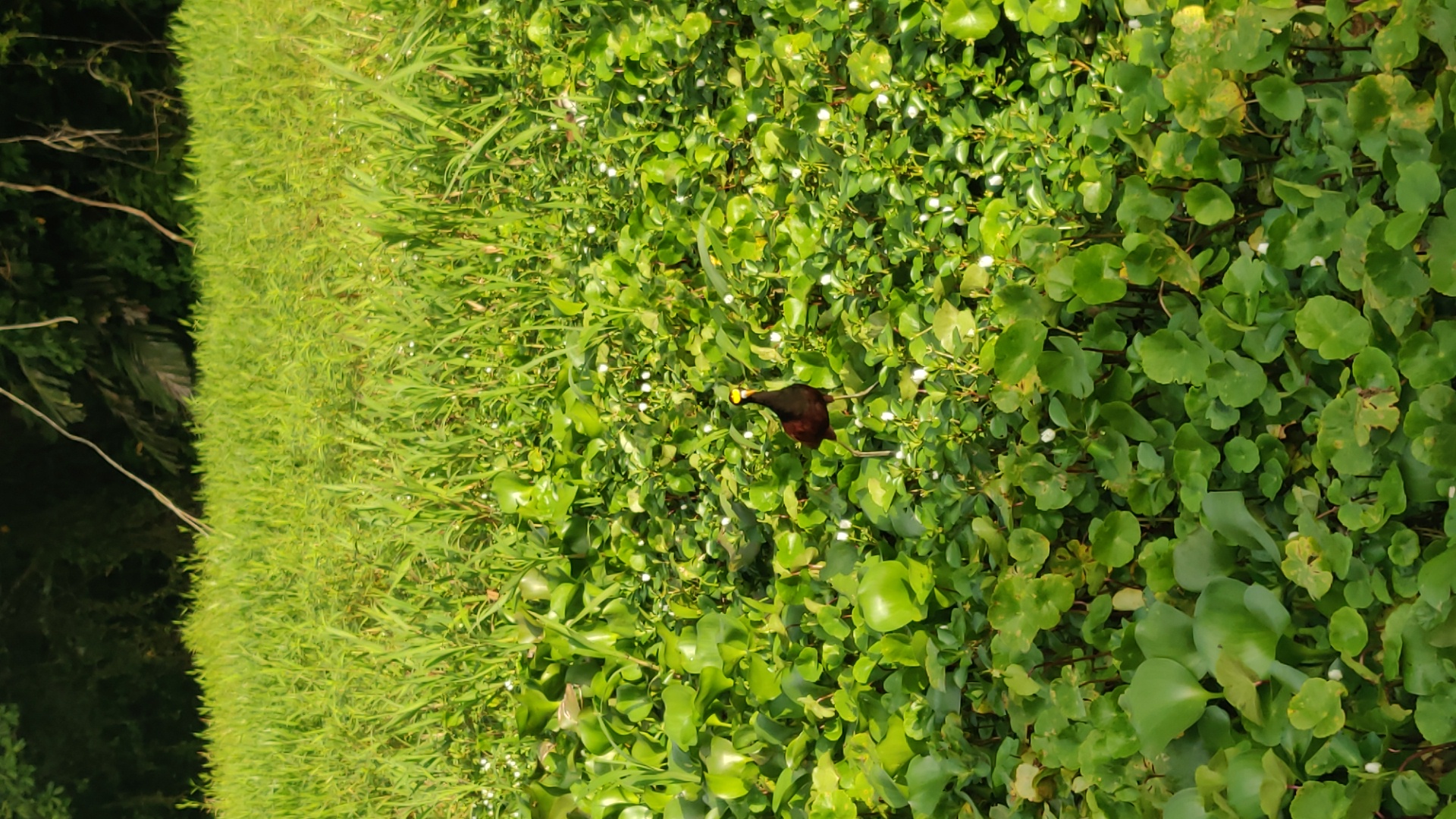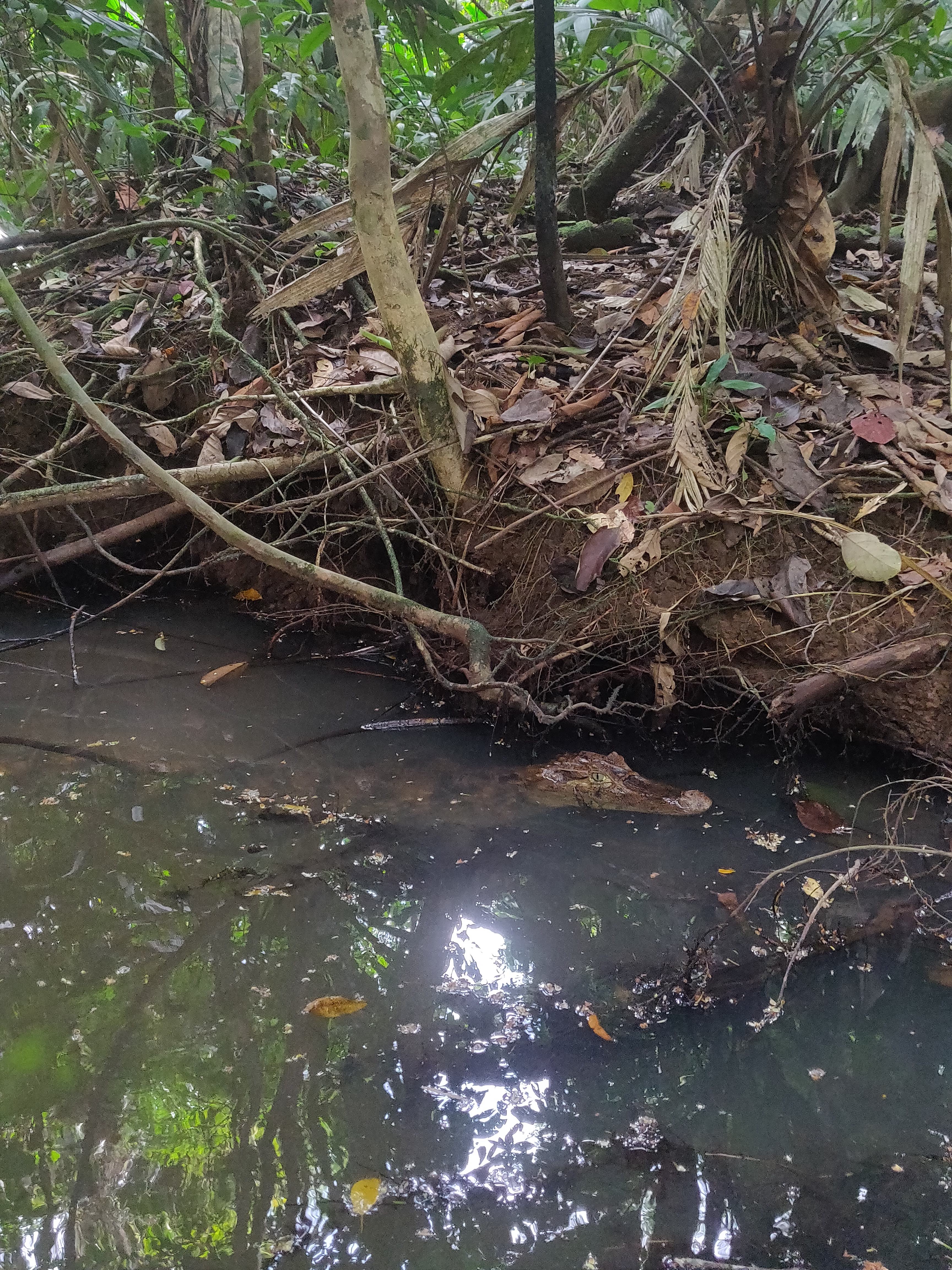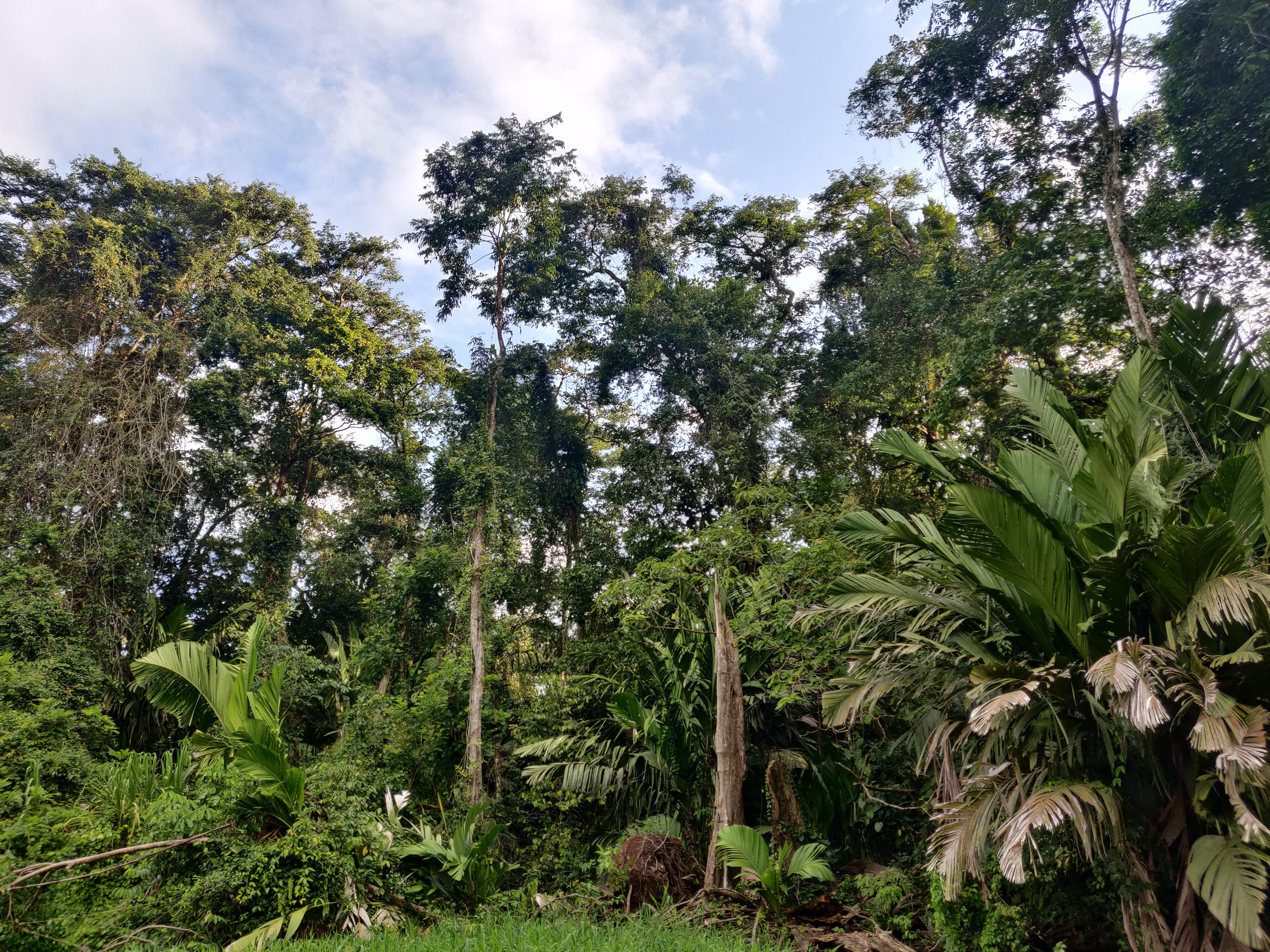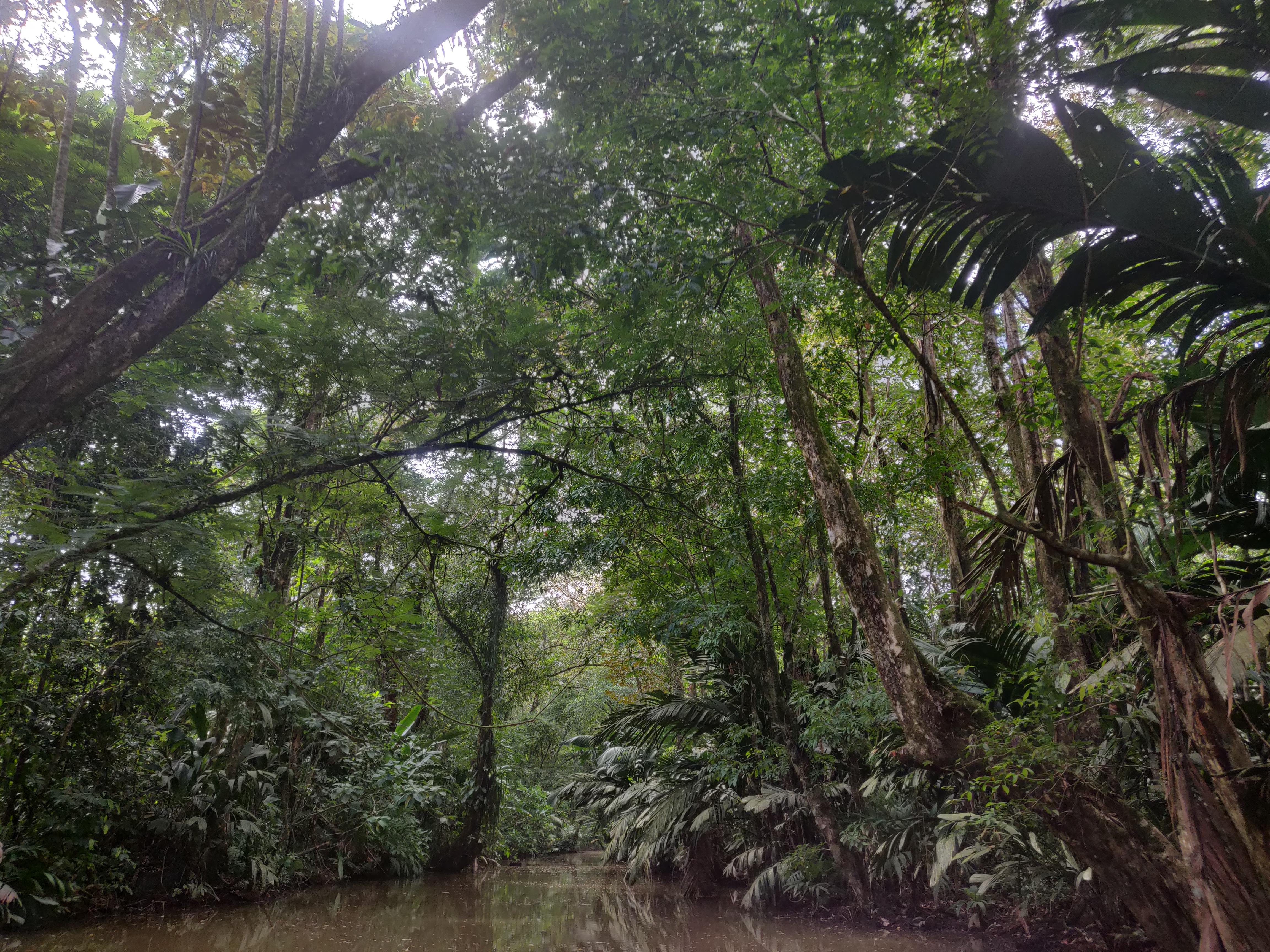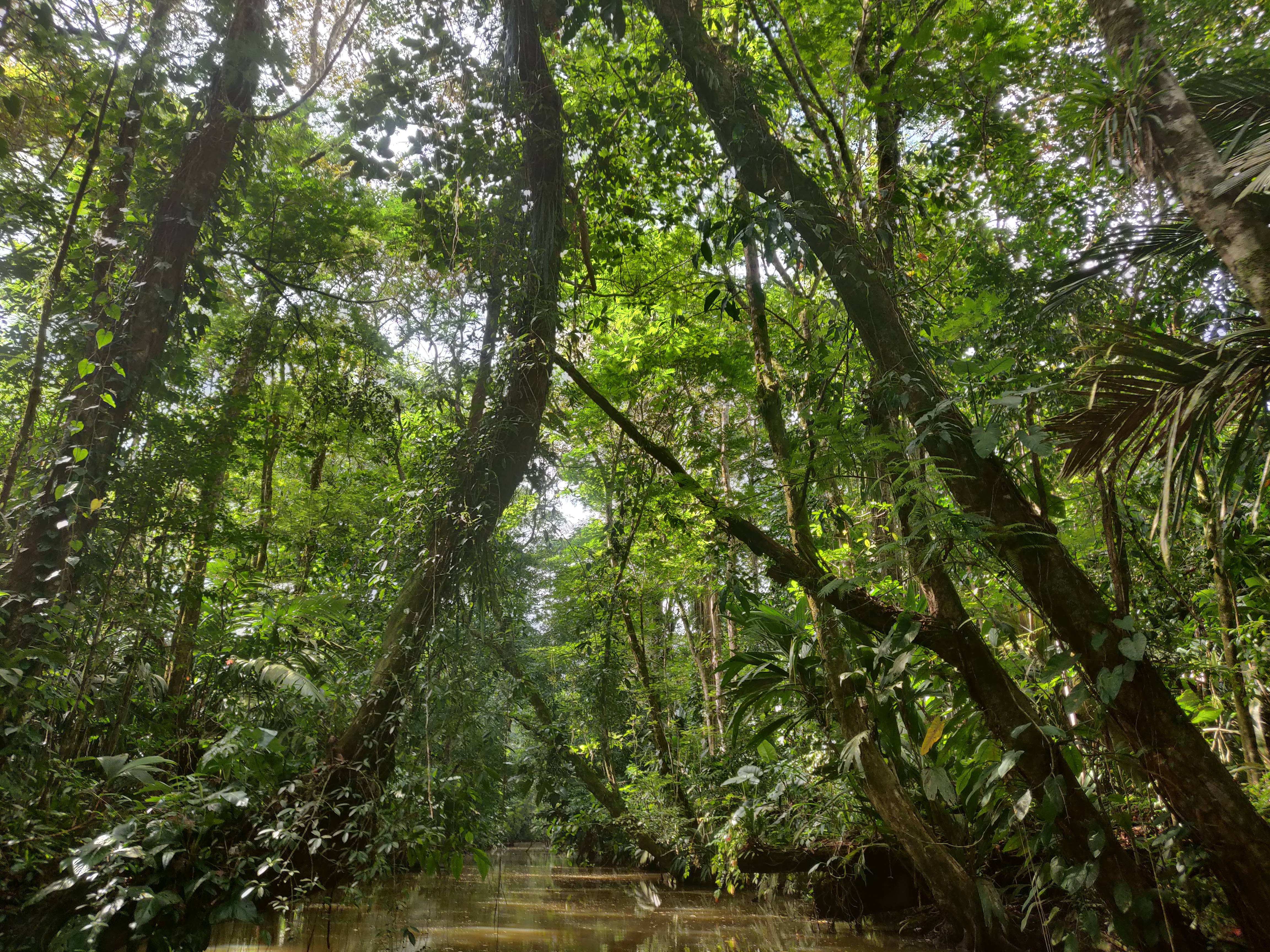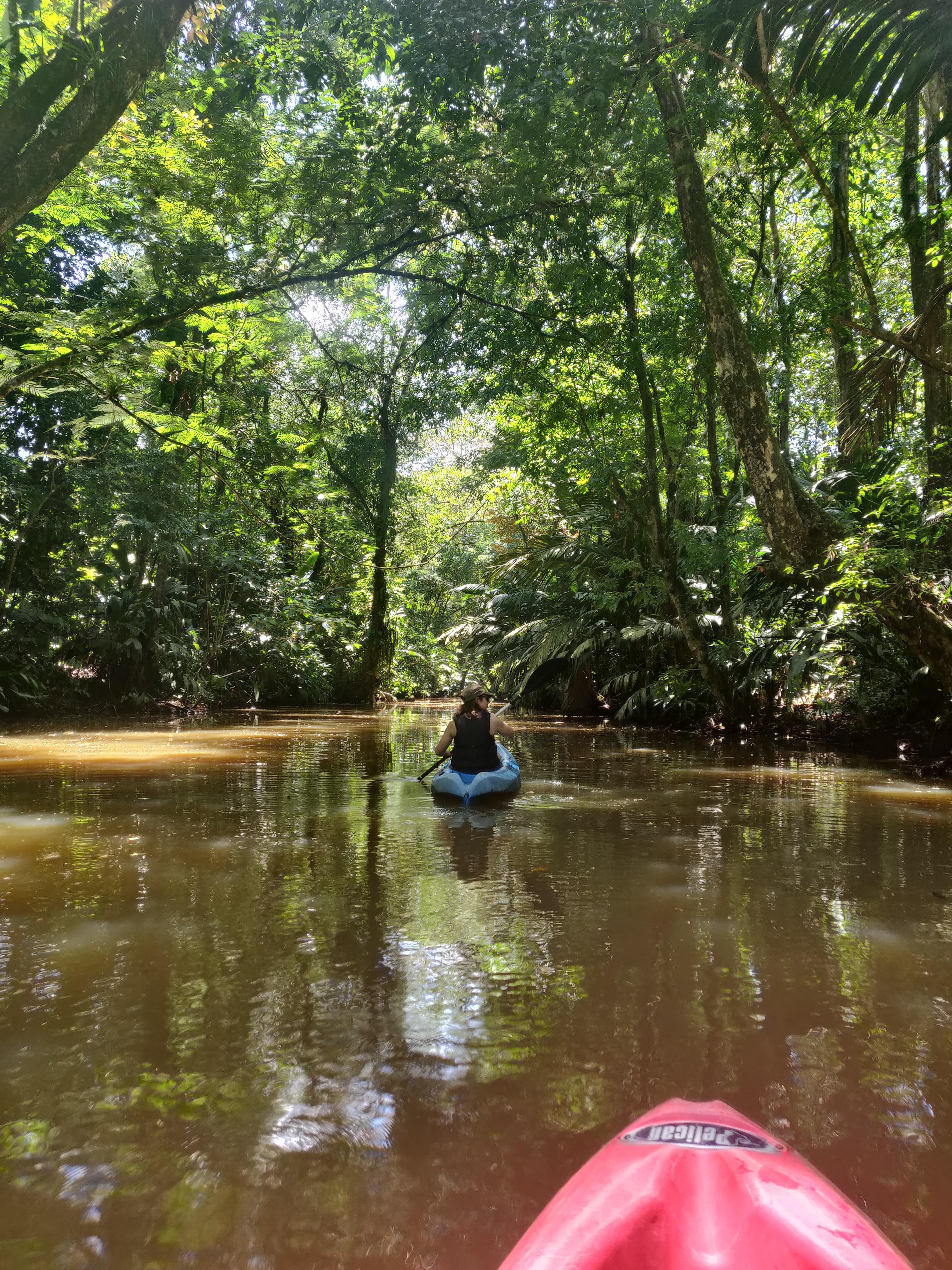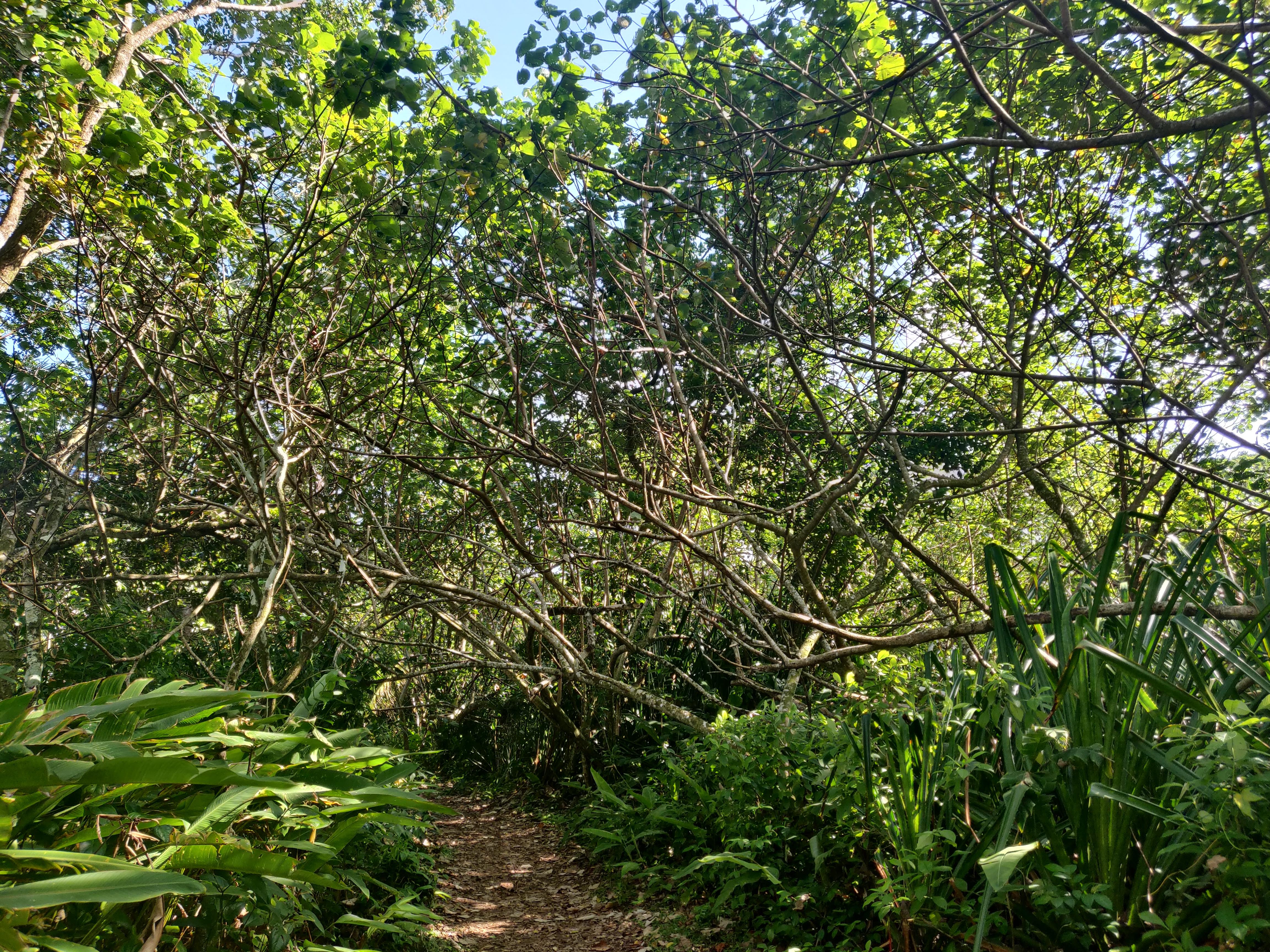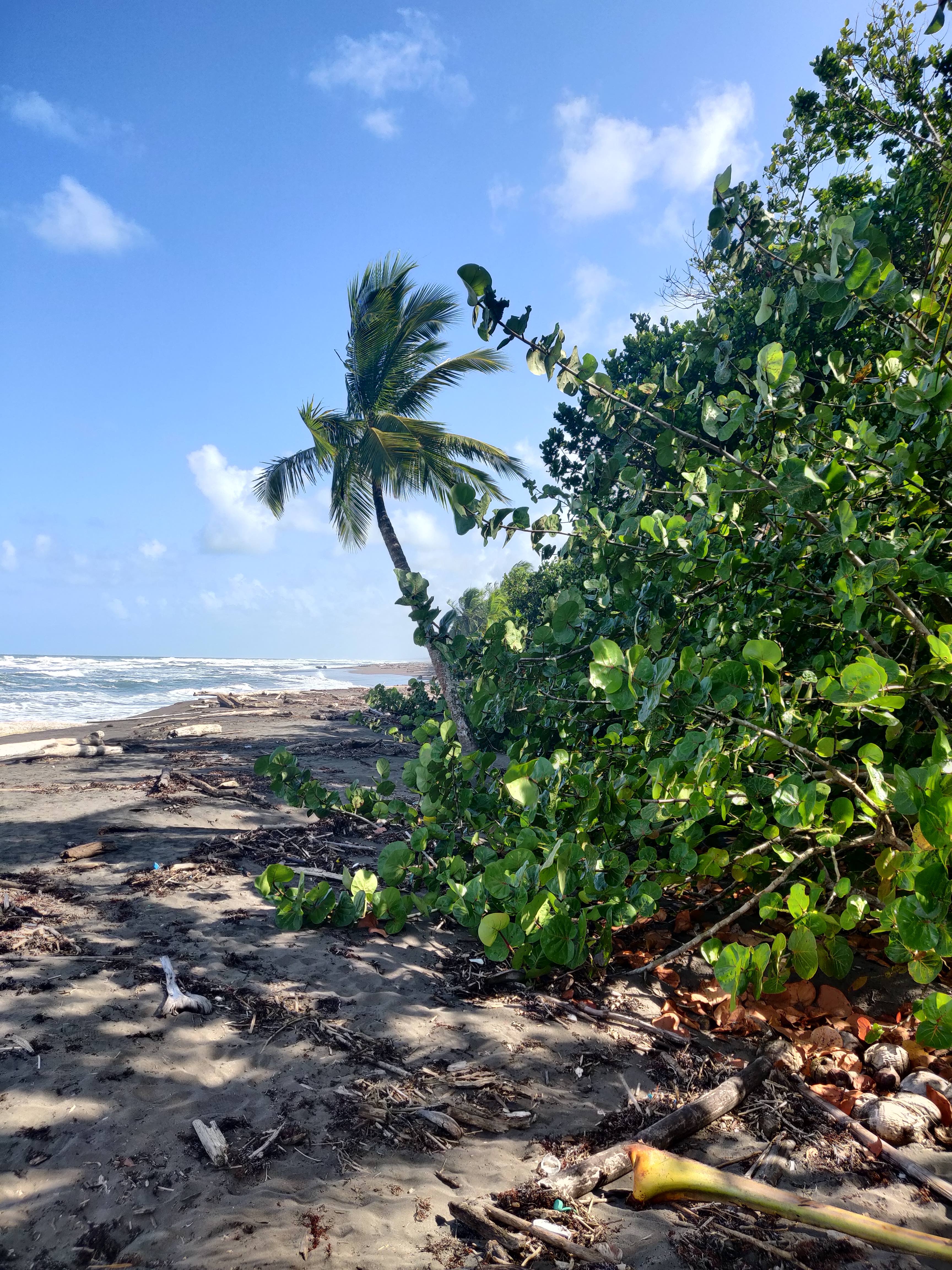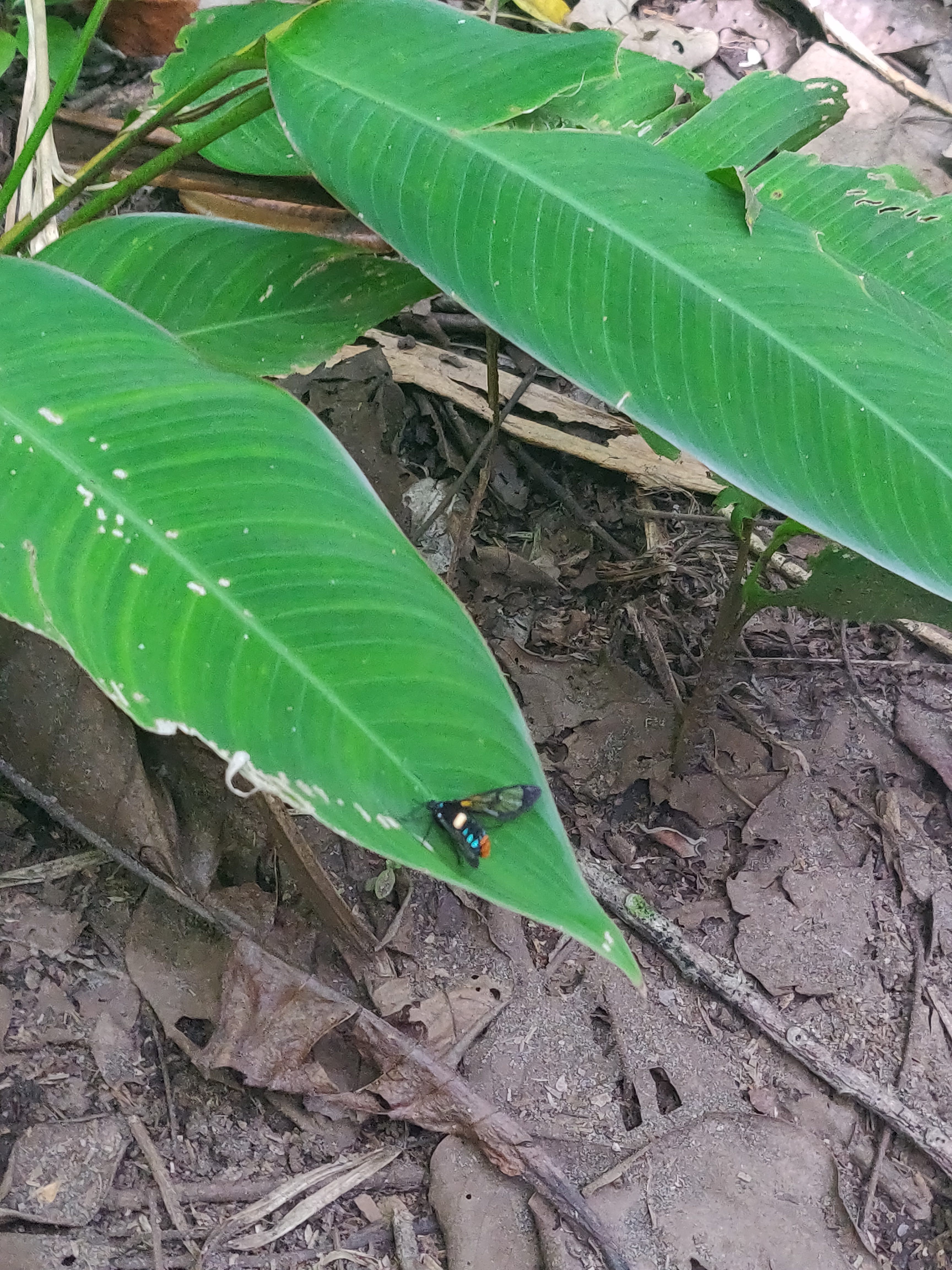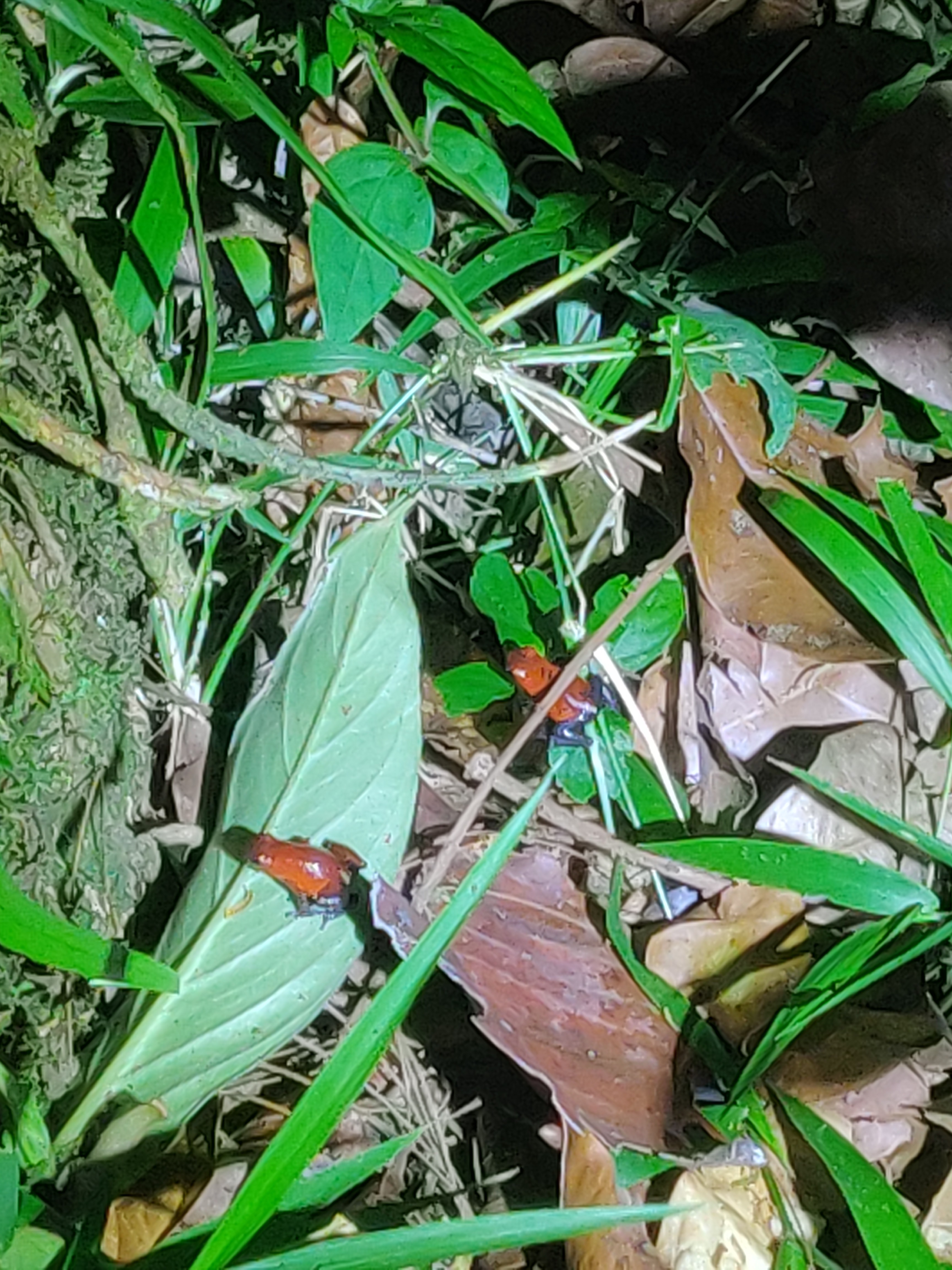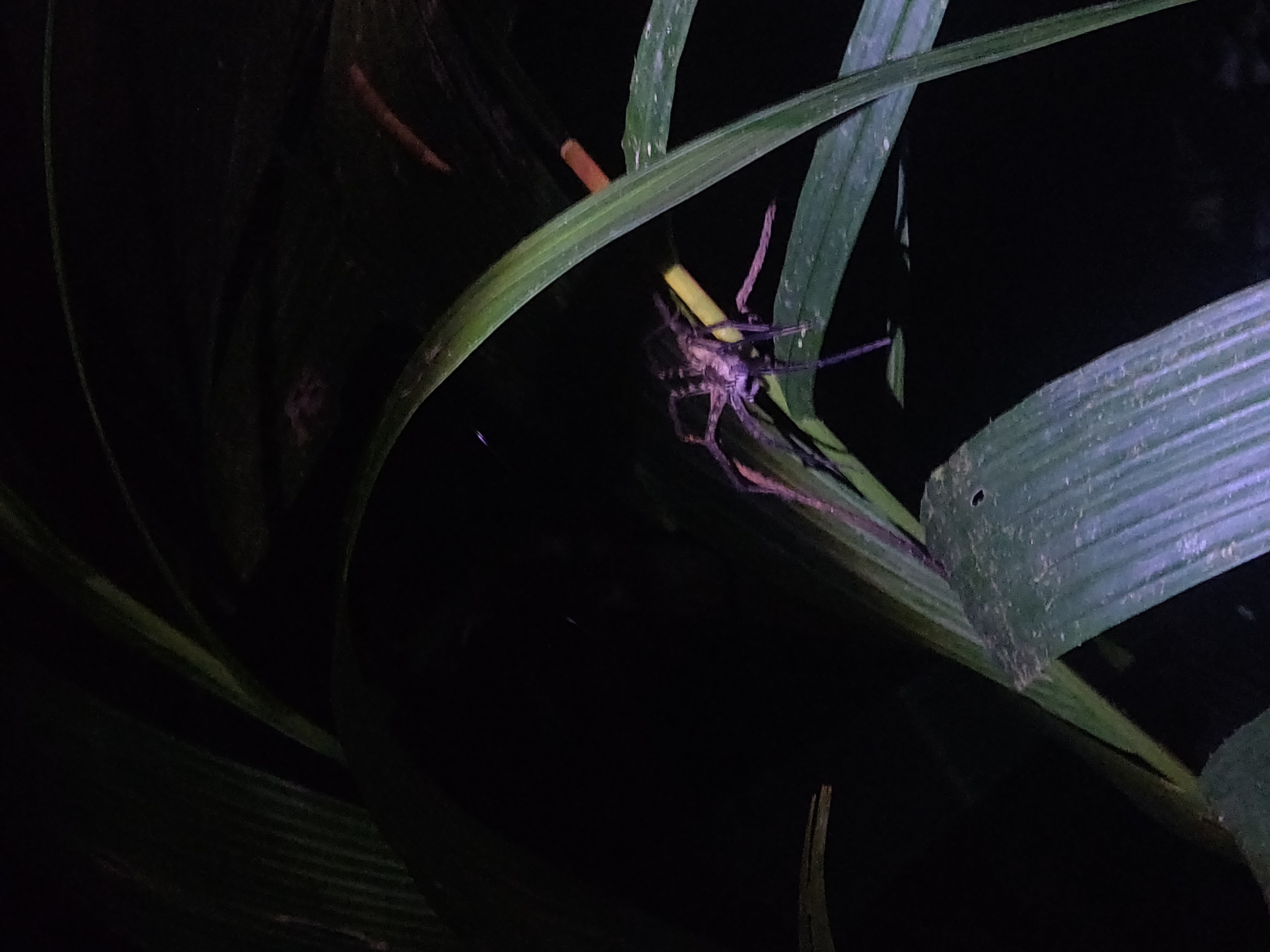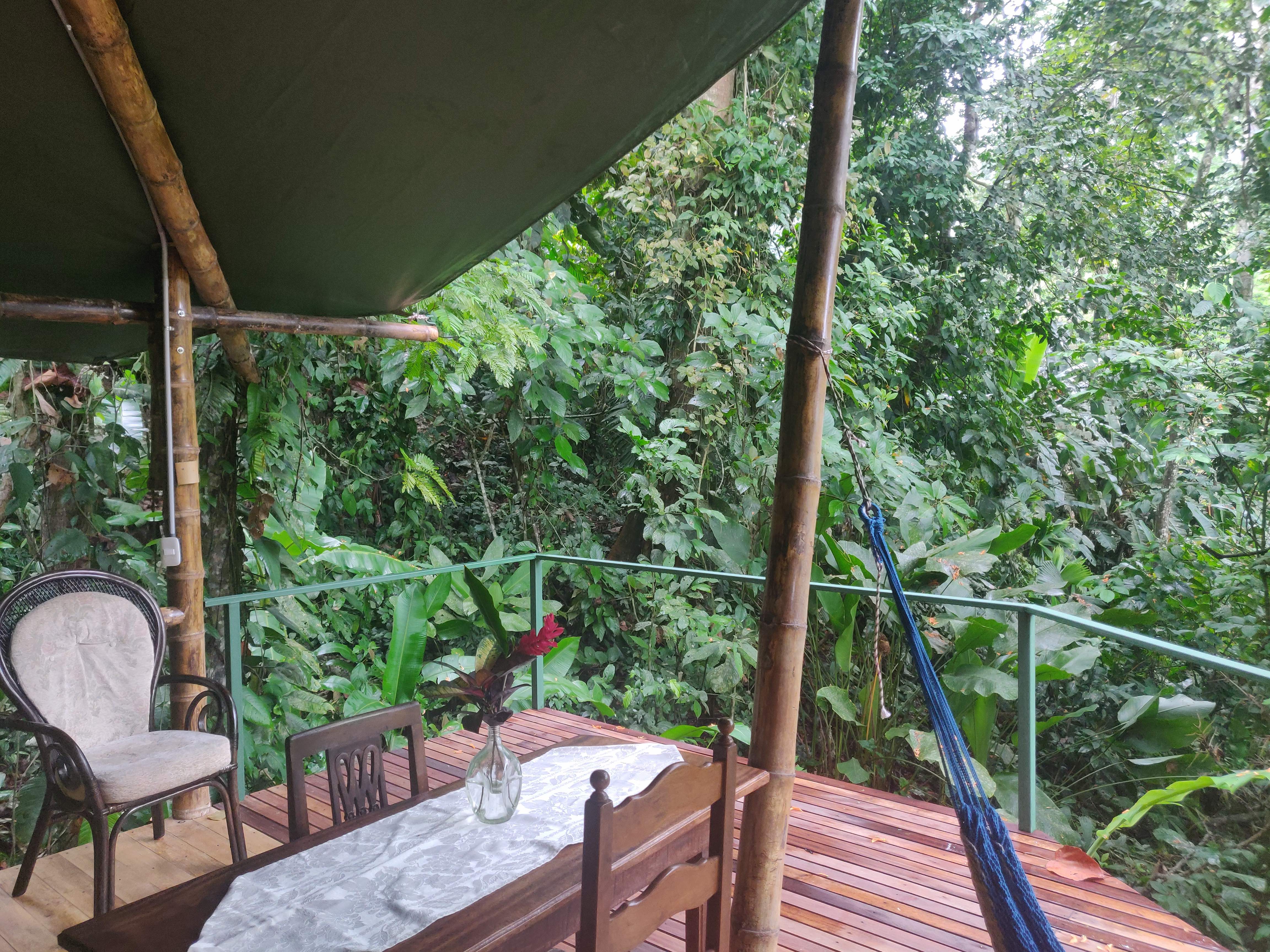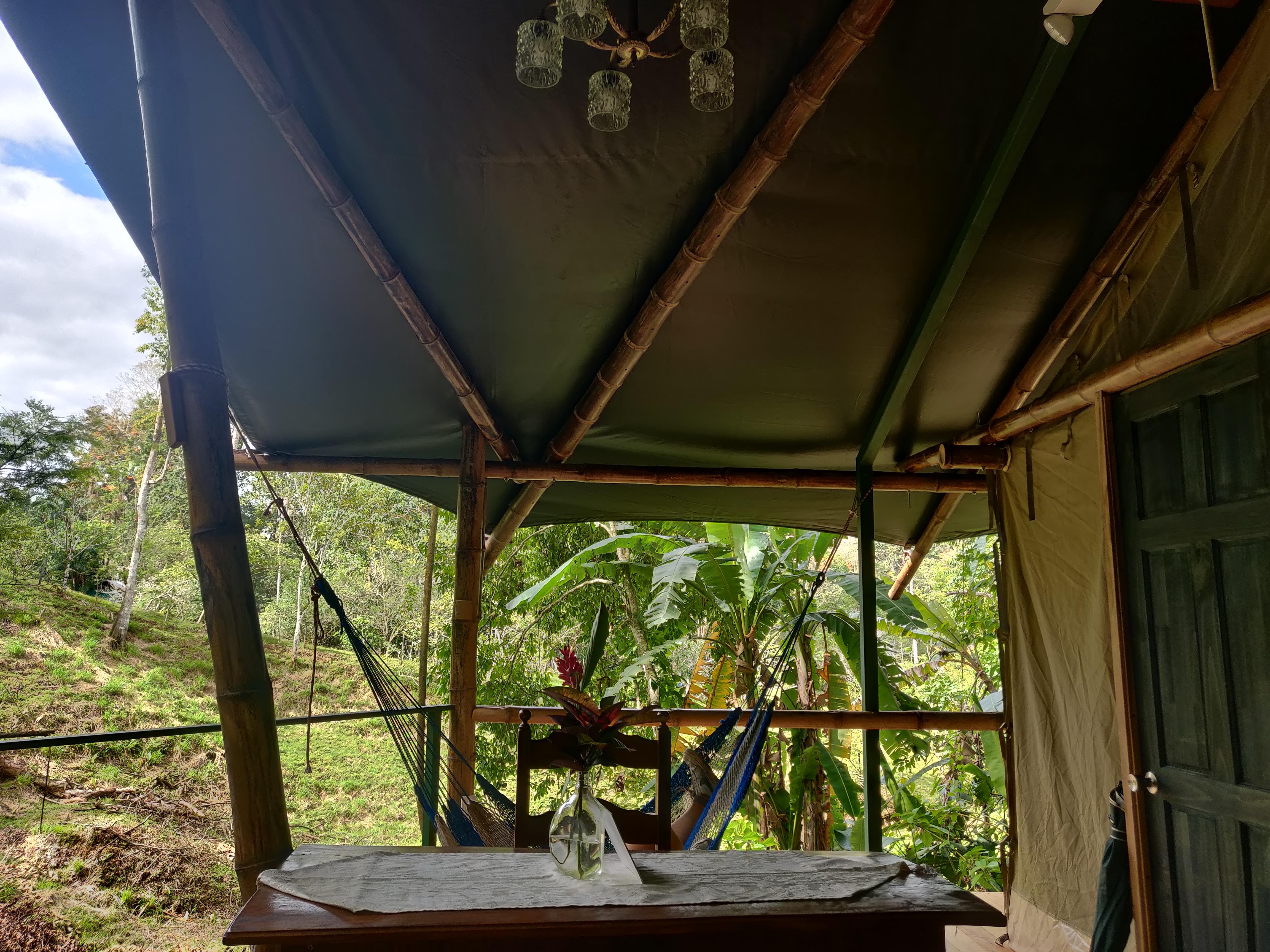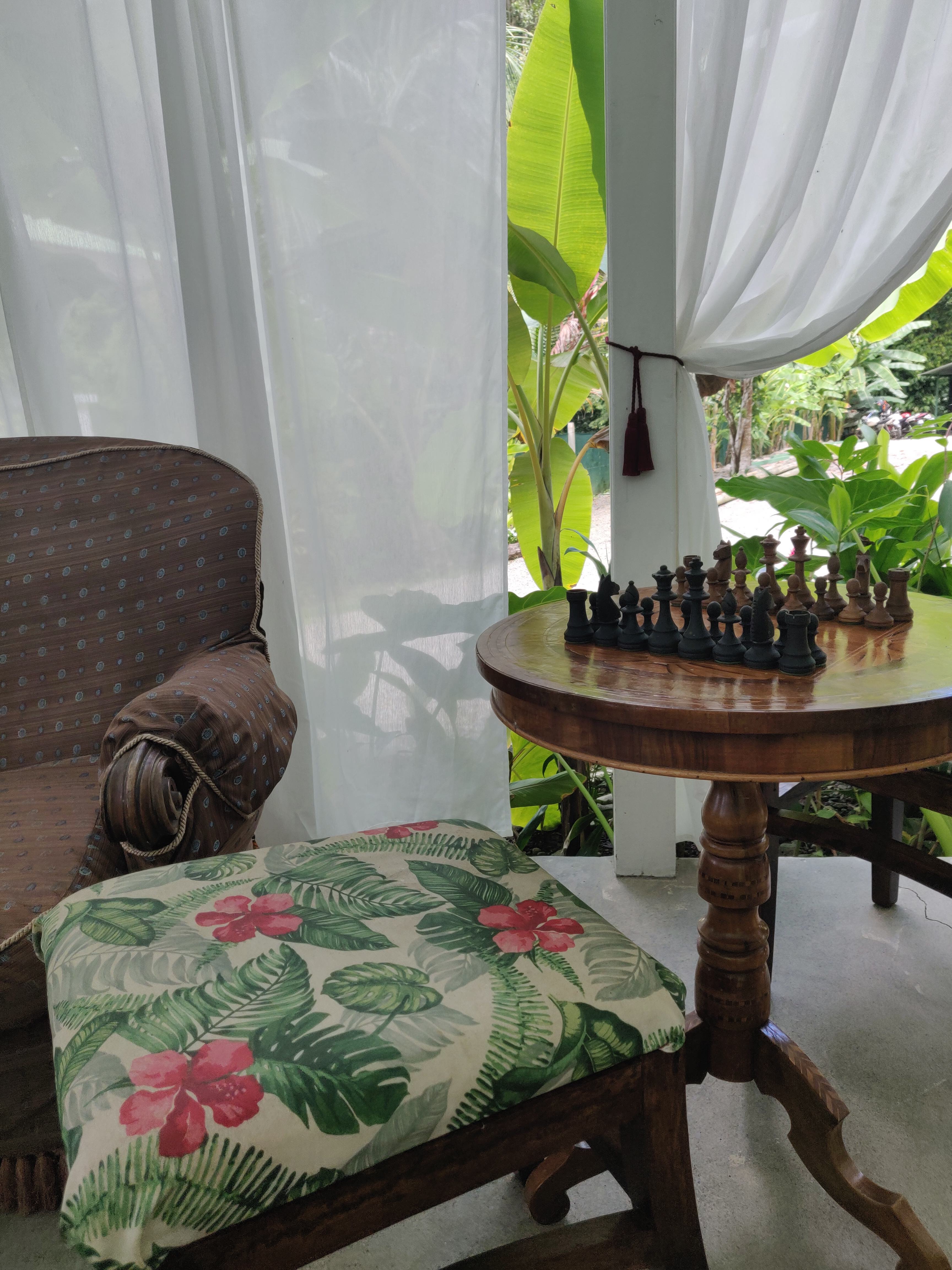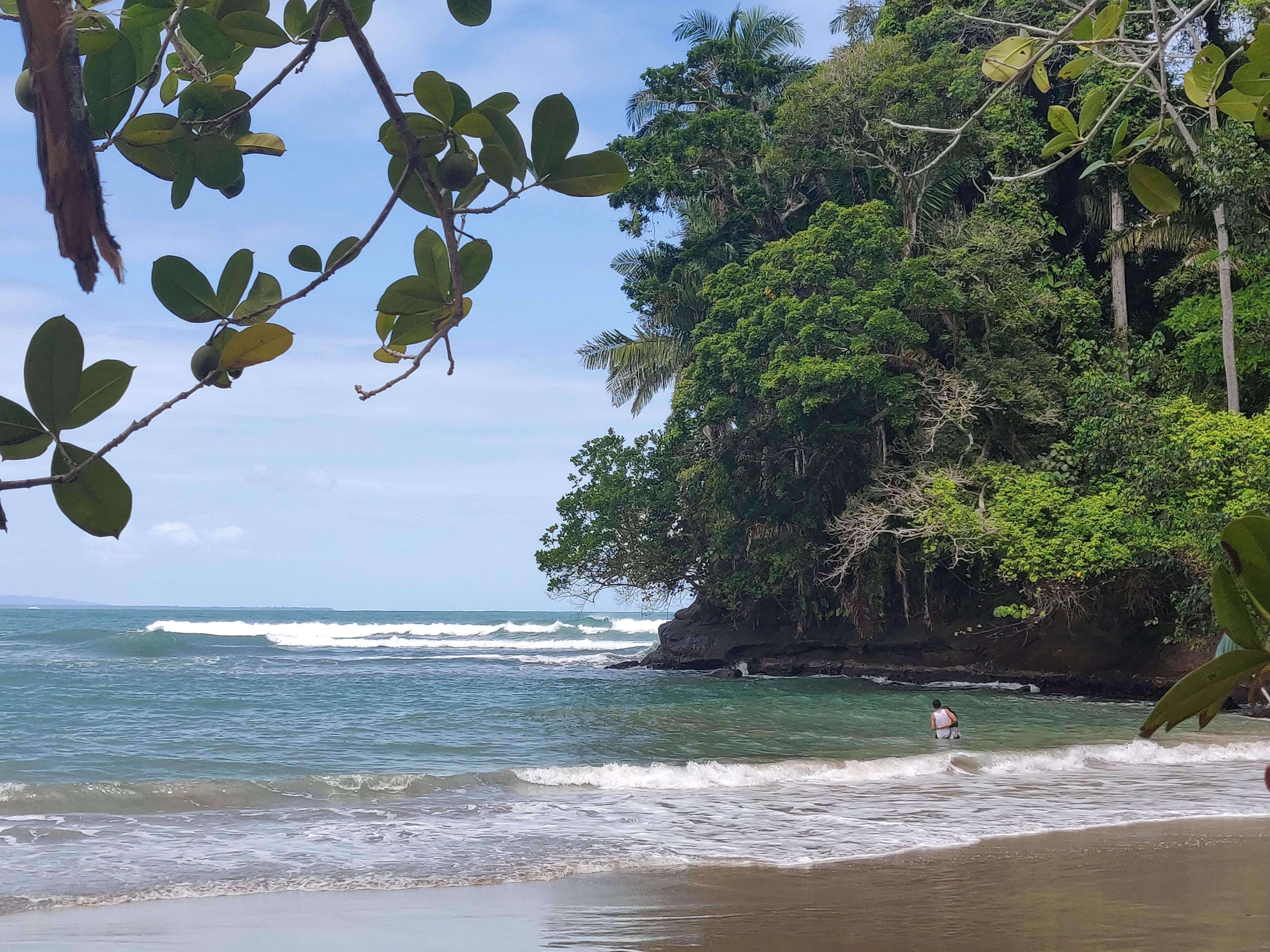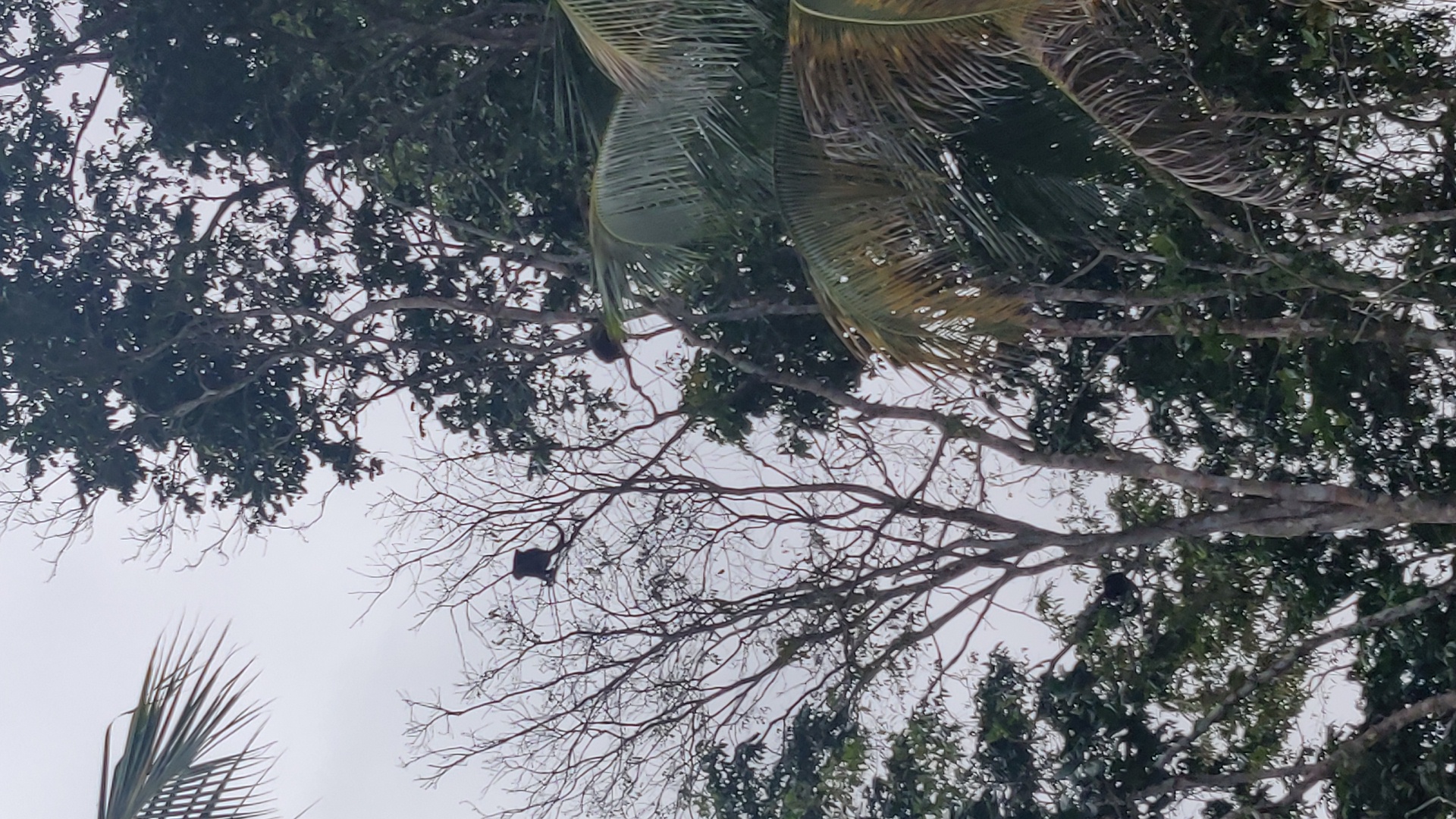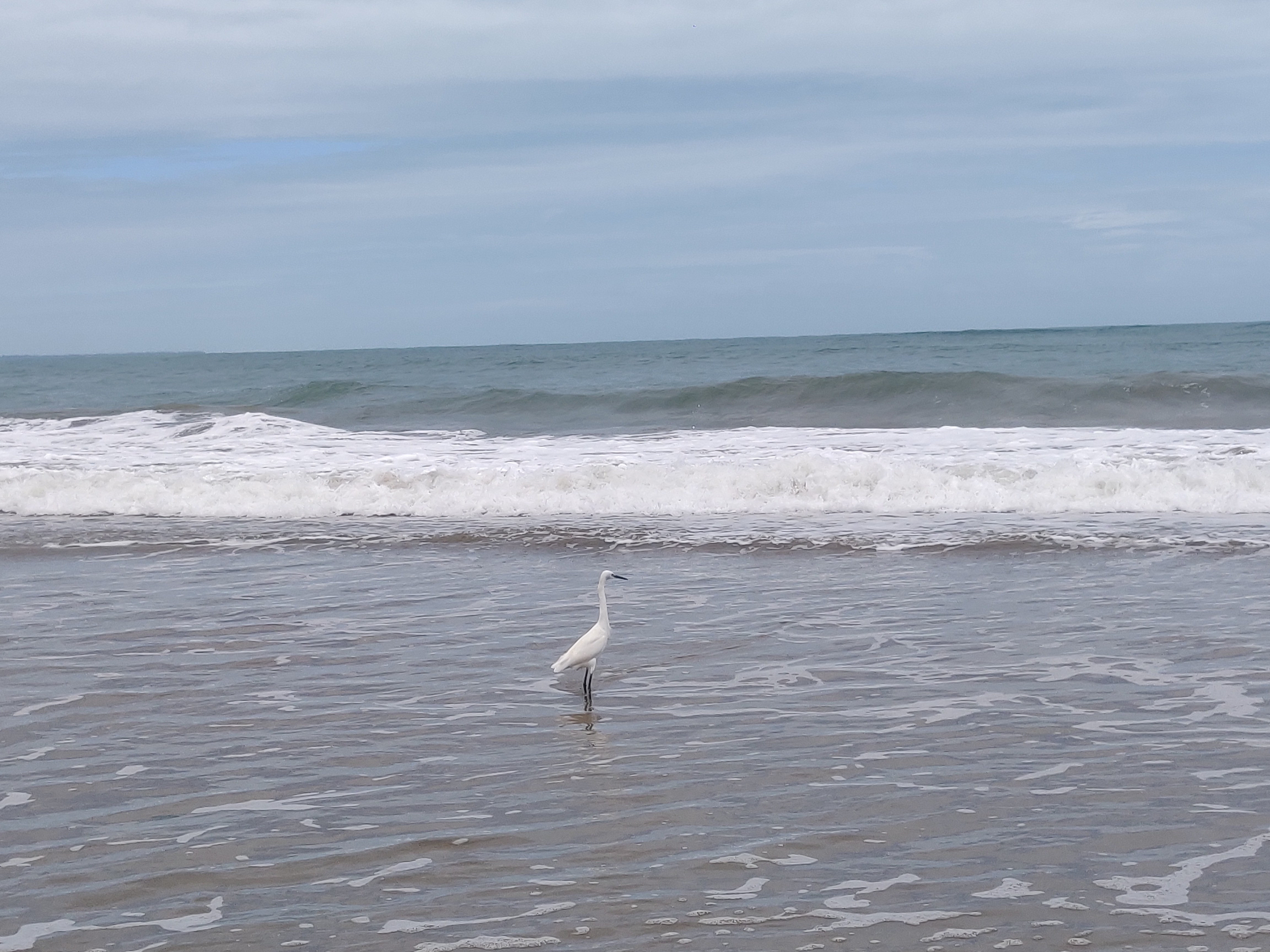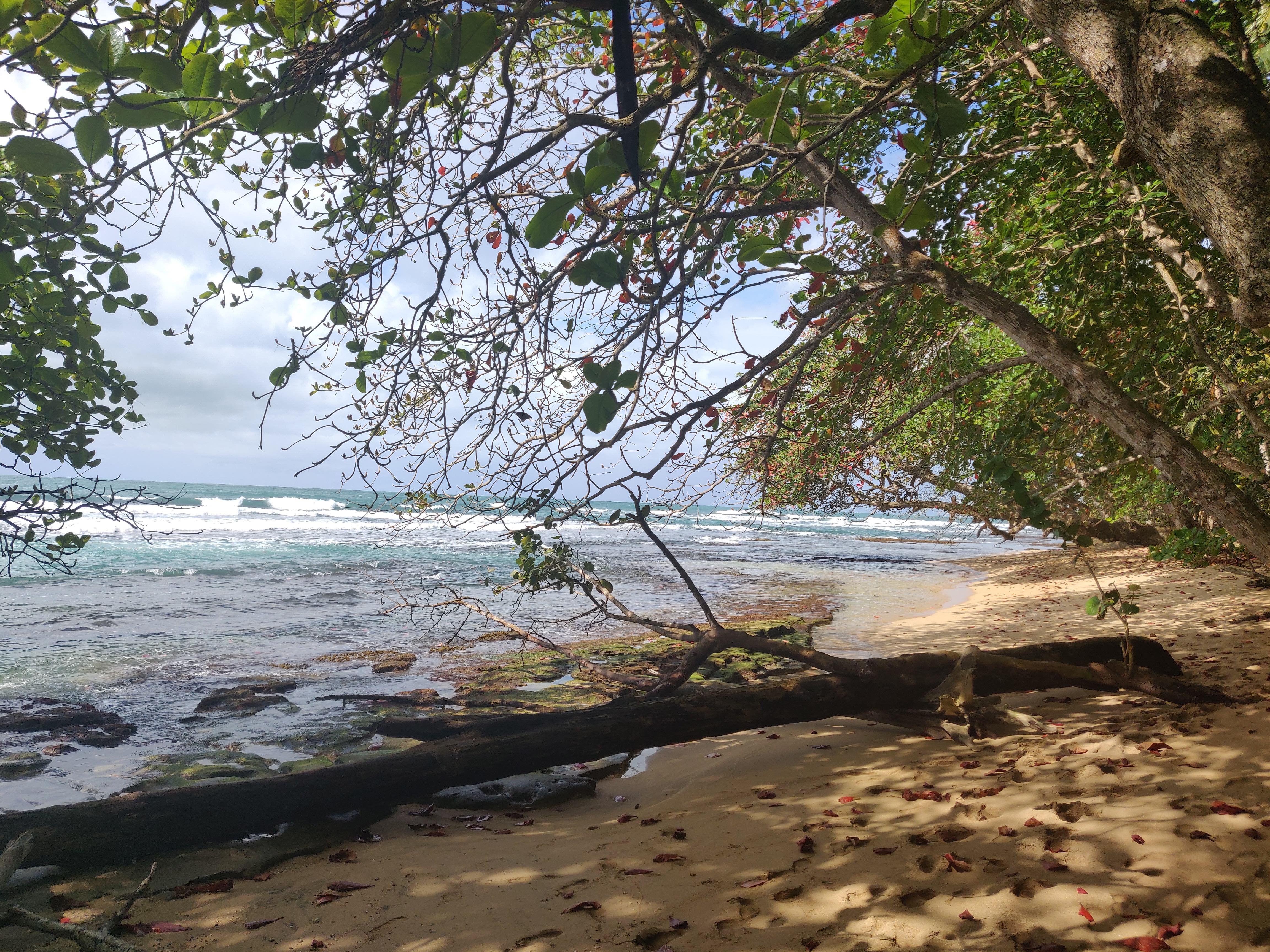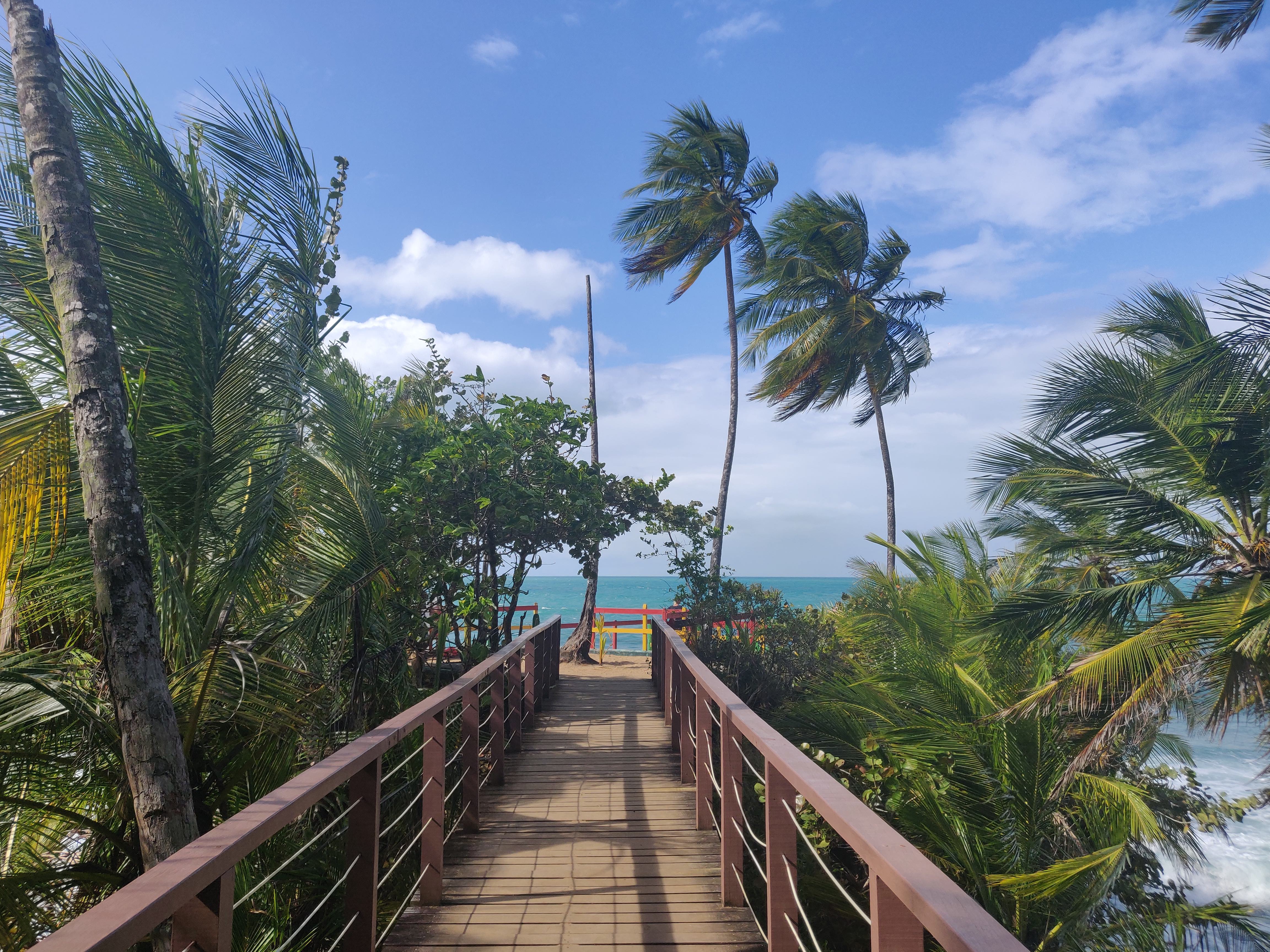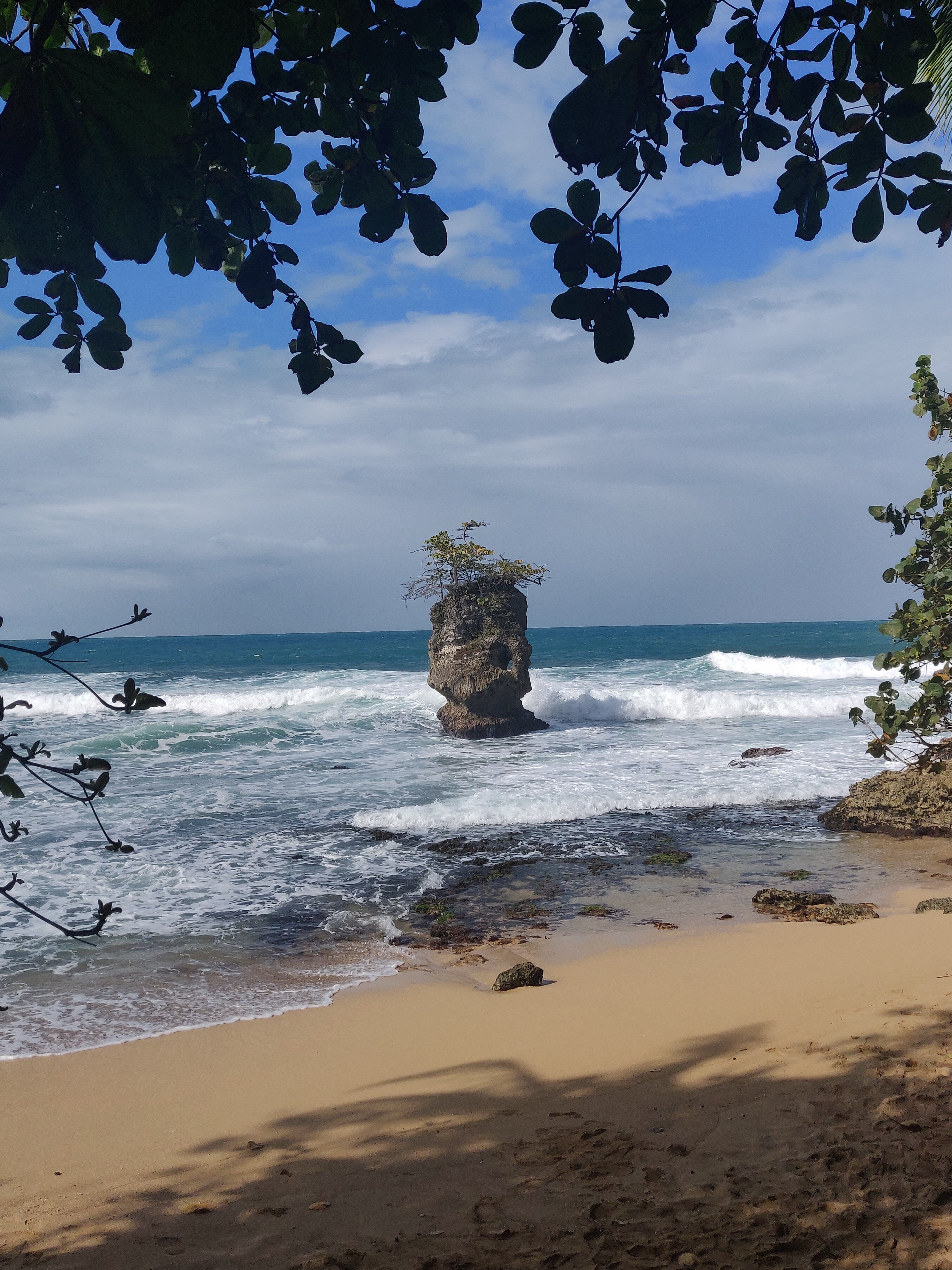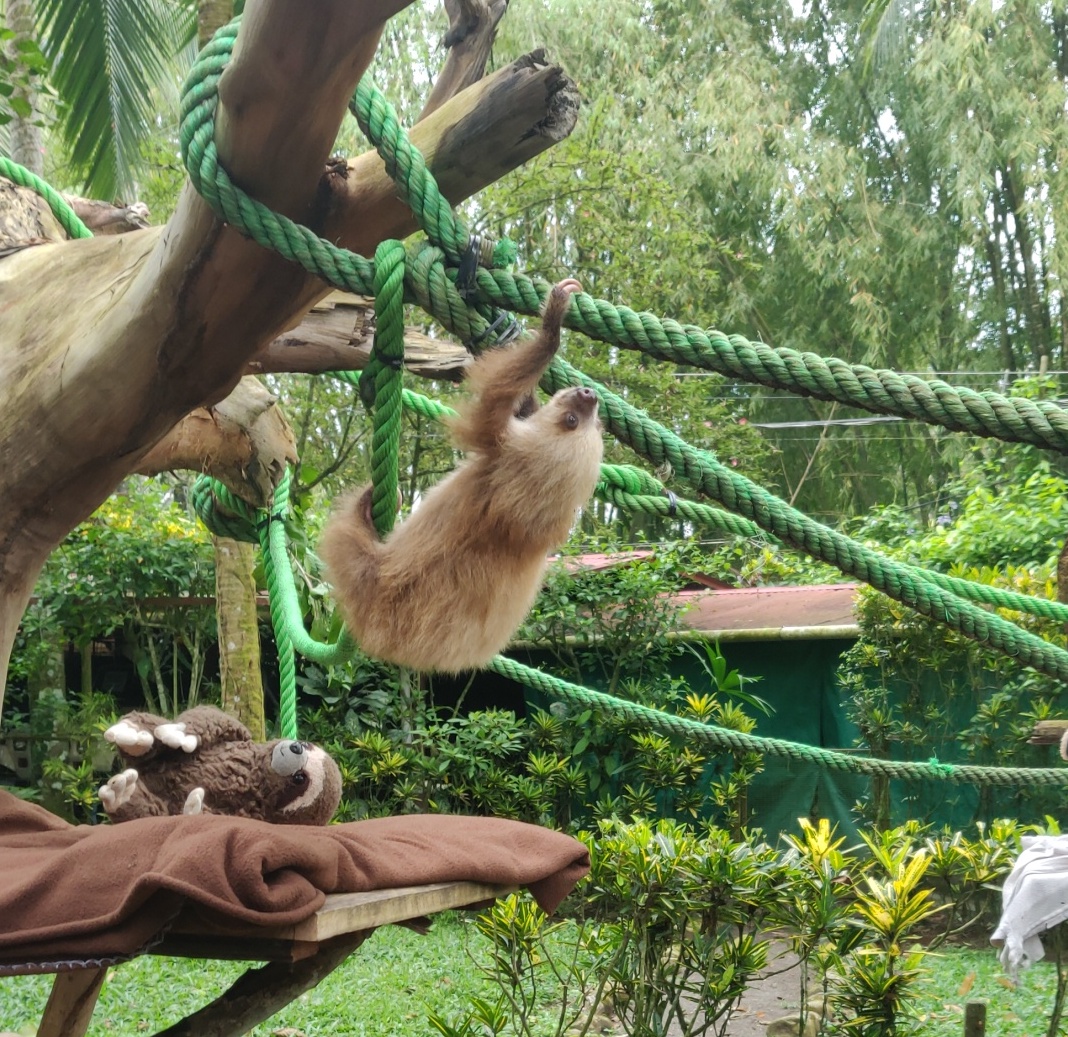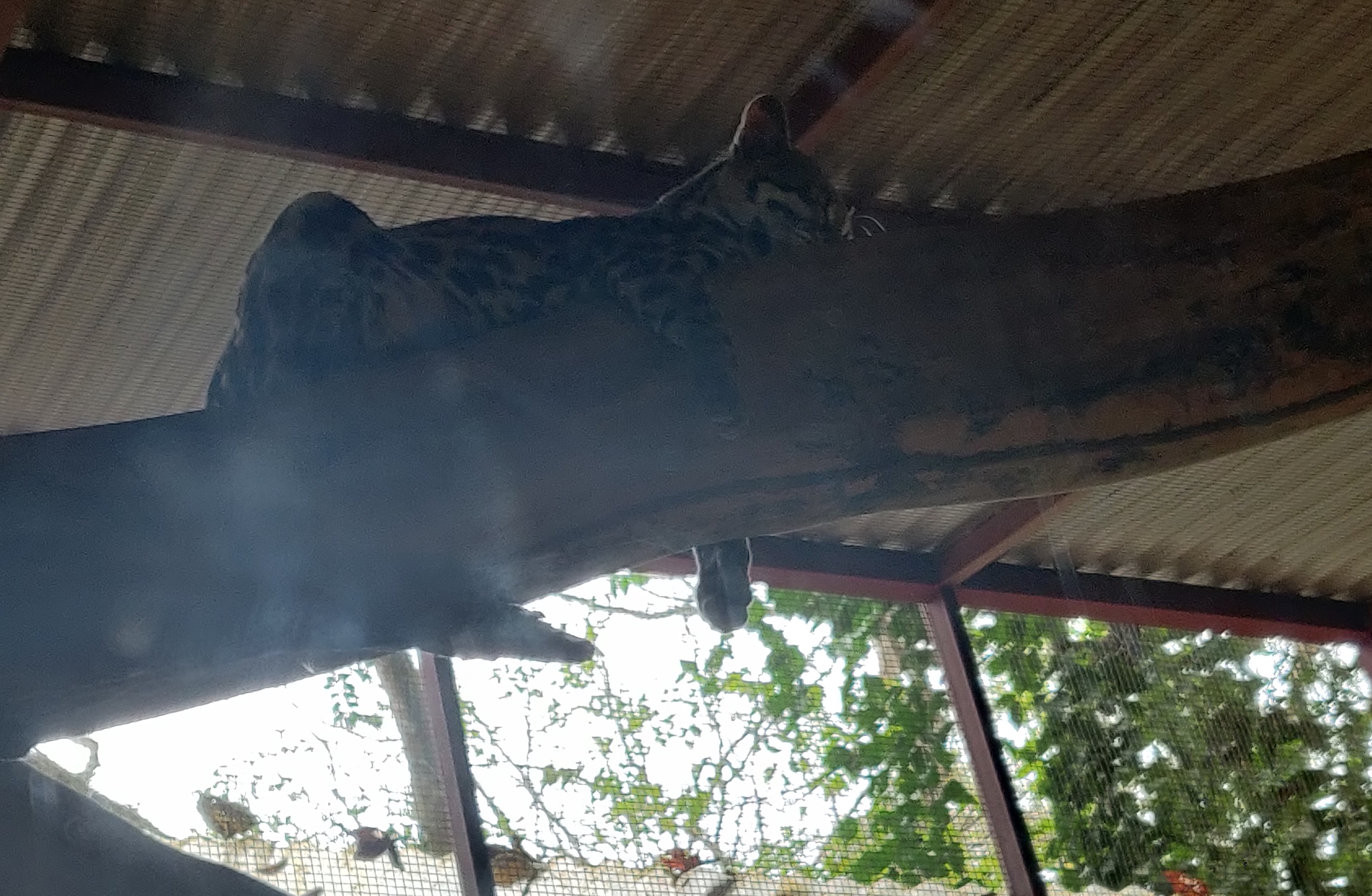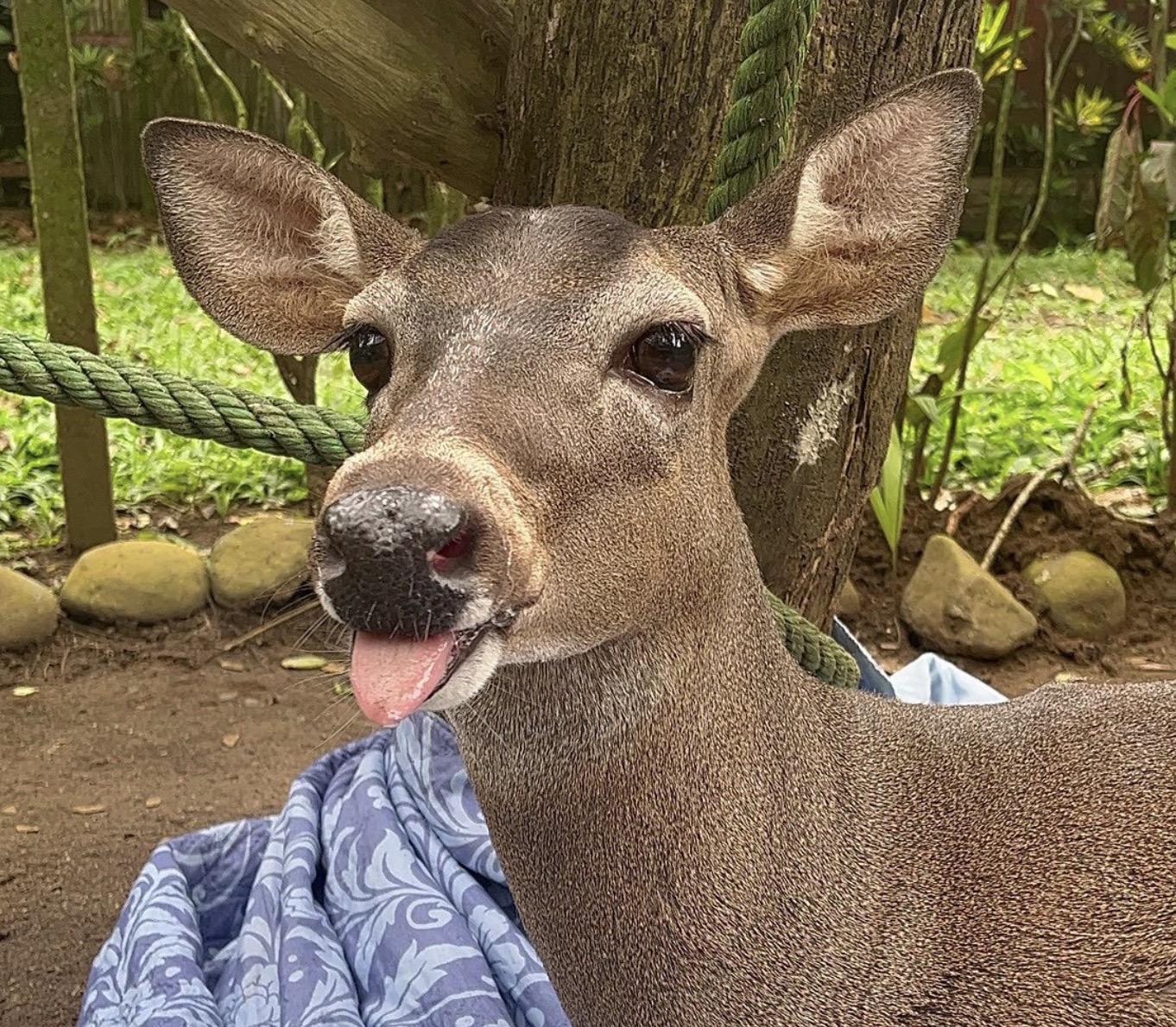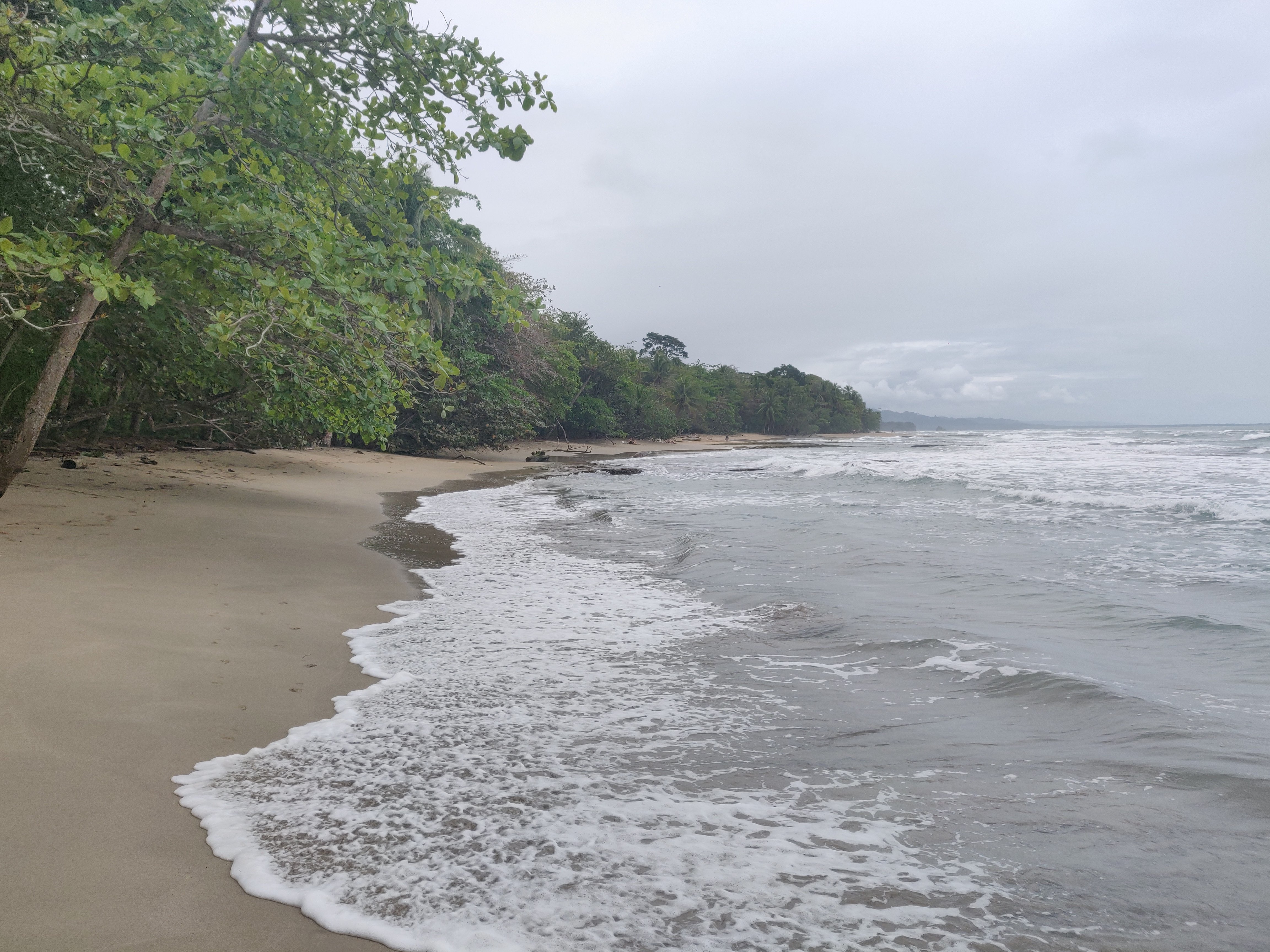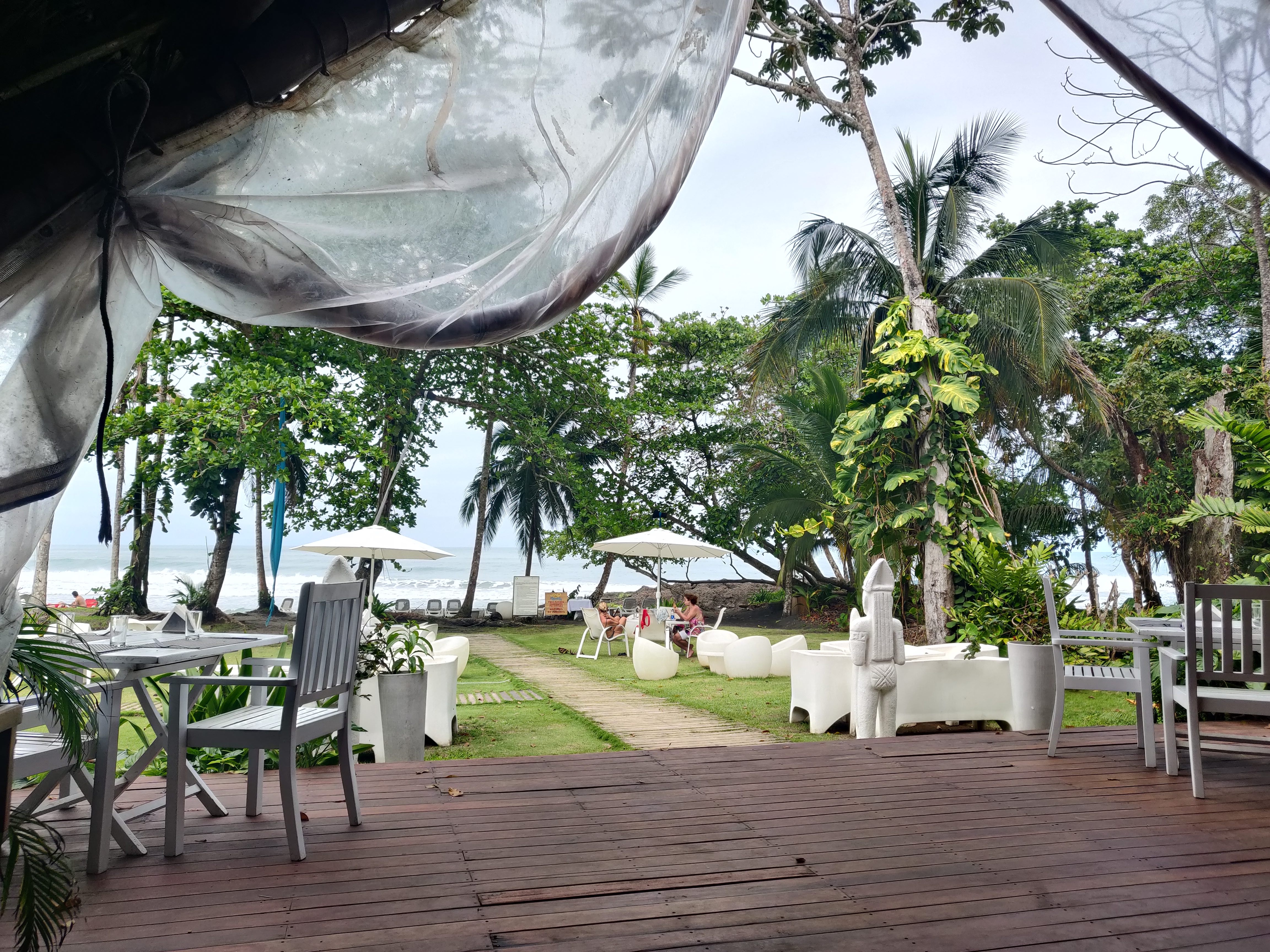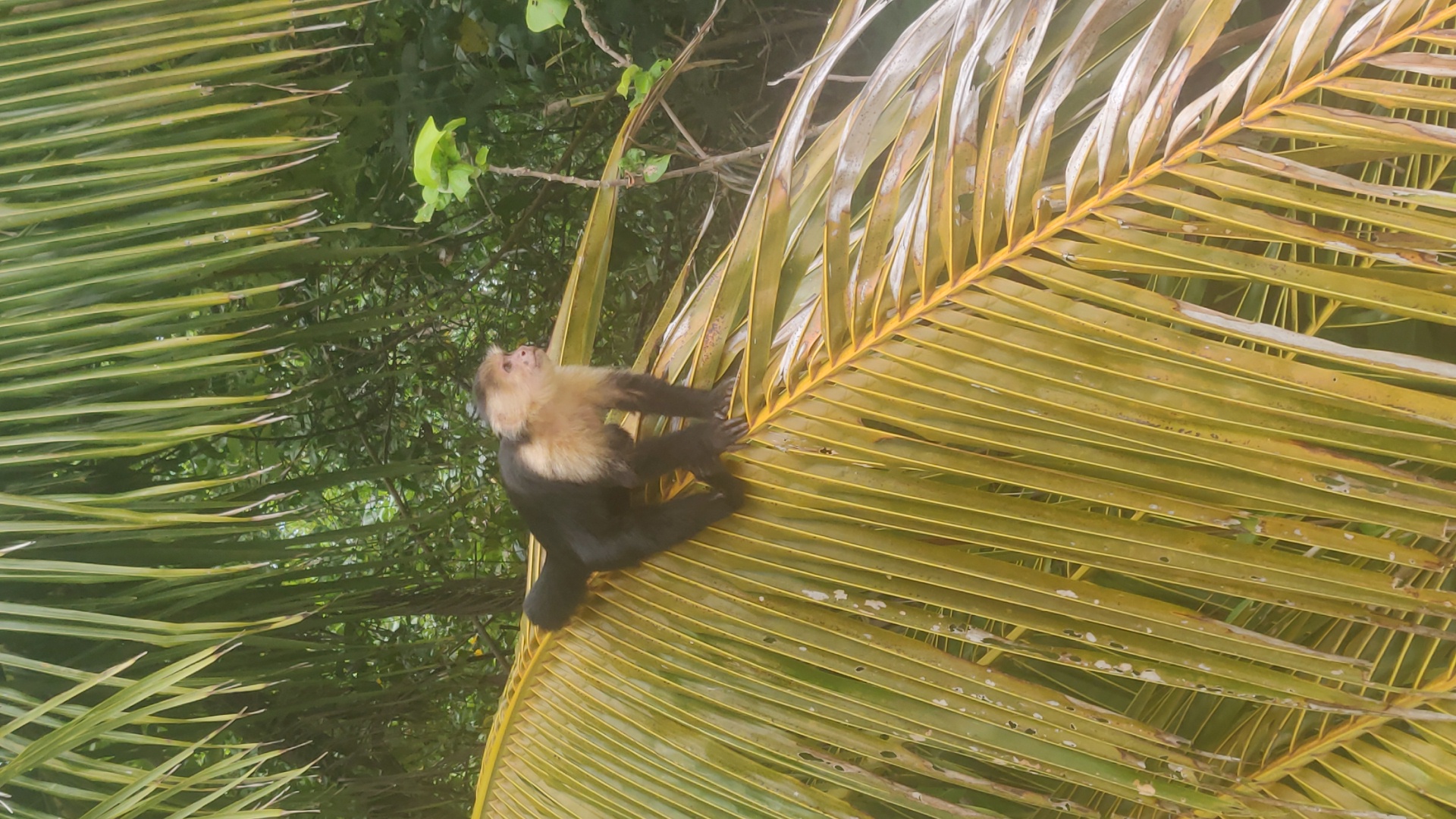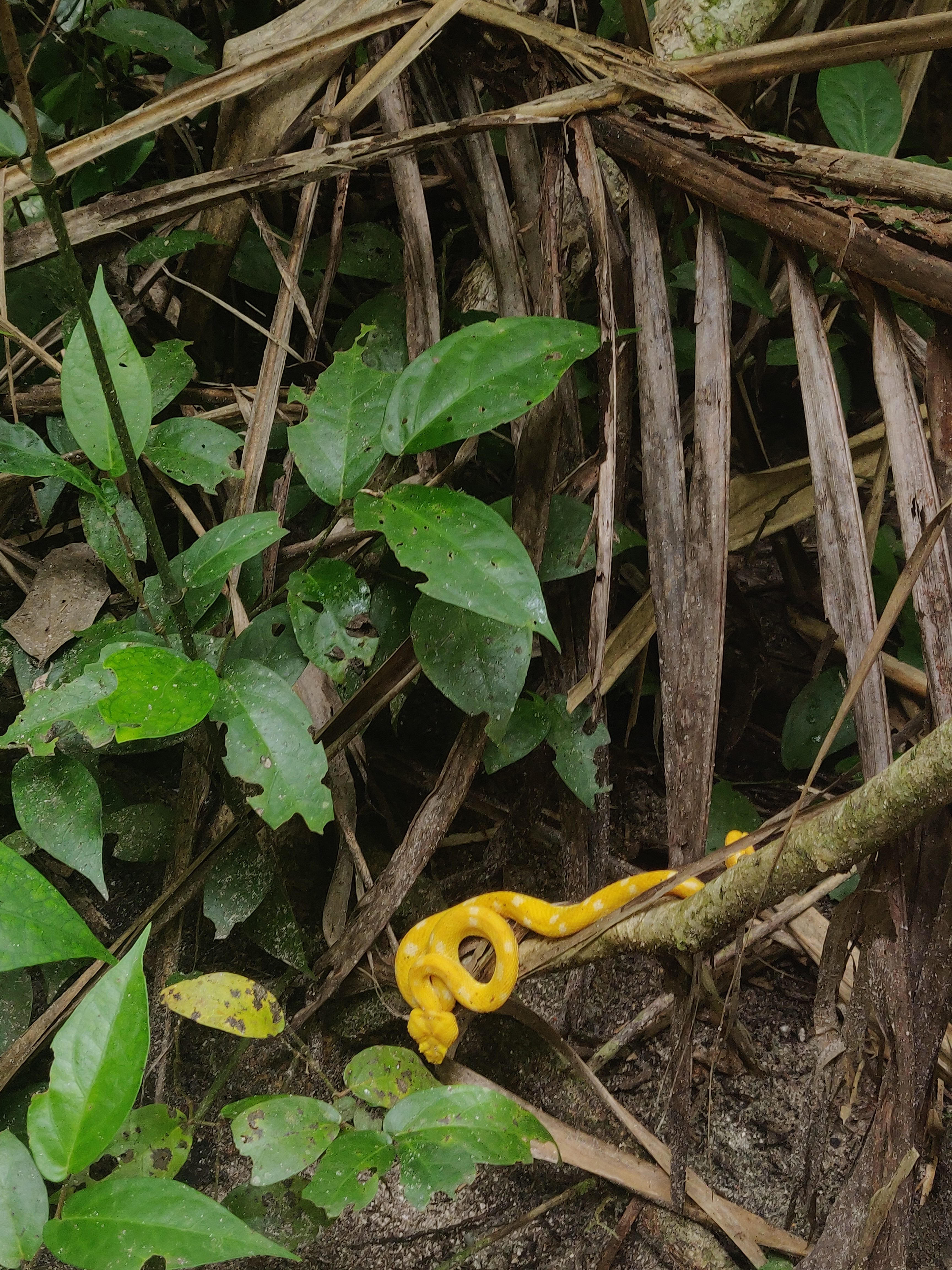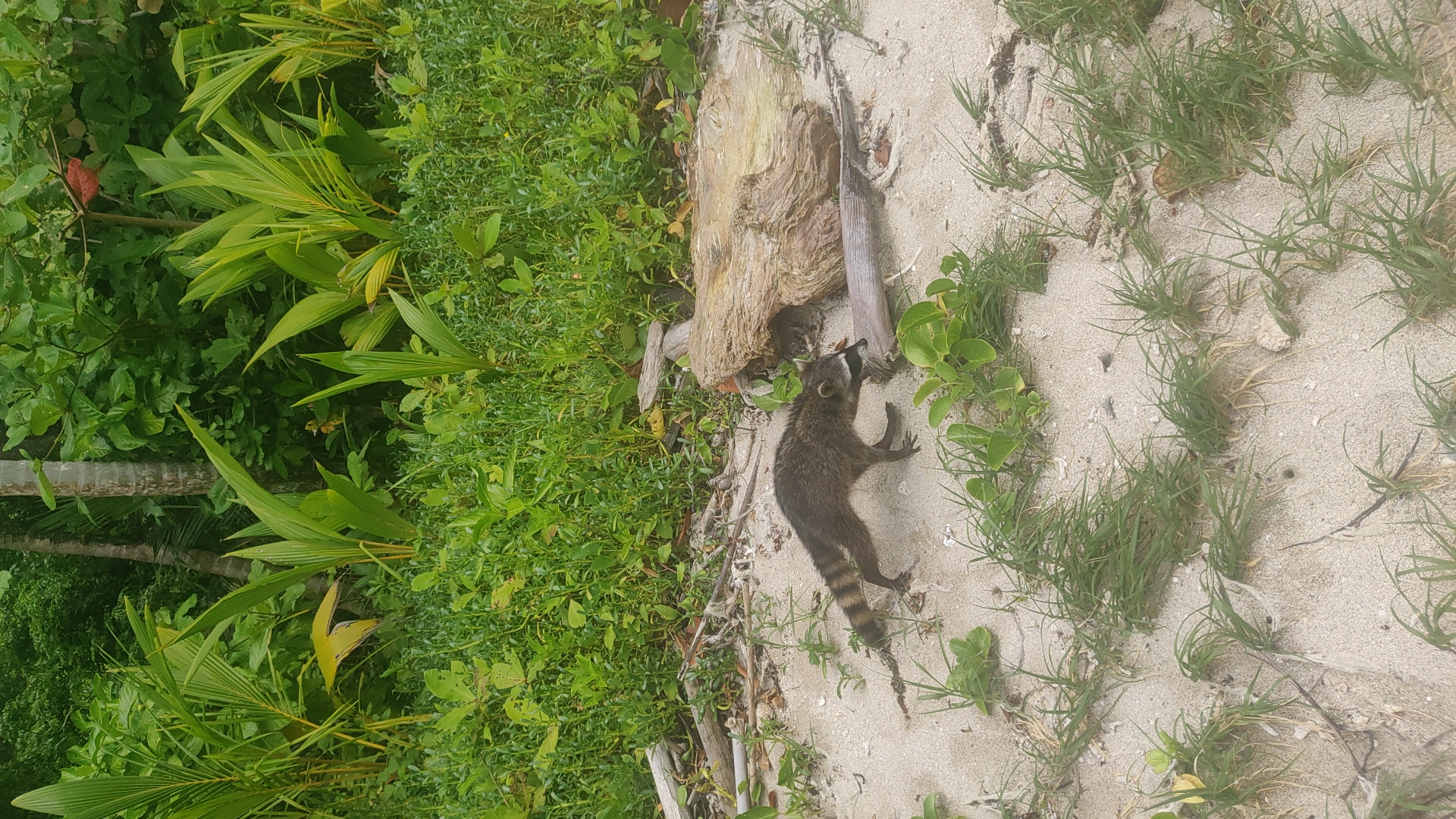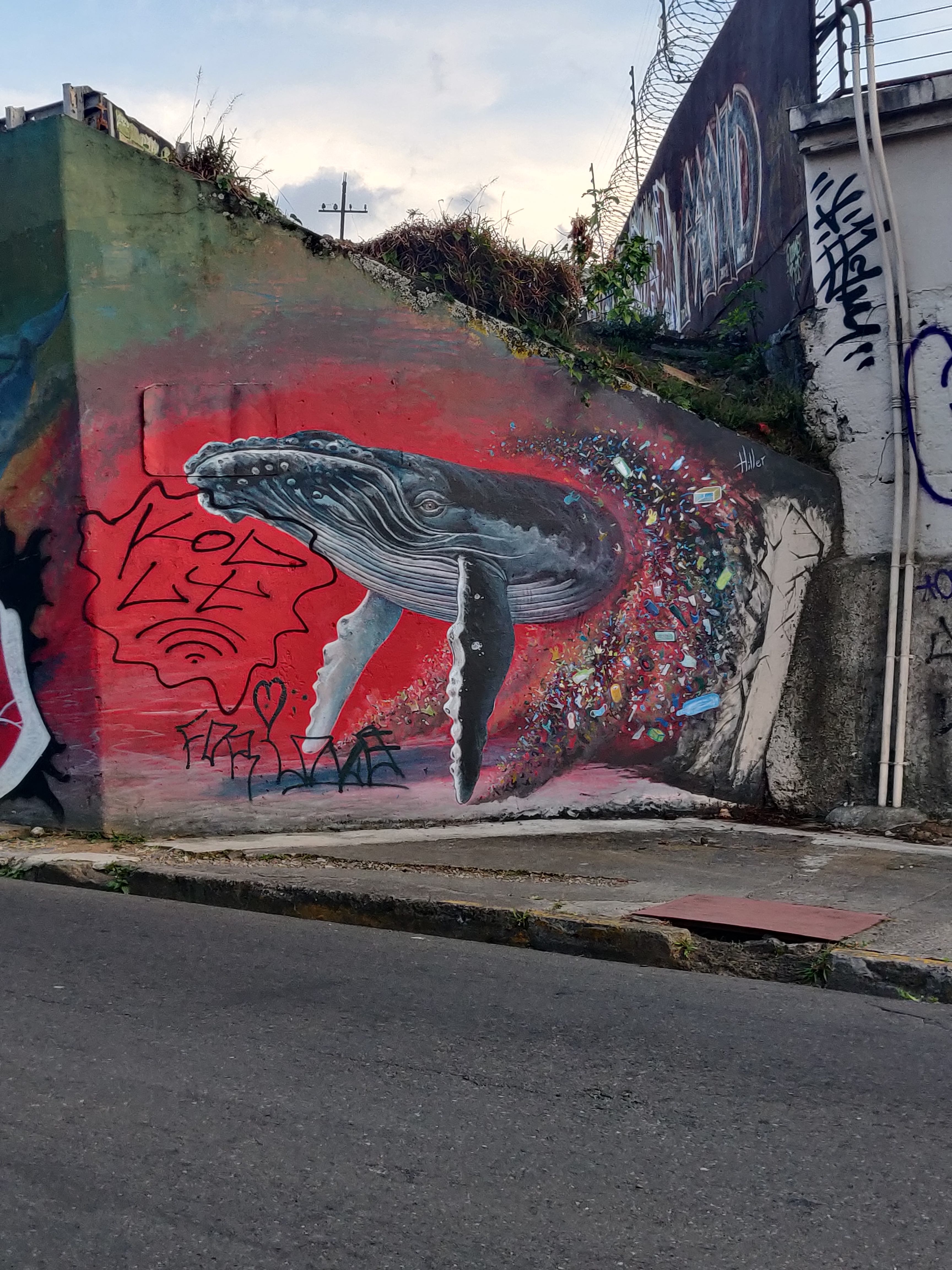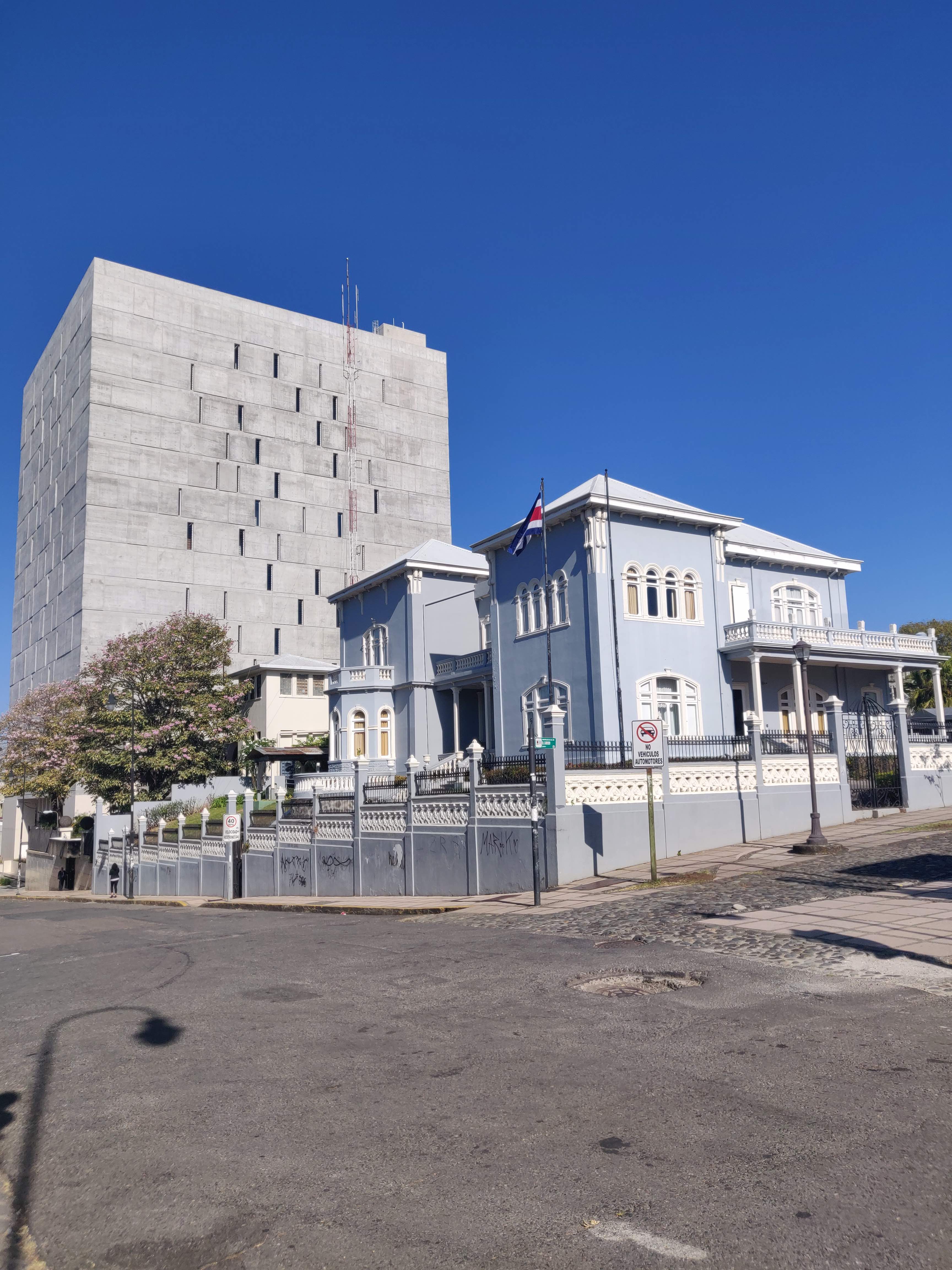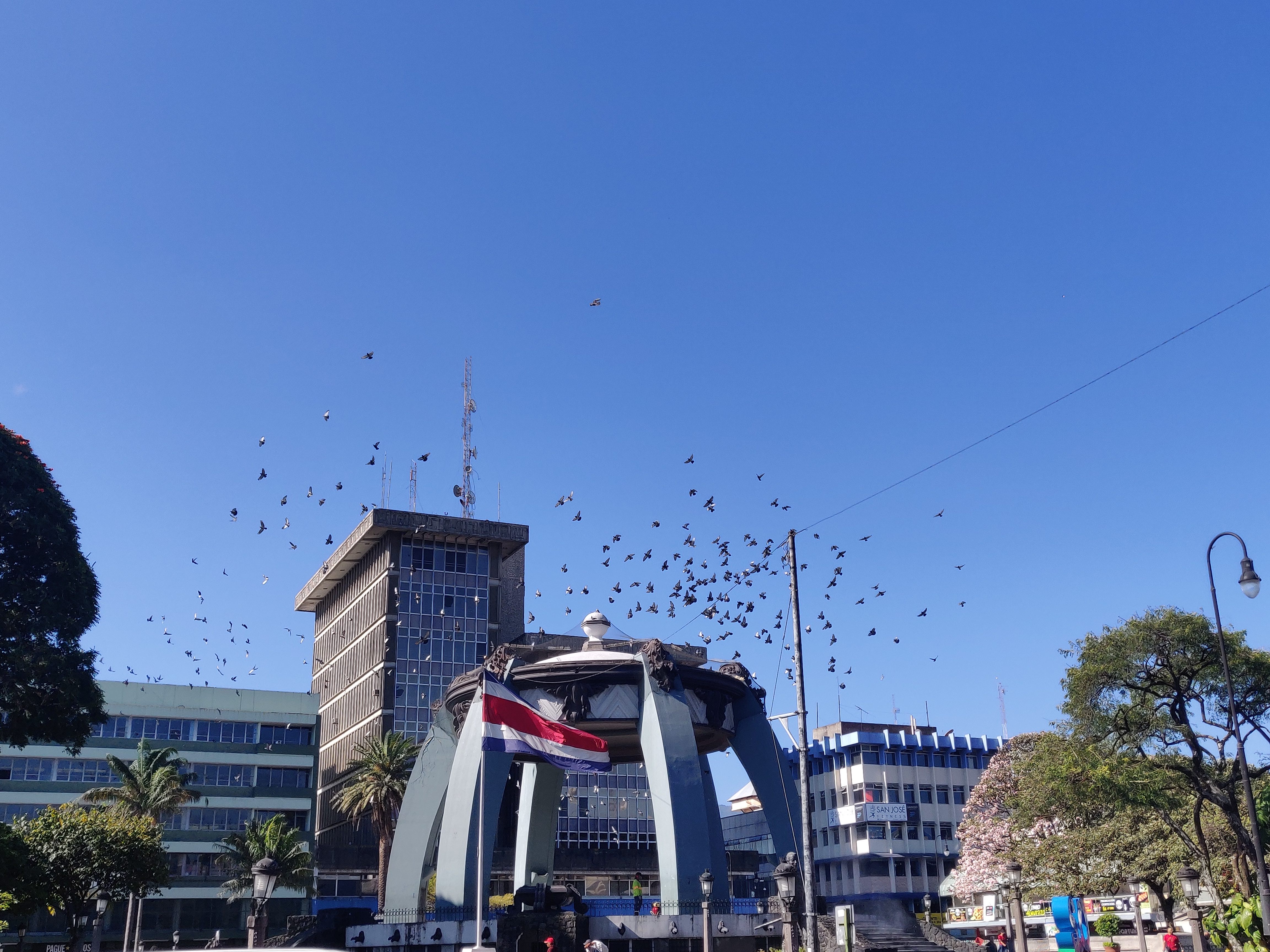Two weeks in costa Rica hiking trails, spotting wildlife and relaxing at the beach. Travel journal of the trip my fiancée and I did in February 2023.
All pictures have been taken by us with a OnePlus 6T smartphone. Copyright Alberto Soragna.
- Notes
- Day 1: Flight to Costa Rica and Monteverde
- Day 2: Cloud Forest and Coffee Tour
- Day 3: Cloud Forest and Transfer to La Fortuna
- Day 4: Arenal Volcano, Sloths and Hot Springs
- Day 5: Rio Celeste
- Day 6: Tortuguero Village
- Day 7: Tortuguero National Park
- Day 8: Puerto Viejo and Colina Secreta
- Day 9: Cycling to Manzanillo
- Day 10: Animal Rescue around Playa Cocles
- Day 11: Cahuita National Park
- Day 12: San José
- Day 13: San José and Flight Back
- Costa Rica Wildlife
Notes
Before we dive into the travel diary, I want to highlight some interesting and useful facts that we learned during our trip.
- Costa Rica is not a cheap country. Most of the tourists are from the US and the prices reflect that. The cheapest accommodations are around $25-$30 per person per night and the cheapest meals will be $10. Note that fish, meat, or any food in nicer restaurants will be closer to $25-$40.
- Some prices will be expressed in dollars, while others in colones. If the vendor does not accept cards (this will largely depend on where you are), you should always try to pay using the advertised currency as otherwise they will apply a very inconvenient conversion rate.
- Some banks only take visa, while others only mastercard. Most ATMs allow to withdraw only colones, but few banks will allow to withdraw both colones and dollars. All banks have ATMs available 24h.
- We booked all the hotels and most of the transports between them before arriving in Costa Rica. We booked the tours and trips on the very same day we did them with the only exception of full-day tours that must be booked at least one day in advance.
- We found some very good and some quite bad tour guides. I’m not sure if it’s an official rule, but full-day tours with transportation and lunch included usually have the worst guides. These guides are not terrible, i.e. They will still be better than you at spotting animals, but they will tell you very little about the biology and natural history details of what you visit. We ended up recognizing these guides by the fact that they carry the Costa Rica Wildlife Guide leaflet and they use it as their main and only way to describe you what you are seeing.
Day 1: Flight to Costa Rica and Monteverde
Taxi from San José airport to Monteverde (180$)
After a long flight and a two-hour delay, we arrived at San José Airport in the late afternoon; the airport is quite small and it took less than 20 minutes to get out.
We had reserved a private transportation to take us to our first hotel in Monteverde. Although it was the most expensive option, we wanted to avoid any risks on our first day: other options are shared shuttles at 60$ per person or cheap public buses. However, the shuttle wouldn’t have waited for our plane delay and it was too late to catch the last bus. We had considered renting a car, but we were discouraged by some of the blog posts and discussions we read about the difficulty of driving from San José to Monteverde, especially at night. However, we found that the road was not that bad. There were a few bumpy spots, but overall it was a regular mountain road with several bends. It was entirely paved and it didn’t require a 4x4 vehicle.
We arrived at our hotel in Monteverde around 10 PM, tired but excited for the adventures ahead. We had chosen Monteverde because of its reputation as a nature lover’s paradise, with a rich array of flora and fauna to explore. We looked forward to exploring the cloud forest and experiencing the beauty of Costa Rica’s natural landscape. Overall, our first day in Costa Rica was a success. Despite the late arrival and the challenging journey, we felt safe and comfortable with our private transportation, and we were excited to begin our adventure.
Santa Elena Town
We had heard that Santa Elena was a small town, but we didn’t expect it to be so small. The town centre was made up of just three roads with several restaurants, souvenir shops, and hotels. You will find multiple ATMs, one of which allowed to withdraw both colones and dollars. It was a quiet town with very few people out and about, and most of the people we saw were tourists.
We had chosen to stay outside of the town center, in a hotel that was a 25-minute walk away, closer to the nature and looking for peace away from the tourist crowds. We soon realized that it wouldn’t have been necessary we could have easily stayed in one of the hotels in the town center, saving us a very steep walk everytime we wanted to get something. There are also some nice and more expensive hotels with jungle view, but you will have to move further away from the center.
The weather in Monteverde is much colder than in other parts of the country, and we had to layer up to stay warm. We experienced very strong winds in the morning and in the night and frequent rains. This combination made relaxing quite difficult and we ended up running from one organized activity to the next one.
Day 2: Cloud Forest and Coffee Tour
Reserva Bosque Nuboso Santa Elena (18$)
On our second day, we visited the breathtaking Reserva Bosque Nuboso Santa Elena, one of the cloud forests in the Monteverde area. Getting there was easy - we simply messaged the shuttle service our location using WhatsApp and they picked us up for a round trip of $6 per person.
Though we explored the reserve on our own, in hindsight, getting a guide would have been worth it, as it was not a significant price difference. Despite starting our hike around 10 AM, there were very few people on the trails, allowing us to fully appreciate the majestic vegetation. Unfortunately, we only caught a glimpse of a few birds and no other animals, as the lush foliage made it challenging to spot them. However, we did spot a coati in the parking lot outside the reserve, the first of many close encounters with wildlife during our trip in Costa Rica. Overall, the experience was a must-do and it immediately made the trip to Monteverde entirely worth it. Walking the trails, surrounded by such an incredible environment, gave us an incredible sense of peace that we had not experienced anywhere else.
They told us that the Caño Negro trail is the one the gets more towards the hearth of the jungle, but it is often quite muddy. This is also the longest trail, so we decided to hike the others to not have to rush. They were all mostly flat, without any particularly challenging sections.
Coffee Tour Don Juan (38$)
Following the reserve, we embarked on a guided tour of a plantation that was meant specifically for tourists and educational purposes. The “3 in 1” tour lasted for two hours, with the first hour dedicated to learning about coffee plant cultivation and interesting coffee facts. The subsequent 20 minutes covered sugar cane, where we had the chance to use an old manual machine to extract the juice and then try it plain or mixed with a local alcoholic beverage. The last 40 minutes of the tour were spent learning about cacao, from the plant to the chocolate-making process, and ended with a delightful tasting of hand-made chocolate.
Though I initially had reservations about doing a coffee tour, I was pleasantly surprised by how engaging and informative it was. The farm was stunningly beautiful, and we even spotted a group of agutis, a coati and a toucan. Before and after the tour, we enjoyed free coffee, water, and fruit in the shop, where we could also purchase products and souvenirs. Additionally, the farm offers a night walk, which comes with a 10% discount if you book it together with the tour. They also provide shuttle services to and from your hotel for $3 per person per route.
El Establo Night Walk (30$)
Monteverde offers various night walk tours that differ in the location of the walk. Prices range from $25 to $35, but it’s worth noting that some tours do not include transportation to and from your hotel. We opted for the El Establo night walk because it takes place closer to the forest than other options that seemed too close to the town center. While some tours may go into the actual national park, most will take you through public trails or small forests in the area.
Despite the heavy rain and cold wind that started as soon as we arrived, the experience was very interesting. Our knowledgeable guide provided detailed explanations about the local wildlife and answered all our questions. Although we didn’t see many animals during the walk, the ones we did see were fascinating. Participants were divided into groups of about six people, each with its own guide, and we all set off in different directions. The guides informed each other when something interesting was spotted. We saw an olingo running around some trees and zipline cables, a tarantula, a scorpion that glowed blue under UV light, and many insects. However, we didn’t see any snakes or frogs, which we would have expected given the weather.
Day 3: Cloud Forest and Transfer to La Fortuna
Monteverde Cloud Forest (25$)
The third day of our trip in Monteverde began with a visit to the main cloud forest of the area. We arrived at the forest around 8 AM, hoping to increase our chances of spotting interesting wildlife. Again, we used a shuttle service from the town to easily reach the forest.
While we didn’t have any luck spotting any exciting animals during our visit, we did see a couple of coatis in the parking lot: one upon our arrival and another one while waiting for the shuttle back to town. The forest itself is similar to the Reserva Bosque Nuboso Santa Elena, but we found that we preferred the colors and vegetation of the latter. Despite our expectations of crowds based on online reviews, the trails were mostly empty, providing a peaceful and tranquil atmosphere. The forest is definitely worth visiting for its breathtaking viewpoints, suspension bridges, and a small waterfall, which offer a unique and different experience compared to the Santa Elena forest.
Overall, even though we didn’t see much wildlife, the stunning natural beauty of the forest and its peaceful ambiance made the visit a worthwhile experience. We left the forest around 12 PM feeling content and fulfilled.
Most trails were flat and easy, but one of them was made of stair-like bricks for its entire 1 km length Despite being probably the most challenging one, it is highly recommended as the vegetation in this area of the forest is quite different from the rest on the park, and absolutely beautiful.
Jeep-Boat-Jeep to La Fortuna (30$)
After grabbing a quick bite in Santa Elena, we were ready for the next leg of our journey: a trip to the town of La Fortuna, located near the Arenal volcano. We opted for a jeep-boat-jeep transfer, which is the fastest option and it included a scenic drive through the countryside and a relaxing boat ride across the lake. However, despite the name of the service, we were slightly disappointed that the “jeep” turned out to be a small shuttle bus. After crossing the lake, we took a short bus ride to our hotel in La Fortuna. While it is possible to book each leg of the transfer separately for a lower cost, the drive from Monteverde to the lake is quite long, and the savings may not be worth it if you end up missing your boat. Overall, the transfer was a convenient and enjoyable way to reach our destination.
La Fortuna
La Fortuna is a small town that serves as the main hub for tours and activities in the Arenal area. Located about 8-10 km from the Arenal volcano, it offers a range of accommodation options to suit different budgets and preferences.
However, the town itself can be quite disappointing for some visitors. It’s essentially a long road lined with restaurants and souvenir shops, and there isn’t much else to do. Moreover, the town is not very clean, which can detract from the overall experience.
As for accommodation, there are different types of hotels to choose from. Some hotels offer spa facilities and natural hot springs, but these can be very expensive and book up quickly. There are also hotels with “non-natural” hot springs, which are cheaper but can be crowded and touristy. Alternatively, there are hotels outside of town that offer a more relaxing atmosphere; these can vary widely in price. All the aforementioned hotels will be far from the city center and you will have to use a car to get there as the street is poorly illuminated and without a pedestrian walk. You will also find hotels in the city center: these will usually be on the cheaper side, such as hostels.
Getting around La Fortuna can be a challenge without a car. Taxis are expensive, and while Uber is available, it’s not officially recognized in the area and can be unreliable. There are no shared shuttles like in Monteverde, so visitors may need to rely on private transportation. Our hotel gave us the contact of an unlicensed taxi, which was roughly half the price of the official ones, but he wasn’t always available and we didn’t know how to find other people offering this service. In hindsight, it may have been worth renting a car just for the few days we stayed here.
Overall, while La Fortuna may not be the most exciting town to explore, it’s a good base for exploring the Arenal area and offers a range of accommodation options to suit different needs and budgets.
Day 4: Arenal Volcano, Sloths and Hot Springs
Arenal 1968 Trail (25$)
We kicked off our second day in La Fortuna with a hike on the Arenal volcano. There are three natural parks to choose from: the Arenal Volcano National Park, the Arenal Observatory, and the Arenal 1968 trail. We opted for the latter, which follows the path carved by the lava stream during the last eruption of this still-active volcano. While opinions vary on which park is best, they all offer similar experiences.
The hike was a unique one, unlike any others we had taken on our trip due to the volcanic terrain. We were pleasantly surprised by the excellent English of the park staff and the well-organized facilities. At the end of the trail, there’s a pricey restaurant, but it boasts a breathtaking view of the volcano. The park has three trails of varying lengths, and visitors have to choose which one to tackle (as all trails mostly share the same path). All trails start by traversing the lava flow path until they reach a viewpoint near the volcano. You can either take a shortcut to return quickly (short trail) or continue on a longer path, winding around volcanic rocks (medium trail). The longest trail offers a forest-like environment around a small volcanic lake, giving you a better opportunity to spot wildlife, although we didn’t see much.
Guided tours are available, but they don’t seem worth it. According to the guides, there isn’t much wildlife in this area, and if you’re interested in the volcano’s history, it’s easily accessible online. Overall, it’s a pleasant hike that offers breathtaking views of the volcano and a unique volcanic terrain experience.
Sentiero Bogarin (49$)
The Sentiero Bogarin in La Fortuna is a must-visit for wildlife enthusiasts. The short, entirely flat trail located in a private reserve is advertised as one of the best places to see wildlife, particularly sloths, and it certainly didn’t disappoint. We decided to take a guided tour and were amazed by the number of sloths, beautiful birds, and even a couple of strawberry poison dart frogs we were able to observe. Our knowledgeable guide provided us with access to a telescope, which was a game-changer in allowing us to capture the intricate details of the animals. It was fascinating to discover that so many animals could be found in such a small reserve. According to our guide, the animals feel safe from predators in this environment and are surrounded by their favorite vegetation to eat.
There are cabins located just outside the reserve, which could be an interesting option for accommodation. We were pleased to find out that if you purchase a guided tour, you can reuse the ticket to enter the following day and explore the trail on your own.
Titoku Hot Springs (52$)
After a long day of hiking and wildlife watching, we decided to unwind at the Titoku Hot Springs. Although it was the only available option we could find on short notice (24h), we found the experience not particularly satisfying. The hot springs consisted of a few small pools with varying temperatures, which were not particularly remarkable compared to other hot springs we have visited. The package deal we purchased included transportation to the Kioro Hotel for dinner.
In hindsight, we would have probably been better spending the evening at a more luxurious hot spring resort like Tabacon or EcoTermales, which however should have been booked at least a couple of weeks in advance, or alternatively exploring the nearby free hot springs.
Day 5: Rio Celeste
Rio Celeste with Jungle Tours Costa Rica (70$)
On the next day, we embarked on a day-trip to explore Rio Celeste, a popular natural attraction situated in Tenorio Volcano National Park. This stunning river boasts remarkable turquoise blue waters, surrounded by lush tropical rainforest and spectacular waterfalls, which make it one of the most photographed spots in Costa Rica.
We had a friendly guide who accompanied us on the trip, but he didn’t provide much information about the natural history of the place. Nevertheless, the guided tour was beneficial as it included transportation to the park. The trail, which is around 7 kilometers long, was lovely, but we found it to be extremely crowded. One of the highlights of the hike is the point where two rivers converge, and the minerals in the water cause a chemical reaction that creates the incredible blue color. This trail is also characterized by a typical egg-rotten sulfur smell throughout many of its sections. Although the tour included lunch and the opportunity to swim in the blue river, we were quite disappointed to discover that swimming was not feasible due to the river’s shallow depth and strong currents. Instead, we could only sit with our legs in the water.
Overall, I would not recommend this experience, especially if you have to travel from La Fortuna. It’s better to explore other attractions such as the La Fortuna waterfall or the Mistico Hanging Bridges, which received high praise from all other visitors we met.
Day 6: Tortuguero Village
Transport to Tortuguero with Exploradores Outdoors (65$)
The following day, it was time to leave La Fortuna and we embarked on an unforgettable adventure to the remote and beautiful Tortuguero, one of the most fascinating places in Costa Rica. The journey started early in the morning, leaving our hotel in La Fortuna at 5:30 AM. Along the way, we stopped at Siquirres for a delicious and hearty complimentary breakfast, then we directed to Cano Blanco, and we were also given some insightful information about the banana plantations that dotted the area, including Chiquita and Del Monte.
From there, we took a scenic boat ride to the Tortuguero village, passing through winding rivers with breathtaking views of the lush forest and diverse wildlife around us. It was a peaceful and magical experience, and we could not believe how pristine and unspoiled the environment was. The ride was quite comfortable, and the guide on the boat shared fascinating facts about the local flora and fauna.
We arrived at Tortuguero village in time for lunch and we were thrilled to explore the area.
The village is unique, and its remote location makes it a hidden gem that is a must-visit destination for nature lovers. Overall, it was a day full of adventure and discovery, and we highly recommend this tour operator for anyone looking for a memorable experience in Tortuguero.
Tortuguero Village
Tortuguero Village is a charming and remote community situated on the northern Caribbean coast of Costa Rica, surrounded by the lush rainforest and bordered by the Caribbean Sea. Only accessible by boat or small plane, it is the only settlement within the Tortuguero National Park, adding to its unique and secluded atmosphere.
Once a small and uncharted village with only 200 inhabitants and a weekly boat to access it, it has now grown to over 2000 locals, becoming a hub for eco-tourism with daily boats to and from the village. With no cars allowed in the village, the only means of transportation are by foot or by boat. Tortuguero has a few restaurants, bars, souvenir shops, and a small supermarket for basic necessities. As of February 2023, there are no ATMs in Tortuguero. One was installed few years ago but it is no longer operational. It’s essential to bring cash for hotel and tour payments, although many restaurants accept cards.
There are two main attractions in Tortuguero: turtle nesting tours at night (availability depends on the season) and early morning boat tours along the canals, which offers a glimpse of the abundant wildlife and lush vegetation. For this reason, the majority of tourists only spend a single night in the village. This high turnover of people contributes to the behavior of the many tour operators and shop owners in the village, which will try to maximize their profit by being very pushy and insistent in trying to make you buy something. This is particularly evident the first moment you arrive in the village: boats arrive between 11 AM and 1 PM, so around this time the street is flooded by a chaotic mixture of tourists trying to understand where to go and locals trying to sell them something.
It’s worth looking past the initial shock to appreciate the natural beauty of Tortuguero and its surroundings. The village offers an authentic taste of the Costa Rican “pura vida” lifestyle, with locals having a deep connection to nature and it is a welcome retreat from the hustle and bustle of city life.
Accommodations in Tortuguero are primarily located within the village, with some lodges situated outside the village along the canals. While position is not a crucial factor in choosing accommodation, cheaper options not facing the canals should be avoided Keep in mind that lodges outside the village will require a taxi-boat for access.
Despite its flaws, Tortuguero village has been a turning point in our vacation. Although we enjoyed the breath-taking tours we did in Monteverde and La Fortuna, we were feeling that those places and activities were all carefully manufactured for tourists, without allowing to understand much about the real essence of this country.
Night Walk with Tortuguero Native Tour Guide (30$)
After lunch, a quick exploration of this tiny village, and some relax, we booked ourselves for a night tour. Later we discovered that there are two types of night walk tours in Tortuguero: one goes along the village, the other into the national park. Almost all the tour operators will give you the former.
Our tour guide, from “Tortuguero Native Tour Guide”, led us on a public trail that runs alongside the beach. It was the mating season for Golden Orb Weaver spiders, and we were in awe of the sheer number of them we spotted. The spider webs were like a labyrinth as we passed through some cultivations, making for a truly unique experience. We were fortunate to have spotted two red-eyed tree frogs, several large iguanas, and two snail snakes, definitely making this tour a highlight of our trip. There are many operators offering this same tour, but we highly recommend “Tortuguero Native Tour Guide” for their knowledgeable guide, who also took us further from the village where we could spot more wildlife. We saw most other tours all being together in the same areas, making it easier to disturb animals making them run away.
Day 7: Tortuguero National Park
Boat Tour with Casa Marbella (25$ + 16.5$)
The next day, we embarked on a 3-hour early morning (6 AM) boat tour to explore the Tortuguero canals. Initially, we were looking to go on a guided canoe or kayak tour, but we were pleased with our decision to take the Casa Marbella boat tour. Equipped with an electric motor, the boat was as quiet as the canoes and kayaks around us, allowing us to approach wildlife without disturbing them. We navigated the same areas as other tours, we were able to explore many of the canals inaccessible to standard motorboats, but we were also able to move at a faster pace when needed, affording us more opportunities to observe the flora and fauna.
Our guide, a Tortuguero native, was exceptional, with an in-depth knowledge of the area’s biology and natural history. He shared fascinating stories about Tortuguero while pointing out a variety of animals such as birds, iguanas, monkeys, and caymans. He has been hands-down the best guide we found during our trip to Costa Rica and a reason to absolutely recommend Casa Marbella tours to everyone.
Note that in order to access this type of tours you will need to also purchase a daily admission to the park (16.5$). This will allow you also to continue exploring on your own after the boat tour.
Kayak Tour
After the tour, we rented a pair of kayaks and set out to explore the canals at our own pace. While we didn’t see as much wildlife as we had during the guided tour, both due to our lack of experience spotting animals in the canals as well as due to the later time in the day, the experience of paddling through the serene waterways was unforgettable. The heat and currents initially made the journey from the village to the canals a little bit challenging, but once we arrived, the lush vegetation and peaceful streams made it all worthwhile.
It’s worth noting that Casa Marbella offers complimentary kayaks to its guests, though there are many rental locations in the village. Since most guided tours occur early in the morning, we had the canals to ourselves as we paddled through the breathtaking scenery. The highlight of our kayaking adventure was visiting our guide’s favorite canal, an incredible and unforgettable experience
Tortuguero National Park Hike
After lunch, we decided to do a relatively short hike in the Tortuguero National Park. Indeed, besides what you can access by water, there’s also a trail that starts from the South of Tortuguero village.
This was a very easy and flat trail running parallel to the beach. The trail reaches a dead-end after 2km, thus you have to walk your way back the village. It ended up being a great opportunity to spot wildlife, indeed we saw several animals, including herons, a sloth, spiders, dragonflies, and a flock of maybe 10 scarlet macaws.
To access this trail it’s required to have purchased the daily admission to the national park (16.5$).
Night Walk with Casa Marbella (40$)
Later in the day, we embarked on another adventure with our guide from Casa Marbella. This time, we went on a night walk into the forest in the canals. It’s currently the only night tour in Tortuguero that takes you deep into the jungle, providing a true jungle experience The tour can be challenging as long parts of the “walk” are 30cm deep into the mud. Rubber boots are absolutely necessary to embark on this tour, which Casa Marbella offers to the participants. It’s also important to be very careful to not touch anything and follow the guide’s direction as there are many venomous snakes around the area that are active at night.
Our guide from Casa Marbella was amazing once again, providing us with vivid descriptions and insightful information. As we trekked through the forest, we saw a plethora of fascinating creatures, including a variety of frogs and insects, some sleeping birds, and even an opossum. It was truly a unique and unforgettable experience that gave us a glimpse into the nocturnal world of Tortuguero’s wildlife.
Note that, although this walk happens in the jungle inside the canals, it does not require to have a daily admission ticket.
Day 8: Puerto Viejo and Colina Secreta
Transport to Puerto Viejo (55$)
We had arranged transportation from Tortuguero to Puerto Viejo with the same tour operator (Exploradores Outdoors) that we had used to get to Tortuguero, but unfortunately, we wouldn’t recommend this service. Unlike the inbound journey, this transport did not include complimentary food, and the $10 burrito offered for purchase was not great. We noticed that there were many other transportation operators in Tortuguero offering this service for lower prices and with schedules that may better suit your plans. Moreover, this transport is managed by their associated company in Tortuguero (Roots Tour), which, despite we had a booking and a confirmation for $45 told us that the price was just an indication and made us pay $55.
Puerto Viejo
Puerto Viejo is a vibrant and laid-back town located on the Caribbean coast of Costa Rica. It is a colorful mix of Afro-Caribbean, Indigenous, and Spanish influences, which can be seen in everything from the local cuisine to the vibrant street art. The main street is lined with charming shops, restaurants, and bars, as well as a lively market where you can find everything from fresh produce to handmade crafts.
The real draw of Puerto Viejo, however, is its stunning natural beauty. The beaches here are some of the most beautiful in Costa Rica, with crystal-clear waters, white sand, and palm trees swaying in the breeze. Playa Cocles is a popular spot for surfing, while Punta Uva is known for its calm, clear waters and stunning coral reef. Beyond the beaches, the surrounding rainforest is home to a vast array of wildlife, including sloths, howler monkeys, and toucans. The Gandoca-Manzanillo Wildlife Refuge, located just south of Puerto Viejo, is a must-visit for nature lovers.
The recommended way to get around Puerto Viejo is by renting a bike. Although cheap tuk-tuk and taxis are also easily available.
Differently from most of the other places we visited during our trip, Puerto Viejo is also a major turistic destination for Costa Ricans, which constitute more than 30% of the tourists here.
Lastly, note that there are two towns called Puerto Viejo in Costa Rica: Puerto Viejo de Talamanca and Puerto Viejo de Sarapiqui. The one on the carribean coast, where we stayed and which you are likely also interested in, is the former.
Colina Secreta
So far in this blog we didn’t explicitly mention any of the hotels where we stayed. We have to make an exception for Colina Secreta, our accommodation in Puerto Viejo, which was truly a highlight of our trip and one of the best places we have ever stayed. Located a few kilometers outside of Puerto Viejo, in the Playa Cocles area, this “glamping” site offers a unique experience unlike any other. The main accommodations are a small number of deluxe tents surrounded by the Colina Secreta private forest of several hectares. Each glamping tent is different and is named after explorers, travelers, and writers of the past, each meticulously decorated and furnished according to different styles that reference their given name.
Staying in these tents allows you to be intimate with nature as if you were camping on your own in the forest while still enjoying the comfort and luxury of a 5-star hotel. The beautiful pictures on the website do not do justice to the incredible feeling of awe you experience when you first enter your tent. The first night at Colina Secreta may be a bit overwhelming as you get accustomed to the sounds of the forest, but you will quickly appreciate their calming effect and start to wonder how you will ever go back to your city apartment.
In addition to the incredible accommodations, the family that owns Colina Secreta are the best hosts you could ask for. You are not staying in a hotel, but rather a guest in their stunning house. They are always enthusiastic and willing to help in any way they can, from looking for taxis to recommending the best trips and tours. And then there’s the breakfast - served in their beautifully furnished open-air living room, it consists of delicious fruit, homemade marmalade, a selection of gourmet coffees, and additional savory and sweet dishes that change every day, often based on tropical reinterpretations of classic South American dishes.
It may fell strange to say it, but undoubtedly some of the best memories about our trip to Costa Rica will not be of a national park or a tour we did, but rather of this magical place. Colina Secreta exceeded our already high expectations from every point of view, and we are already wondering when we will be able to return there.
Day 9: Cycling to Manzanillo
Punta Uva
One of the best ways to explore the stunning coastline of Puerto Viejo de Talamanca is by bike. So, the next day, we rented bikes from our hotel and set out to explore the area.
Our first stop was Punta Uva and the lush green forests, white sandy beaches, and turquoise waters made for a breathtaking sight while cycling the 6km to get there. Punta Uva is a relatively small beach with crystal clear waters that are one of the best in the area for swimming and snorkeling. Unfortunately, the morning was quite cloudy and in general February is not a month recommended for snorkeling on the Carribean coast. Regardless, it is still definitely worth a visit, also thanks to its wildlife. We saw several monkeys, sloths and birds on the beach and on the trees around us. We took a dip in the ocean and enjoyed the stunning views before continuing on our bike ride.
Manzanillo Town and Reserve
Next, we cycled to Manzanillo, a charming little town that’s nestled between the forest and the sea. This town is much smaller than Puerto Viejo and it was an old fisherman village. We grabbed some lunch at a local restaurant before making our way to the Manzanillo Reserve, which we didn’t have high expectations for. But, we were pleasantly surprised. The trail that runs along the beach with the forest on one side and the sea on the other was a unique experience. We were fortunate to see monkeys, sloths, and other wildlife as we walked along the trail. We even stumbled upon a few small, secluded beaches where we could swim and soak in the sun.
The first part of the trail was easy and flat, but as we neared the Mirador viewpoint, it became increasingly muddy and steep. Getting to the La Cueva viewpoint required climbing on some cliffs, while timing the sea waves to avoid getting completely wet, which made for a bit of an adventure. However, we didn’t go further than that because the trail quickly became extremely muddy and we preferred to go back a little bit and enjoy one of the beaches that we had seen earlier.
One thing to keep in mind is that the sea level rises after 3 PM, and strong currents make it difficult to swim or enjoy the beaches in the area. It’s recommended to go earlier in the day to fully enjoy everything the Manzanillo Reserve has to offer.
Day 10: Animal Rescue around Playa Cocles
Jaguar Rescue Center (25$)
We began our second day in Puerto Viejo by visiting the Jaguar Rescue Center, a veterinary and rehabilitation clinic for wildlife. Managed entirely by volunteers, this center is dedicated to the care and conservation of animals in Costa Rica. It’s important to note that the Jaguar Rescue Center is not a zoo and does not have jaguars. While some visitors may be disappointed by this, the center offers a truly unique opportunity to see a variety of animals up close, including sloths, monkeys, macaws, and more.
However, a guided tour of the Jaguar Rescue Center is much more than a chance to see animals. It’s an educational and emotional experience that provides insight into the conservation efforts and challenges facing wildlife in Costa Rica. The center’s main purpose is to heal injured wild animals and reintroduce them into the wild. The animals you see during the tour are those that cannot be released due to a variety of reasons, such as having been raised in captivity and not having the necessary skills to survive in the wild. As you listen to the stories of these animals, you’ll undoubtedly be moved by their resilience and the dedication of the center’s volunteers. The guided tours are the main source of income for the center, and your visit helps support their important work.
If you love animals and want to learn more about how to help them, a visit to the Jaguar Rescue Center is a must-do. You may even feel compelled to contribute more by becoming a volunteer yourself. For us, this was a life-changing experience and one that we highly recommend to anyone visiting Puerto Viejo.
Relax at Playa Chiquita and Playa Cocles
After our visit to the Jaguar Rescue Center, we hopped on our bikes and pedaled our way over to the charming Playa Chiquita. We followed a narrow alley that led from the main street, near the Duende Gourmet supermarket, and found ourselves at the entrance to the beach. Although the beach is surrounded by restaurants and shops with “Playa Chiquita” in their name, it’s important to note that the entrance itself isn’t very well marked.
Once we arrived at the beach, we were immediately struck by the natural beauty that surrounded us. The peaceful atmosphere and lack of crowds made it easy to appreciate the lush greenery and stunning shoreline. The beach itself is comprised of soft, sandy stretches, but that are not the best for swimming due to the strong waves that frequently occur.
We had a lovely time soaking up the tranquil ambiance and exploring the area for about 1.5 hours before heading off for lunch. Overall, Playa Chiquita is a beautiful spot that’s well worth a visit, particularly for those looking to enjoy a peaceful moment away from tourists of Puerto Viejo.
Following our lunch, we decided to check out Playa Cocles, one of the most popular beaches in the area. Unlike the quiet and secluded Playa Chiquita, this beach is close to many activity and offers a lively atmosphere with restaurants and also some organized beach areas. Playa Cocles is an ideal spot for swimming and relaxing after indulging in a delicious meal at one of the nearby eateries. The sandy shore stretches out in front of you, inviting you to take a dip in the refreshing waters or simply lay back and soak up the sun. The beach attracts more visitors than Playa Chiquita, giving you the opportunity to mingle with locals and other travelers and enjoy the lively atmosphere. Overall, Playa Cocles offers a different experience from Playa Chiquita and is well worth a visit if you’re looking for a more social and bustling beach scene.
Day 11: Cahuita National Park
Cahuita National Park with Cahuita Tours (54$)
Located around 30 kilometers north of Puerto Viejo, the town of Cahuita with its national park is one of the highlights of Costa Rica’s Carribean Coast. The park is famous both for hiking on a quite long, entirely flat, trail of approximately 10km and also for its pristine beaches. It is also possible to do snorkeling in the park, but only under the supervision of tour guides which can also bring you to some of the best spots using boats.
Operators offer tours with and without snorkeling. Be mindful of asking about the sea conditions before choosing one or the other, because in some days it will not be worth do snorkeling as you wouldn’t see anything. If you are not going to do snorkeling, it may not be worth taking a guide here although most tours have transportation to/from your hotel in Puerto Viejo and lunch included. Without a tour, the park has an entrance fee of 5$ per person.
The Cahuita national park is definitely worth a visit if you are in the area. We saw more than 10 sloths, countless capuchin monkeys, several raccoons, some snakes and frogs, a tucan and other birds. The guided tour led us to the Punta Cahuita, approximately 4km from the town, where we stopped for a swim in the sea. The most remarkable thing about this beach is that we were surrounded by wildlife; indeed you must be very careful leaving your stuff unattended, as every few minutes there will be animals, mostly monkeys, getting around them, especially if they smell some food.
Day 12: San José
Public Bus to San José with MEPE (10$)
The cheapest and easiest way to go from Puerto Viejo to San José is by taking a public bus from the Autotransportes Mepe Bus Stop. You can buy tickets in front of the bus stop, but it is recommended to buy them at least 1 day in advance and note that they only accept cash. There are 4 buses per day, mostly in the morning.
Other options include a shared shuttle for approximately 50$ per person, but it will take the same exact time, besides allowing for some more flexibility on the departure times.
Note that there’s usually a lot of traffic on the road from Limón to San José, so assume that the travel will take longer than advertised (regardless of the actual transportation you take). The bus is more comfortable than the various shuttles we took in the rest of the trip, so it’s really recommended. It will stop in Limón after approximately 45 minutes, where you can use the restroom and buy food or drinks.
After a morning spent relaxing at our hotel, we had to say good-bye to Colina Secreta and we took the 12 AM bus directed to San José. We arrived in San José around 5 PM and we walked to our hotel.
Barrio Escalante
Our hotel was located just south of the Barrio Escalante. This is a neighborhood that was recommended to us by many people, as one of the best where to spend a night in the capital of Costa Rica.
The Barrio Escalante is a relatively small area full of bars, restaurants and clubs. We started walking along the streets of Barrio Escalante around 7PM and we were very surprised by how few people were around. We were still used to the schedule of jungles and small towns and hindsight we should have come here later, as the area started getting busier around 9PM.
Day 13: San José and Flight Back
San José
We didn’t have a clear plan in mind for our half-day in San José. Moreover, the few parts of the city that we saw the day before didn’t look like what we were looking for. This is probably a relatively nice city where to live, but not a great place for tourists.
We walked all the way from Barrio Escalante to the large Sabana park, stopping at the Mercado Central, the Mercado Municipal de Artesanías, and the Museo de Arte Costarricense.
Taxi to the Airport (30$)
After lunch, we head back to the hotel to gather our luggages and relax a little bit before taking a taxi to the airport. This was a taxi service provided by the hotel, which claimed it would have been much cheaper than if we took a regular taxi.
Costa Rica Wildlife
To conclude the post, this is a list of all the wildlife that we saw and succesfully identified during our trip. It does not include many small birds and insects that we couldn’t put a name on.
Insects
- Peleides Blue Morpho
- Leafcutter Ant
- Bullet Ant
- Black-Banded Wasp Moth
- Golden Orb Weaver
- Tarantula
- Rhinoceros Katydid
- Scorpion
Amphibians
- Red-Eyed Tree Frog
- Green And Black Poison-Dart Frog
- Strawberry Poison-Dart Frog
- Glass Frog
- Bull Frog
Reptiles
- Red Eared Slider Turtle
- Anolis Lizard
- Basiliscus
- Black Iguana
- Green Iguana
- Brown Vine Snake
- Clouded Snake
- Eyelash Viper
- Spectacled Caiman
- American Crocodile
Birds
- Pelican
- Brown Pelican
- Neotropic Cormorant
- Anhinga
- Bare-Throated Tiger Heron
- Black Vulture
- Chacalaca
- Northern Jacana
- Whimbrel
- Scarlet Macaw
- Great Green Macaw
- Orange Chinned Parakeet
- Blue Trogon
- Ringed Kingfisher
- Blue Crowned MotMot
- Chestnut Mandibled Toucan
- Collared Aracari
- Bananaquit
- Montezuma Oropendula
- Honeycreeper
- Cherrie’s Tanager
- Black-And-White Owl
